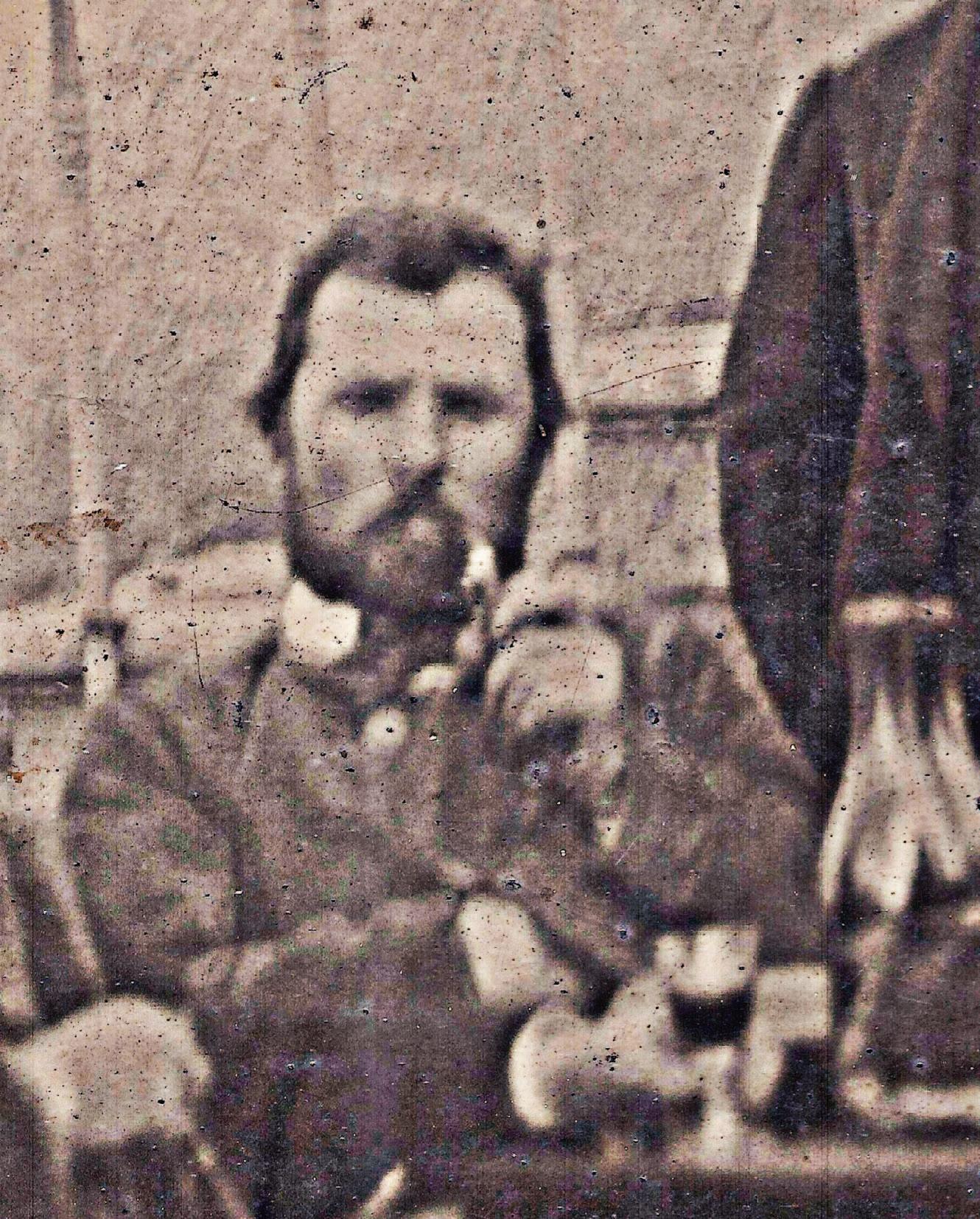NICÉPHORE
Cahier de photographies

VINCENT VAN GOGH
SURROUNDED BY HIS FRIENDS
Se trouve à Senigallia chez Serge Plantureux - via Fr.lli Bandiera 41
NUMÉRO 3
30 SEPTEMBRE 2024
01.4 (1e ZONE 4e PÉRIODE)


Se trouve à Senigallia chez Serge Plantureux - via Fr.lli Bandiera 41
NUMÉRO 3
30 SEPTEMBRE 2024
01.4 (1e ZONE 4e PÉRIODE)
Au lecteur 5
Examen d’une épreuve directe sur carton 13
Identification de quatre hommes assis 23
Le Cinquième : Vincent van Gogh ? 41
Vérification de la date, décembre 1887 ? 47
Compatibilité des emplois du temps 48
Exposition du groupe du Petit boulevard 54
Identification du lieu, un escalier 57
Le Cri du Peuple, 7 septembre 1887 64
La Salle de répétition du !éâtre-Libre 66
Van Gogh expose rue Blanche 68
Signac expose rue Blanche 70
Éléments de reconstitution du contexte 78
Provenance du carton photographique 83
Hypothèse sur le photographe 93
Quelques lettres en référence à ce jour 99
Portraits et autoportraits de référence 107
Étude des portrait photographiques 115
En conclusion 144
Nicéphore est proposé par souscription
Quelques exemplaires sont réservés aux Amis de la Biennale de Senigallia
An

(détail, agrandissement 4x)
An Investigation into a Singular Day in the Life of Vincent van Gogh
Followed by a Study of the Real or Supposed Photographic Portraits of the Van Gogh Brothers
“I have sixty or eighty square meters of walls to decorate in the rehearsal room. I’ve also thought about the other young artists, those who sometimes paint or sculpt wonders and keep them in their attics. Would you send them a call through your Cri?”
(André Antoine - age 29 , Le Cri du Peuple, September 7, 1887)
Old mines can sometimes reveal forgotten treasures hidden in the darkest corners. Consider the remarkable mountain of Potosí in Bolivia, where, many years after the silver mines were exhausted, thousands of individuals still dig in the darkness, hoping to strike a vein that could lead them to a better life. In the world of art, collectors understand that even a modest object with an impressive provenance can hold untapped potential.
In the 1920s, Ronald Davis, an English-born bookseller, handled many cultural treasures. He earned the trust of numerous high-society figures, particularly Miriam Alexandrine de Rothschild, a collector passionate about artists’ manuscripts, including those of the Neo-Impressionists and Vincent van Gogh.
Davis was at the peak of his career when, one afternoon in August 1931, he was tragically struck on the neck by a golf club during a practice session in the salon of his Parisian club. He died instantly. His widow inherited a large collection of books, manuscripts, and various papers, which, over time, found their way into the hands of those who knew how to unlock their hidden value.
By the early 21st century, Ronald Davis’s Breton residence was completely cleared out during a sale of household items. Among the mismatched kitchenware, books, and modest decorations, two envelopes containing unusually dark photographic prints caught the attention of a journalist from the Télégramme de Brest and her companion. ey decided to purchase the mysterious prints.
One of the prints featured a group portrait of six men, two of whom were dressed in traditional Breton costumes from Pont-Aven. is led the journalist to believe the photo might be linked to the artists of the Pont-Aven School. She began to attempt identifying the faces, speculating that they could belong to Félix Jobbé-Duval, Paul Gauguin, and Émile Bernard.
After being contacted to pursue the investigation, it took me a year to confirm these initial identifications and determine the location where the photograph was taken: the courtyard of 9698 rue Blanche in Paris. e three other figures were also identified: André Antoine, founder of the éâtre-Libre; Hendrik Koning, a young Dutch painter; and, finally, Vincent van Gogh himself, a previously unknown photographic portrait of the artist during his time in Paris.
News of this discovery, along with the upcoming auction of the photograph in Brussels, stirred significant excitement, spreading from art enthusiasts to the broader media, even reaching North American television.
e Van Gogh Museum in Amsterdam issued an o"cial statement rejecting the conclusions of the investigation, particularly the identification of Vincent van Gogh. However, a few years later, the childhood photograph of Vincent, used to contest the finding, was reattributed to his brother éo, reigniting the debate*.
It’s important to acknowledge that even the most prestigious museums are not infallible. In today’s world, cultural institutions face enormous pressures, making it nearly impossible for them to engage in open debates. Imagine the financial and legal consequences the Van Gogh Museum administrators would face if they had to reconsider the authenticity of Van Gogh’s self-portraits or reattribute certain images to his brother éo.
Today, research on Van Gogh’s life has advanced, and it’s time to publish this investigation. e photographic prints have since joined the collection of a knowledgeable New York-based collector. Recently, a remarkable exhibition at the Musée d’Orsay, dedicated to the last months of Van Gogh’s life in Auvers-sur-Oise, reignited public interest in his life and work. is group portrait, though a somewhat blurry image of Van Gogh in Paris, remains significant documentation of a crucial time in his life.
e photo was taken on a particular day, the same day Van Gogh exchanged paintings with Gauguin and had an argument with Bernard, following their visit to the exhibition Van Gogh had organized at the Grand Bouillon restaurant. Van Gogh later led his companions to the éâtreLibre rehearsal space on rue Blanche, just a few hundred meters away. A famous dispute occurred in this setting, with repercussions that would play a pivotal role. Without intruding on the work of art historians and critics, it’s possible to connect this event to Émile Bernard’s well-known jealousy, expressed harshly against Paul Signac, with whom Van Gogh was exhibiting at rue Blanche. is confrontation was followed by the first letter Van Gogh wrote to Bernard, marking the beginning of their important correspondence. Paul Gauguin’s first letter to Van Gogh also echoes this very day.
Historians will have ample opportunity to investigate how this Parisian episode may have influenced Van Gogh’s decision to leave for Arles, a move that preluded one of the most decisive periods of his career.
An exhibition will accompany the publication of this investigation, available in English, Italian, and French, allowing the public to form their own opinions. All feedback and contributions from institutions and experts will be welcomed with the utmost respect and consideration.
Serge Plantureux, Senigallia, 30 septembre 2024
*https://www.vangoghmuseum.nl/en/about/news-and-press/news/mistaken-identity-vincent-and-theo

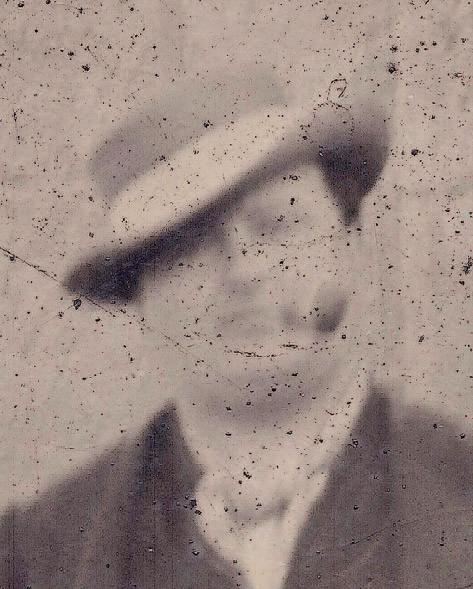

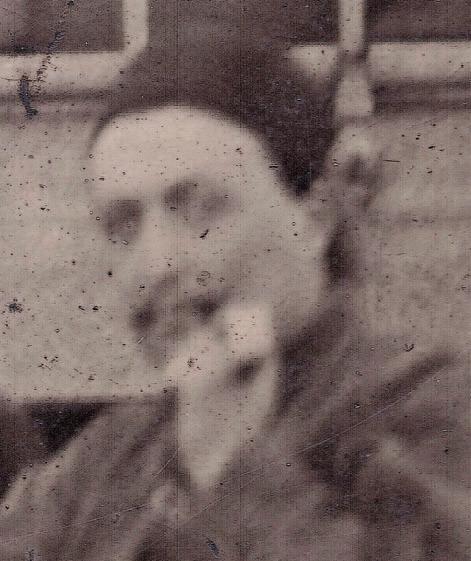
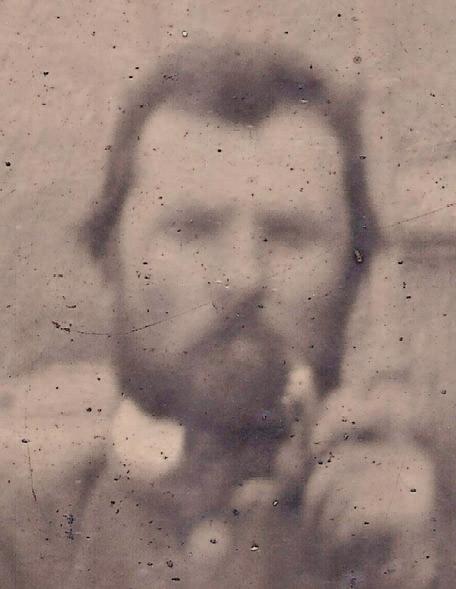
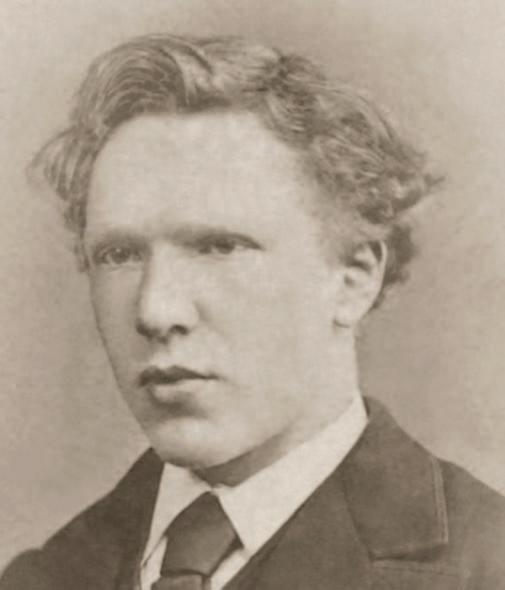

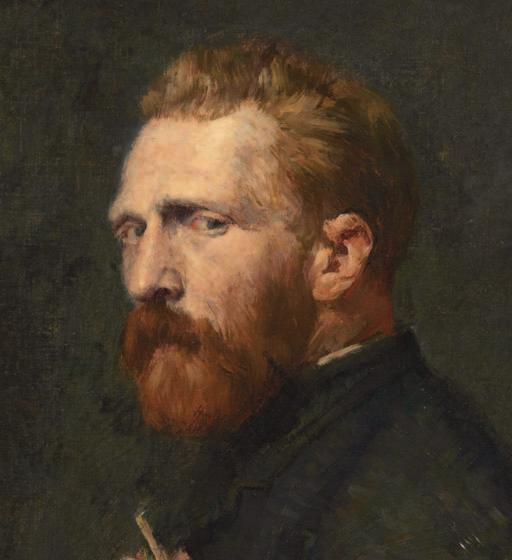
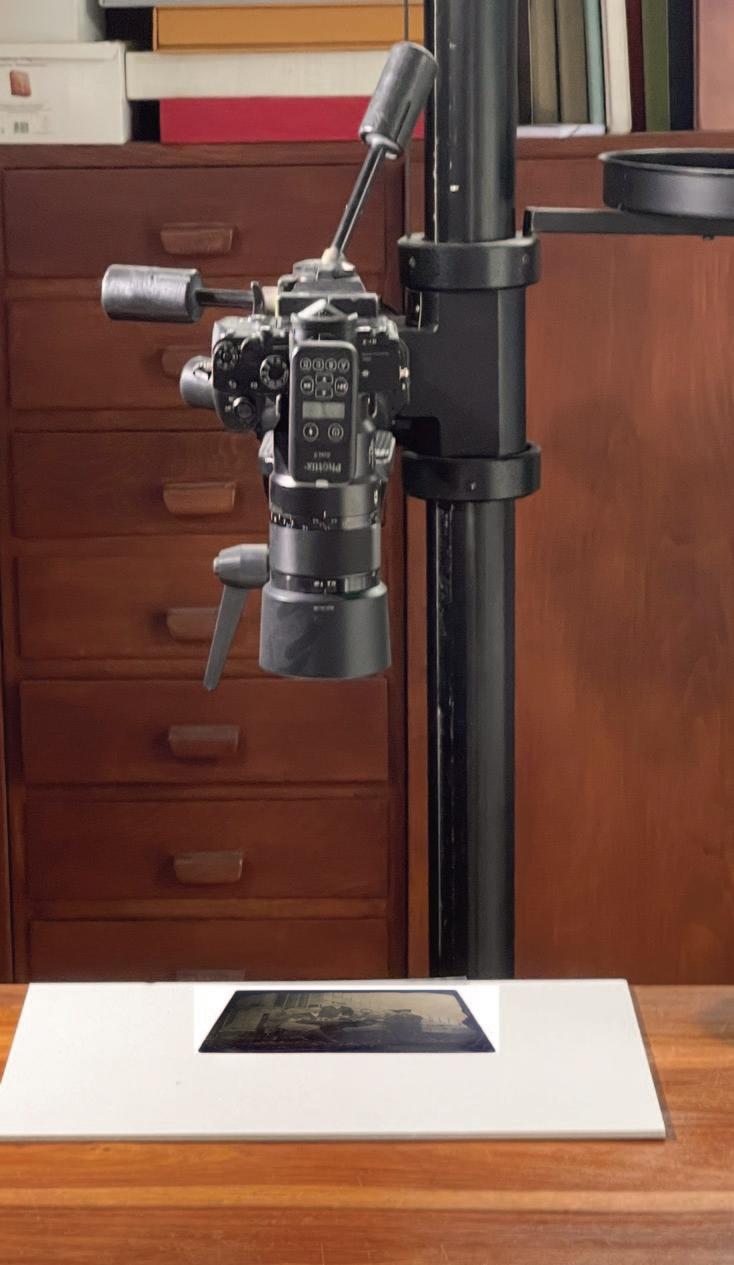

• Stamp: “Gautier Martin in Paris”
• Direct Print
• Reversed Image
• Low Contrast
The first clue that allows us to begin this investigation is the presence of a stamp in the upper right corner. It is a dry stamp, slightly embossed, visible on the front of the card: “GAUTIER MARTIN À PARIS, breveté S.G.D.G.”. Notably, the stamp precedes the photographic layer, which has partially covered it.

This name points us to the company Gautier Martin, first mentioned at 28 rue de Ménilmontant in 1862, and later at 62 rue Charlot in the almanacs of 1863 and 1864.
Gautier (Martin), photography accessories, 62 rue Charlot (Almanach Didot-Bottin, 1863)
The following year’s publication provides more details about the activity:
Gautier (Martin), framing, photography supplies, photographic cards, direct prints, patented S.G.D.G., 62 rue Charlot. (Almanach Didot-Bottin, 1864)
The term “breveté S.G.D.G.” (patented without government guarantee) leads us to sift through patent directories, which list one filed on April 4, 1861, by Frédéric Mérienne, a commercial representative and occasional inventor.

The patent describes a process for a “photographic card soaked in oil, dried in an oven, colored on both sides, dried again, polished with crushed pumice stone, then with tripoli, and finally varnished and dried in the oven one last time.”
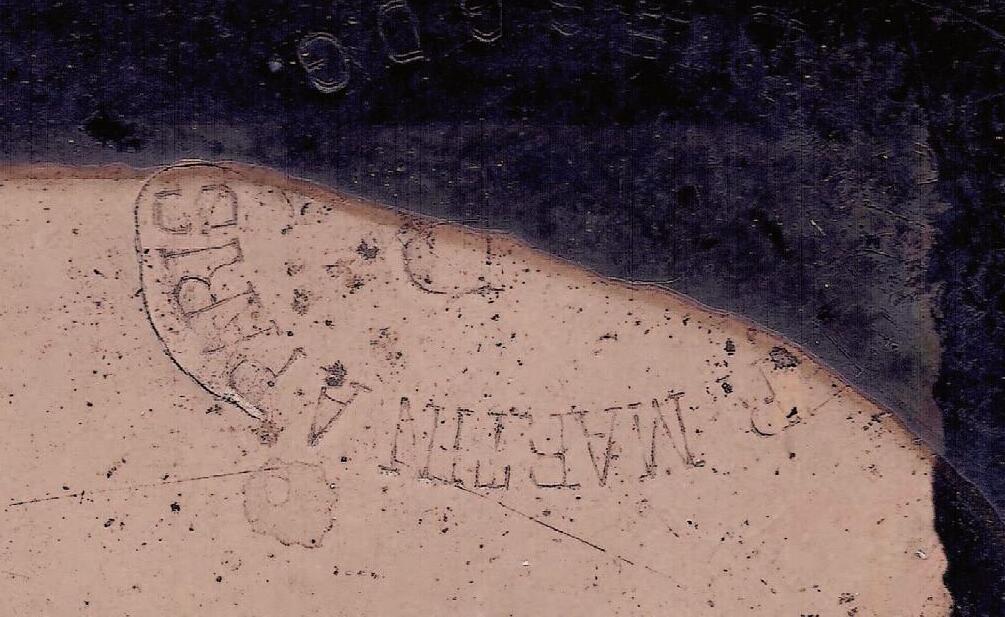
We searched for other examples in private collections, institutions, and among dealers. So far, we have only found one other example, discovered in the same archives. It features a portrait made around the same time, in the same courtyard (see subsequent pages). Notably, it also bears the same stamp.
These black cards, oven-dried, correspond to a patented invention from 1861. This patent doesn’t concern a photographic process itself but rather a support, likely distributed by a single company in the early 1860s, which ultimately failed to achieve success. These cards, like Bristol board or stationery, are not chemical products and have no expiration date. It is quite conceivable that a photographer from the 1870s, during the era when ferrotypes on metal were popular, was familiar with this technique and might have chosen to use these recovered cards, especially with young artists.
The history of photography is particularly cruel toward inventors. It is filled with failures, bankruptcies, fleeting inventions, and bright, creative ideas that never found their audience or success within a reasonable timeframe.
Every so often, collectors stumble upon curious and singular photographic objects, of which few examples have survived. Fortunately, there is a reliable resource: patent records, which allow us to trace certain biographical details of these many inventors.
We need to explain the term direct positive print: e appearance of the image is very similar to that of ferrotypes (or tintypes) and pannotypes, which are direct images that are both positive and negative at the same time.
e first description of these types of images, under the name amphitype, is attributed to Sir John Herschel in 1844: “Contributions to Actino-Chemistry. On the Amphitype, a New Photographic Process,” Athenaeum, #886 (October 19, 1844), 954. In this article, he describes a photographic process that produces images that are simultaneously positive and negative.
e English term melanograph is a commercial name for a photograph printed on paper using a process similar to that of the ambrotype and tintype. Despite the poor quality of the images produced by this process, its low cost ensured its survival in certain parts of the world.
e French, however, give credit to Parisian inventor Adolphe Martin, who was the first to publish, in 1853, the photographic process that became the foundation of the ferrotype family.
“Direct positives, known as ferrotypes (Adolphe Martin’s process). In 1852 and 1853 (Reports of the Academy of Sciences), Adolphe Martin, a learned professor of physics, invented direct positive prints and provided formulas to use on glass, metal plates, or any surface coated with a su!ciently resistant varnish.
We are keen to specify these exact dates because the inventor, as often happens, has been completely forgotten. is process, which later came back to us as the ‘American process,’ was executed on thin sheets of varnished tin imported from America; in reality, only the material came from America. is process was also called ‘ferrotypes’ or ‘ambrotypes.’
e use of Adolphe Martin’s processes allows for very pure prints without any haze. e reduced silver forming the image appears white by reflection, thus producing a direct positive print. If the support is a glass plate, it can be placed on a black background or coated on the back with a dark varnish. e glass can be replaced by any other support coated with a dark varnish to achieve the same result. It is also possible to detach the collodion print from its support and transfer it to a surface prepared to receive it. Transferring these positives to wood for engraving often facilitated the engraver’s work.
“Adolphe Martin’s invention and the so-called ‘ferrotype’ photography experienced great expansion; this process was especially used by itinerant and fairground photographers because it allowed for quick and inexpensive image production. It was even incorporated into automatic machines capable of producing a portrait of the person posing after inserting the required sum.

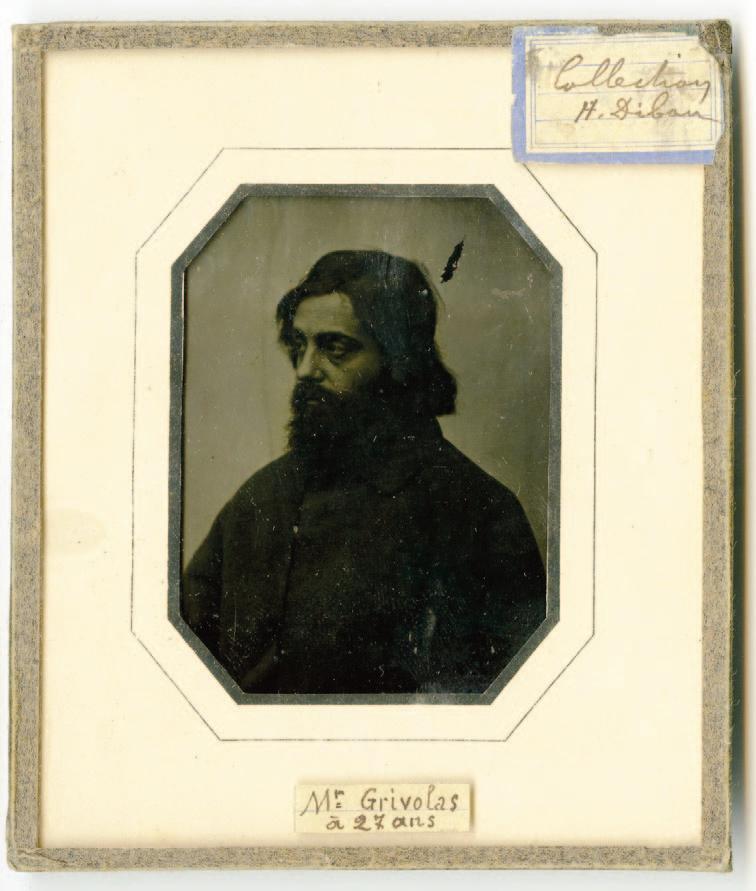
• Exemples de ferrotype -image directe sur tôle noircie - et d’ambrotype - sur verre - des années 1870-1880 (collection Atelier 41)
Two original prints by Adolphe Martin were exhibited by one of his sons, M. Ch. Martin, under the label: ‘Two ferrotypes executed in 1851-1852 by Mr. Ad. Martin, Doctor of Science, inventor of ferrotyping.’ Another larger print was presented by the French Photographic Society.” (Alphonse Davanne & Maurice Bucquet, Le Musée rétrospectif de la photographie à l’exposition universelle de 1900, pp. 31-32).
Mérienne’s blackened card, with its “surface coated with a su!ciently resistant varnish,” thus fits into this family of inventions.
Why are these processes so rare? Why are they almost never found in attics? Sometimes, there’s a very simple reason, but one that can’t be guessed until one is confronted with it.
As Charles Fabre plainly notes in his Traité encyclopédique de photographie (Paris, 1889): “These various processes were very rarely used; they have the disadvantage of producing a mirror image of the subject.” (Vol. III, page 7).*
This observation is crucial: the image is reversed, as is the case for most direct positives, from the majority of daguerreotypes to ferrotypes and pannotypes. To correct the image, a mirror would need to be added inside the camera, which would significantly increase both the cost and exposure time due to the reduction in sensitivity.

* For more details on this phenomenon, please refer to Sabrina Esmeraldo's article in the
It’s worth noting that the ribbon of the Légion d’honneur thereby finds its proper place on the lapel of the man with gray hair, whom we will identify first.
As a result, for the sake of clarity in the discussion, we will restore the image to its correct orientation by applying symmetry..


Another disadvantage is the low contrast of the image.
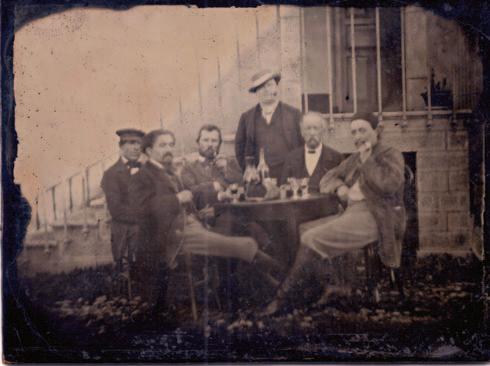
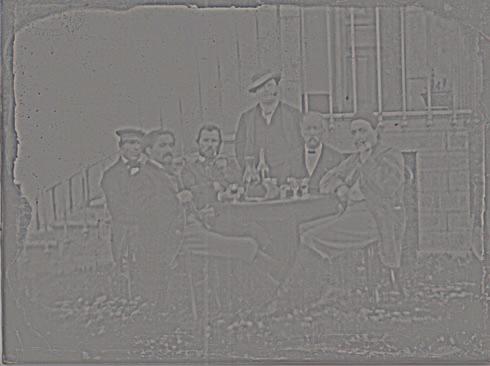
Sergio Marcelli, a professional photographer from Ancona and author of Trattato fondamentale di fotografia, performed a simple and reversible digital contrast enhancement to facilitate the reading of the images on the following pages.
Above, on the left: a scan of the original. The goal was to improve the sharpness of the faces. To achieve this, a manual contrast mask was created in Photoshop, visible on the right.
Below: the mask was applied to the reproduction of the original.
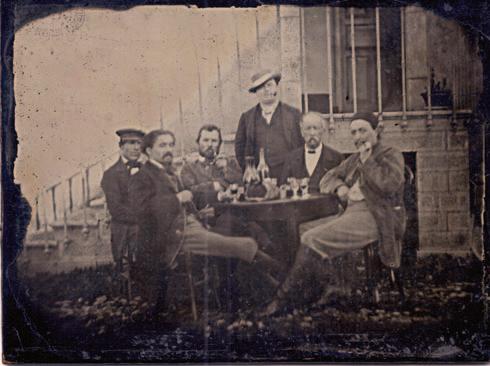
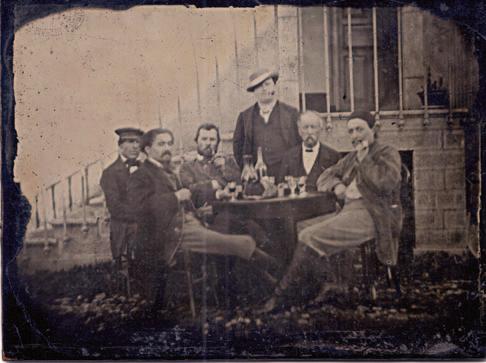
• Contrasted intermediate digitization
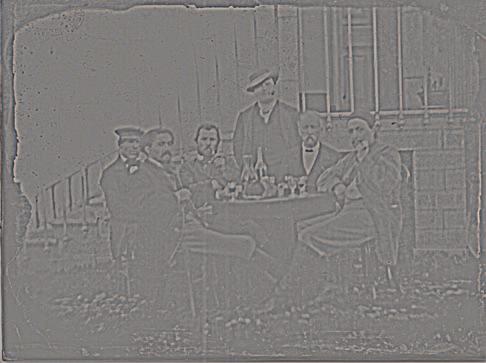
• Second contrast mask
The operation was then repeated, creating a new contrast mask, also visible on the right. This method allowed for a working image where the contrasts are more clearly defined.
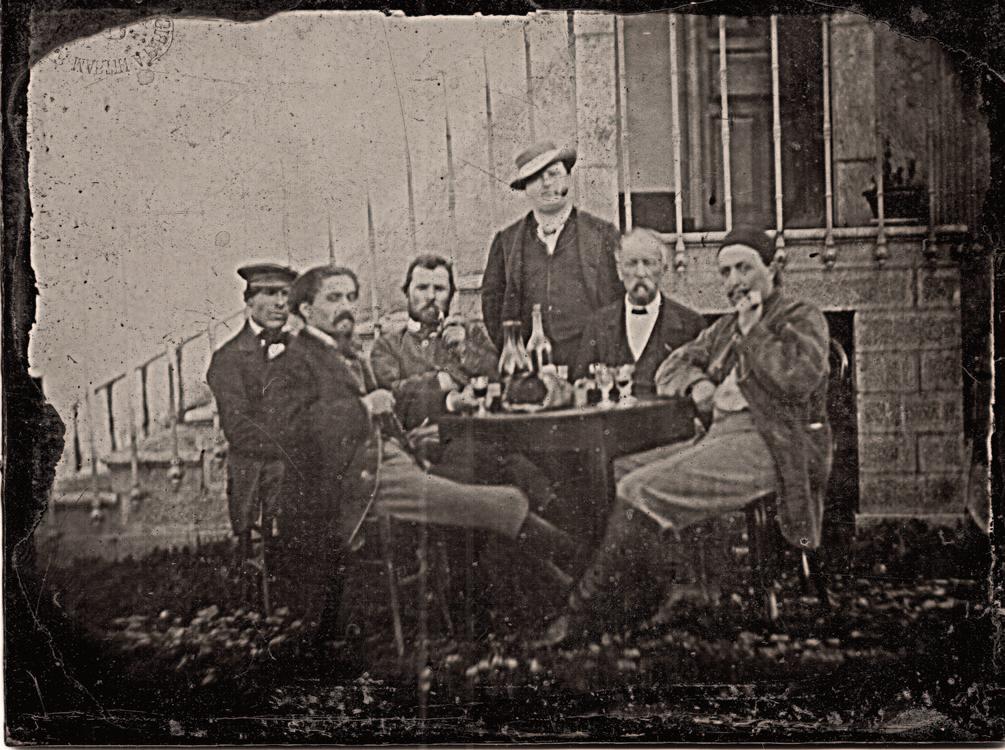
• Image contrastée
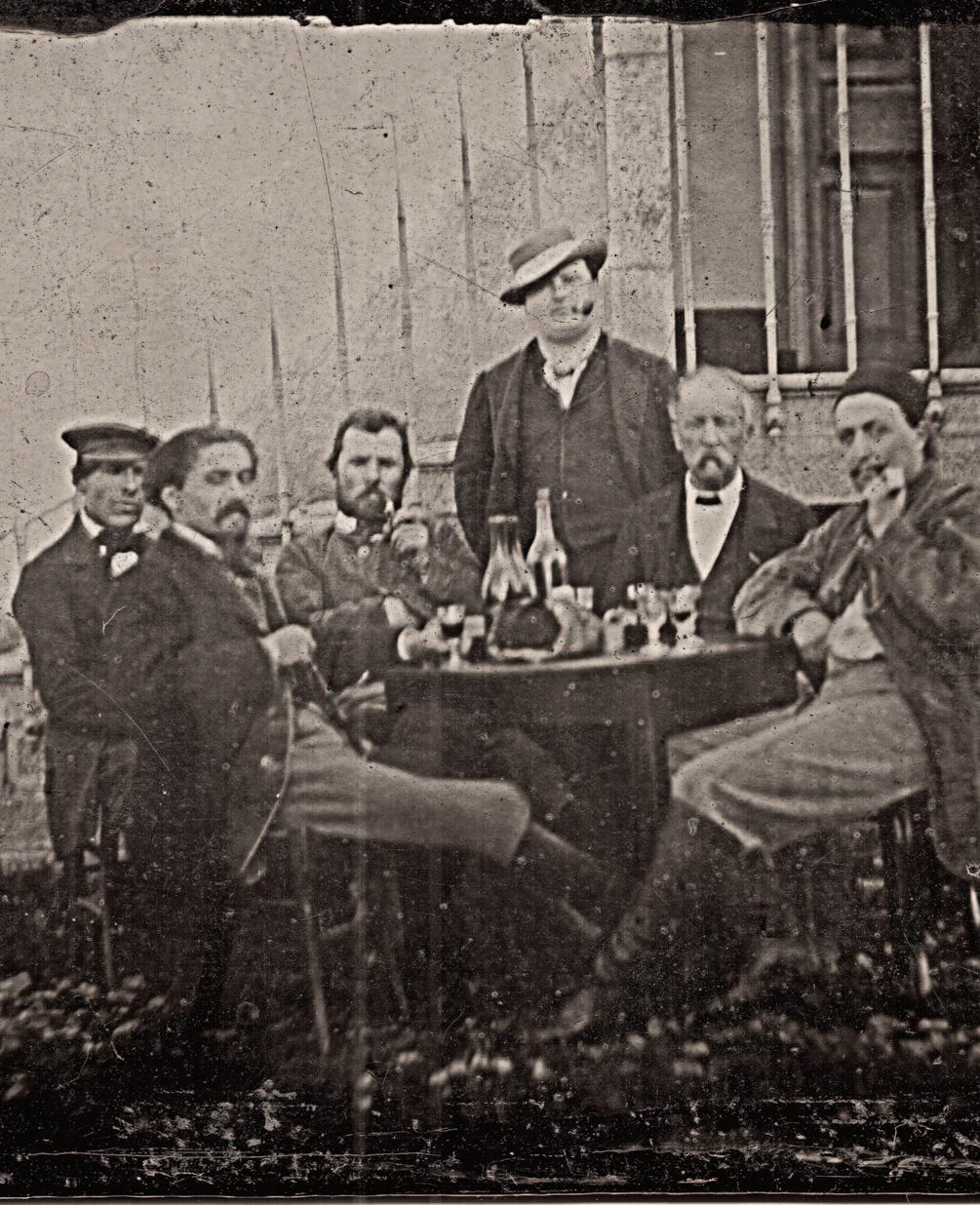
• FJD - Félix Jobbé-Duval
• PG - Paul Gauguin
• EB - Émile Bernard
• AHK - Arnold Hendrik Koning
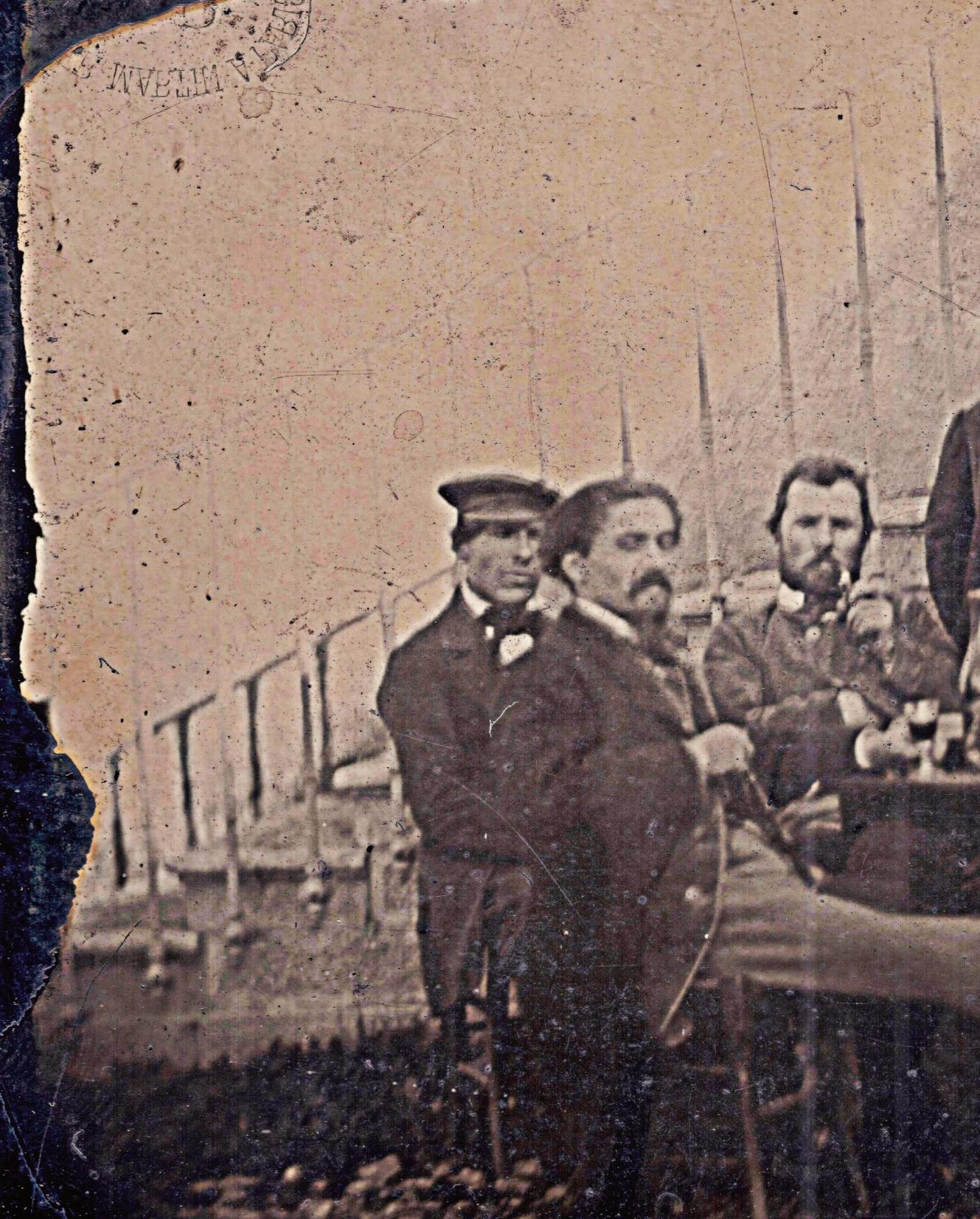
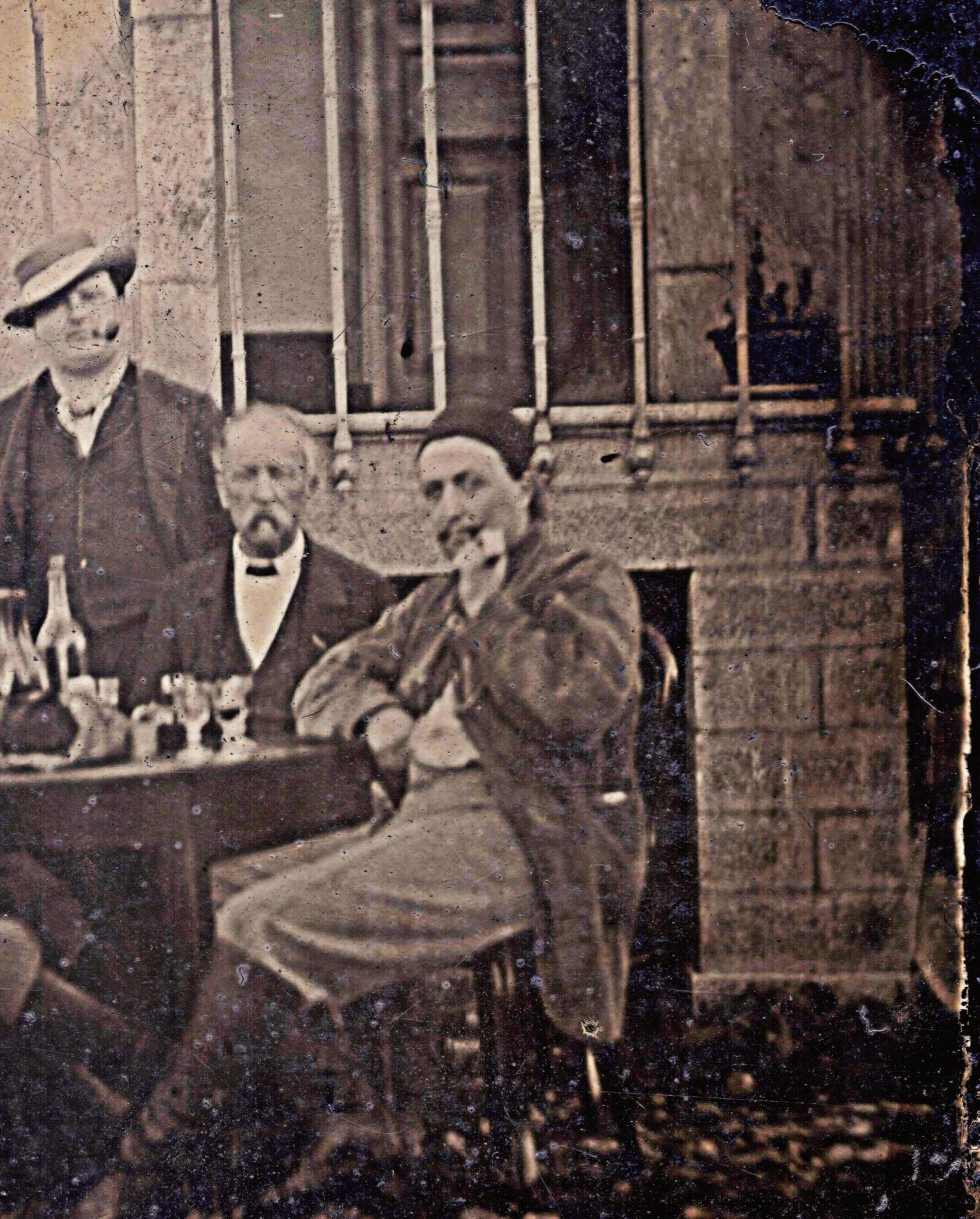
The older man seated toward the right in the corrected image is distinguished by the ribbon of the Légion d’honneur that he proudly displays. He is Félix Jobbé-Duval (1821-1889), a painter from Carhaix (Finistère), who traveled extensively through Brittany from the 1860s and was already familiar with the Pension Gloanec. Jobbé-Duval was a close associate of Paul Gauguin, having spent time with him after Gauguin’s return from Copenhagen. In 1880, Jobbé sublet his pavilion on Rue de Carcel to Gauguin, where his son Clovis stayed as a boarder with the Jobbé family later that year.
A well-regarded painter, Jobbé-Duval was awarded the Légion d’honneur in 1861, despite his strong left-wing political leanings. A disciple of utopian socialist Charles Fourier, he participated in the 1848 Revolution and openly identified as a Freemason, a member of the “Zélés Philanthropes” lodge. Although he did not actively oppose the Second Empire, his political activism was significant.
During the Paris Commune, following France’s defeat by Prussia, Jobbé-Duval became an officer in the Commune’s forces in the 15th arrondissement, where he helped reorganize the National Guard. Despite his efforts, he could not prevent the escalation of conflicts with government troops and the insurrection against the provisional government. After the brutal repression by the Versailles government, he was granted amnesty and gradually reconciled with the authorities. He even became a municipal councilor for his arrondissement, a role he held until his death. He was instrumental in establishing art education in primary schools.*
In 1883, symbolizing this reconciliation, Jobbé-Duval painted a work depicting the official takeover of the Paris Municipal Council in the newly rebuilt Hôtel de Ville, which had been destroyed during the Commune. He portrayed himself in the painting, witnessing this symbolic event. Moreover, he played an important role in Gauguin’s personal life, serving as the witness to the birth of Gauguin’s son, Jean René, in 1881.
Félix Jobbé-Duval, a multifaceted leftist figure, loyal to his political convictions and his artistic friendships, left a lasting impact on the artistic and political landscape of his era, holding significant positions in the Paris Council until his resignation (due to health reasons?) on April 26, 1887.
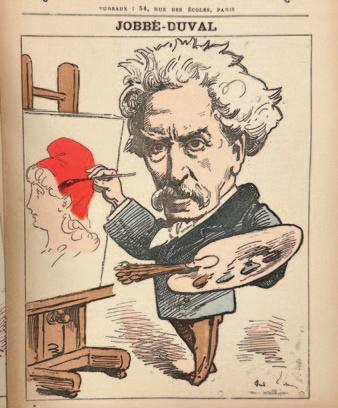
• Les Hommes d’Aujourd’hui, n°56, 1879
* «As soon as he was appointed to the Paris Municipal Council, he set about reforming the teaching of drawing in the communal schools of Paris. For six years, he had to battle against the education authority for the Seine department, against members of the Institut ..., against personalities of all kinds, hostile by temperament to a project that was to upset all school habits.” (Les Hommes d’Aujourd’hui, n°56, 1879).

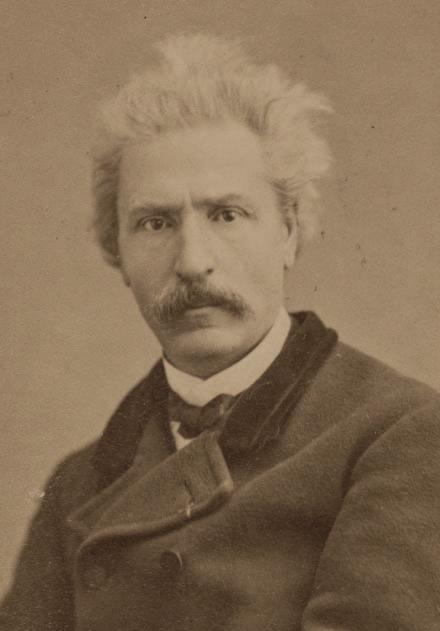
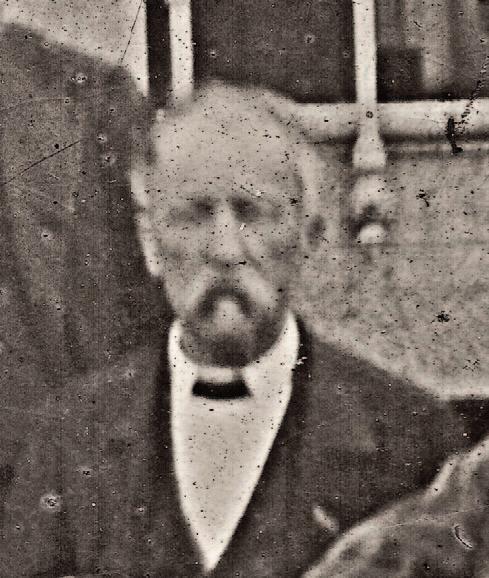
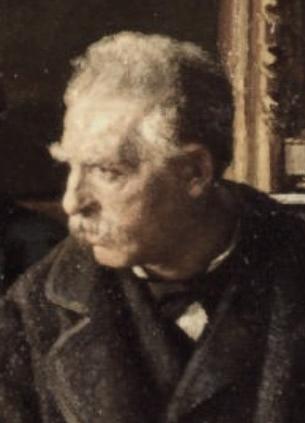
Félix Jobbé-Duval (1821-1889)
Le bureau du Conseil Municipal en juillet 1883
Oil on canvas, 154 x 261 cm
Musée Carnavalet
Even though Félix Jobbé-Duval resigned from the Paris Council in the spring of 1887, he played a significant role in promoting the teaching of Fine Arts in municipal schools and advocating for Parisian artists. He generously offered his insightful advice and direct, selfless support, helping to protect and advance the careers of many young artists, notably Paul Gauguin, whom he assisted on several occasions.
Jobbé-Duval’s presence among this group of young artists can be seen as that of an esteemed guest, an “official” figure invited with pride by the younger generation to witness their first exhibitions.
History remembers that it was Jobbé-Duval, a Breton by birth, who advised artists in Père Tanguy’s shop to explore Pont-Aven in Brittany, “that little place where life is cheap.” Émile Bernard later said, “It was in Père Tanguy’s shop that the Pont-Aven school was born.” (Bernard Vassor, Autour du père Tanguy).

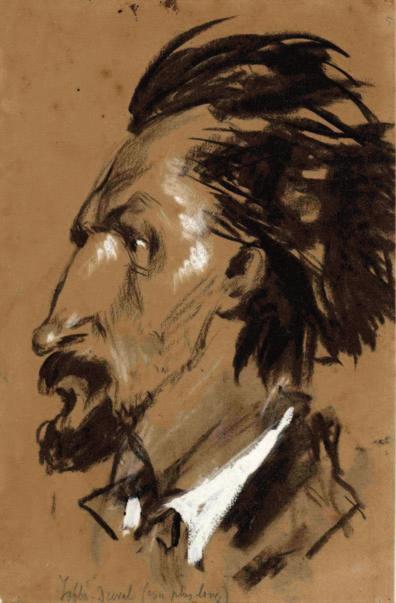

Seated next to the Breton painter Félix Jobbé-Duval, we recognize Paul Gauguin, loyal to his old friend who had advised him to discover Pont-Aven. Two of the men present are even wearing the traditional “bragou berr,” the short and slightly baggy pants typical of the region, a detail that confirms the connection with Pont-Aven, where Gauguin and Émile Bernard had stayed in 1886.
Gauguin sports an astrakhan hat, similar to the one he wears in a self-portrait from the same period, and holds his pipe in his left hand.
In 1886, Paul Gauguin met Émile Bernard for the first time in Pont-Aven, and Vincent van Gogh in Paris. After a taxing journey to Panama (March-April 1887), followed by a few days on Taboga Island to escape malaria, and then a stay in Martinique (June-October 1887) with Charles Laval, Gauguin returned to Paris on November 13, 1887, staying with his friend Schuffenecker.
During this time, Gauguin visited the exhibition organized by Vincent van Gogh at the Restaurant du Chalet, showcasing works by the artists of the “Petit Boulevard”: Van Gogh, Toulouse-Lautrec, Bernard, Koning, and Anquetin. With fifteen years of painting experience behind him, Gauguin was impressed by the exhibition. Vincent then proposed exchanging two of his paintings for one of Gauguin’s.
Throughout the winter of 1887, Gauguin saw Vincent and Théo van Gogh several times. Théo bought some of his paintings and ceramics, and a friendship blossomed between Vincent and Gauguin. By the time Vincent left for Arles, the two had become close friends.
At the beginning of 1888, Gauguin decided to return to Pont-Aven to paint and recover his health, weakened by bouts of dysentery and malaria contracted in Panama. He was joined by Émile Bernard at the beginning of August, marking the start of their artistic collaboration in Brittany.



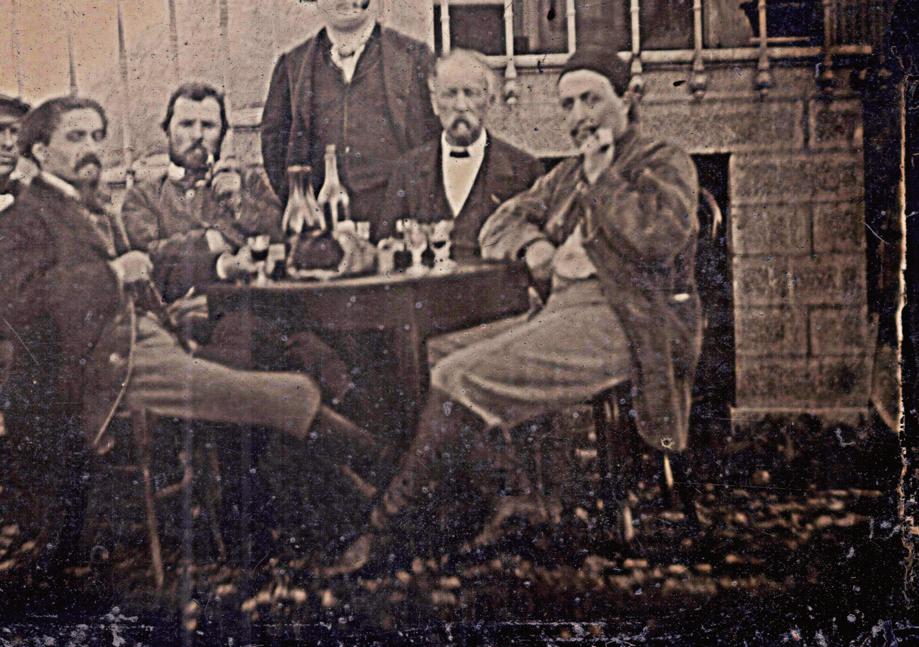
•
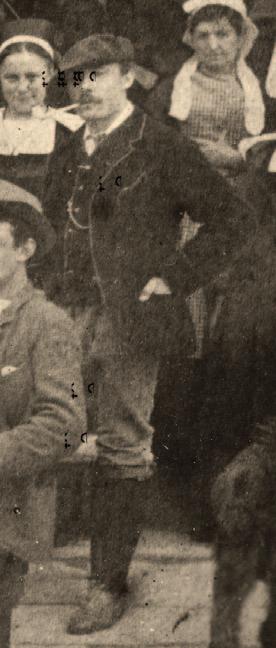
Paul Gauguin (1848–1903)
Self-Portrait with Palette, Paris, before 1891
Oil on canvas, 55 x 46 cm
Private Collection
The painting bears a dedication: “A Ch. Morice de son / ami P. Go.,” given by Paul Gauguin to Charles Morice.
This portrait was first published in 1903 by Armand Seguin and exhibited from 1905 onward in Weimar and Paris.
“Several catalogs give slightly different dimensions (and dates), though it is most certainly the same painting…
Gauguin still has a beard, as seen in Self-Portrait with Friend Carrière no. 384, but his face looks tired, with more pronounced bags under his eyes. As in Self-Portrait with Idol no. 415, his hair is long, as it was when he arrived in Tahiti, suggesting the work dates between these two paintings, around 1890-1891. It is based on a photograph, probably from 1888, owned by Mrs. Jeanne Schuffenecker, but Gauguin altered it, adding a beard, mustache, and long hair.
This portrait was likely given to Charles Morice before Gauguin’s departure for Tahiti, as a gesture of gratitude to the writer, who had introduced him to Stéphane Mallarmé, Octave Mirbeau, and had organized a gala for his departure.” (Georges Wildenstein, Gauguin, Les Beaux-Arts, éditions d’études et de documents, 1964, no. 410, p. 158, dated 1891)

The identification of Émile Bernard is primarily based on a famous caricature titled “Le Synthétisme, un cauchemar!” (“Synthetism, a Nightmare!”), attributed to Gauguin by Schuffenecker (folio 18 in the Album Gauguin, housed in the Department of Graphic Arts at the Louvre, Paris). In the caricature, Bernard is seen wearing the bragou berr, the traditional short and slightly puffed pants from the Pont-Aven region, tucked into boots—just as he does in our image.
The youngest member of the group, Émile Bernard met Paul Gauguin at Pont-Aven thanks to Émile Schuffenecker during the summer of 1886, while he was traveling through Brittany on foot. It was also around this time that he began to regularly encounter Vincent van Gogh at the color merchant Père Tanguy’s shop (Julien Tanguy, 1825-1894). Together, Bernard and Van Gogh would often take walks from Montmartre to Asnières, where Bernard’s parents had a country house. Over the course of 1887, Émile Bernard became a true close friend to Vincent.
The two artists exhibited together, first at the Le Tambourin café, run by former model Agostina Segatori, located at 62 Boulevard de Clichy. After Le Tambourin went bankrupt and was sold in the summer of 1887, they exhibited at the Grand-Bouillon Restaurant du Chalet near La Fourche, along with other painters from the “Petit Boulevard.”
Toward the end of 1887, Bernard tried to convince Vincent to join him for another stay in Pont-Aven, where he wanted to paint again.
He also attempted to dissuade Van Gogh from participating in the exhibition with Signac and Seurat at André Antoine’s Théâtre-Libre rehearsal space, located at 96-98 rue Blanche, but to no avail. Bernard seemingly viewed these artists as rivals for Vincent van Gogh’s friendship.
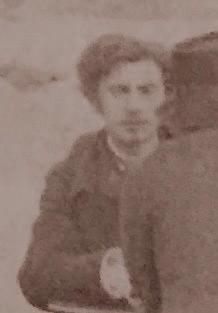

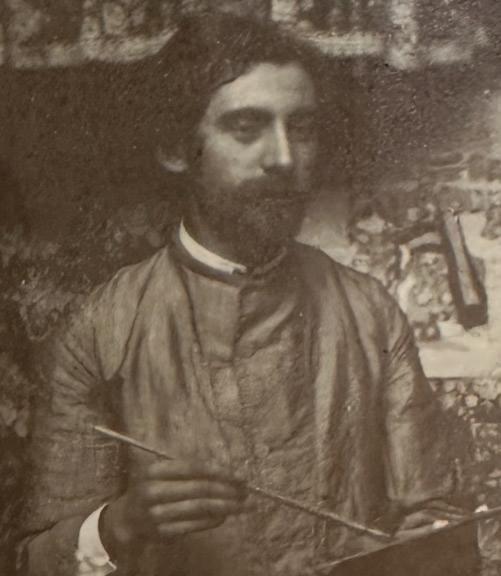

• “Celui-ci c'est Bernard”, “Le synthétisme, un cauchemar !” “This one's Bernard”, ”Synthetism, a Nightmare!” Paris, 1889,
Here are two photographic portraits preserved in Émile Bernard’s archives. It is highly likely that the one on the right is a self-portrait, taken when the young artist was experimenting with photography.
In a letter from Gauguin to Van Gogh, dated September 1888, he writes: “I am studying young Bernard, whom I know less well than you; I believe you will do him good, and he needs it. He has naturally suffered, and he begins life filled with bitterness, inclined to see the worst in people…”
Later, in 1911, Émile Bernard published Van Gogh’s letters through Vollard before selling them in 1928 to Baroness Marianne de Rothschild. The correspondence would later be published by American John Rewald after another transaction in 1938. For fifty years, from 1891 until his own death in 1941, Émile Bernard derived a considerable part of his income from the trade and promotion of Vincent van Gogh’s work.
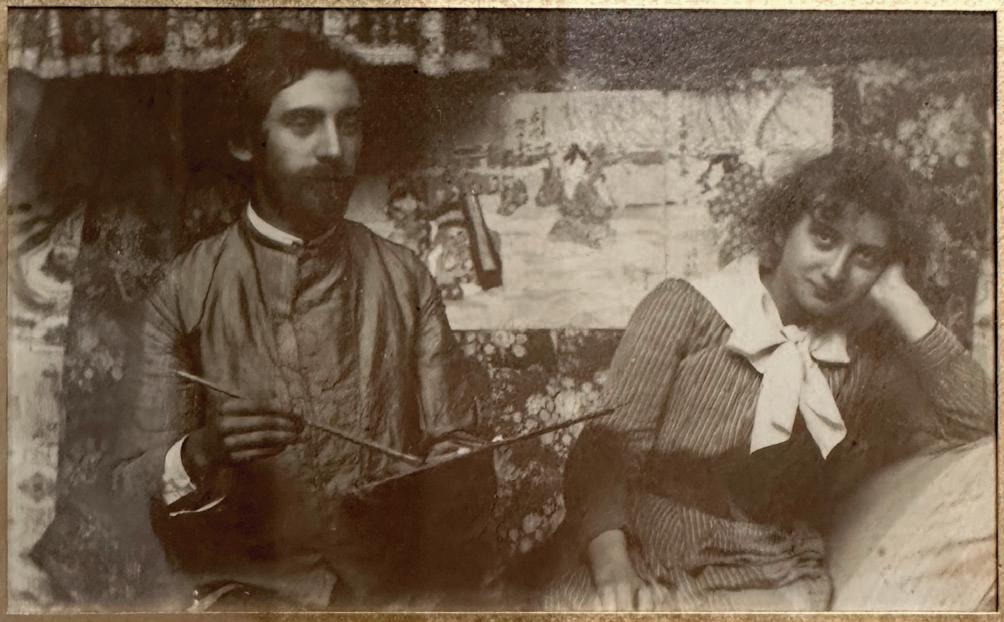
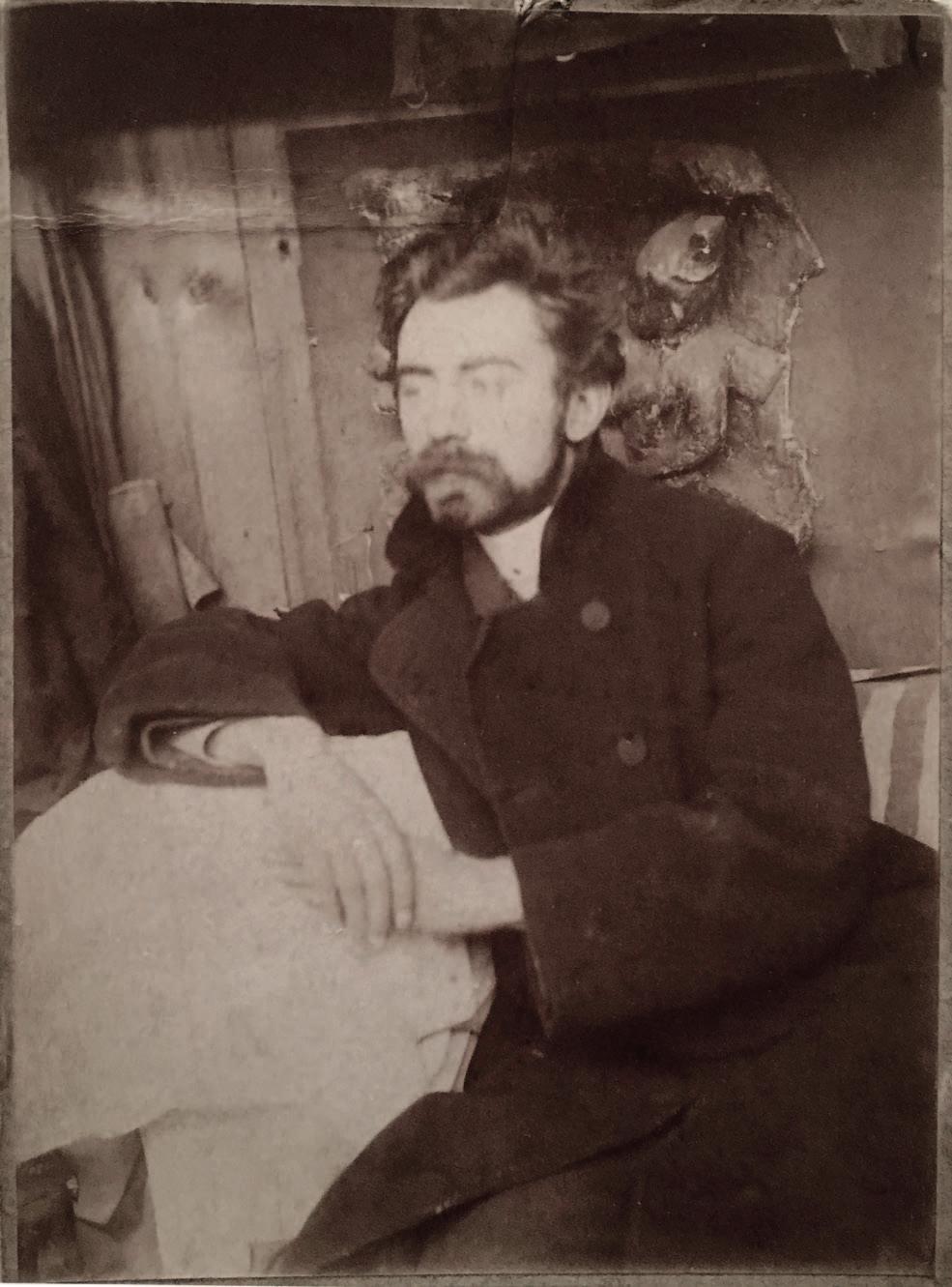
The connection to Pont-Aven was the catalyst for the initial identification of three of the figures. Given these first identifications, the research to identify the other members of the group was naturally limited in time and space, focusing on those surrounding Émile Bernard, Paul Gauguin, and the “Petit Boulevard” group.
The figure on the far left stands out due to the typical Dutch cap he is wearing. There were very few Dutch individuals in the Breton circle.
This led us to consider a young Dutch artist who had exhibited with the “Petit Boulevard” group at the Restaurant Le Chalet in the fall of 1887. Although photographic portraits of this artist are hard to come by, several similarities point us toward Arnold Hendrik Koning (1860-1945), whom Vincent van Gogh affectionately nicknamed “young Koning.”
Koning arrived in Paris in September 1887 at the age of 27. Shortly after, he exhibited alongside Vincent and the “Petit Boulevard” group at the Restaurant Le Chalet. In his recollections of this exhibition, Émile Bernard mentions that Koning had displayed “yellow chrome and vermilion red apples.”
The Van Gogh brothers quickly took a liking to this young painter who had just arrived from the Netherlands. After Vincent left for Arles, Théo hosted Koning in Vincent’s room—and possibly his studio—at 54 rue Lepic from March 14 to May 30, 1888.
A comparison with a wedding portrait of Koning, dating from 1893, reveals some similarities, despite the lack of a contemporary photographic print for direct comparison. This family portrait, taken at his marriage to Maria Catharina Heeley, depicts a still youthful Koning, closely resembling the figure Vincent affectionately called “young Koning.”
In a letter Vincent wrote to Koning shortly after from Arles, dated Tuesday, May 29 or Wednesday, May 30, 1888, he says: “My dear friend Koning, having learned from Théo that you are returning to Holland, I wanted to write you a note to say goodbye. Well, old comrade, I will often think of our time together in Paris, and I am sure we will hear from you once you are back in Holland. It’s very good that you are returning in good shape. If you come back next year, do visit me here. I would love for you to see the colors of this place.” (Mon cher ami Koning, ayant appris de Théo que vous retournez en Hollande, je tenais à vous écrire un mot pour vous dire au revoir. Eh bien, vieux camarade, je penserai souvent à notre temps passé ensemble à Paris, et je suis sûr que nous aurons de vos nouvelles une fois que vous serez de retour en Hollande. C’est très bien que vous rentriez en pleine forme. Si vous revenez l’année prochaine, passez donc me voir ici. J’aimerais tellement que vous voyiez les couleurs d’ici.).
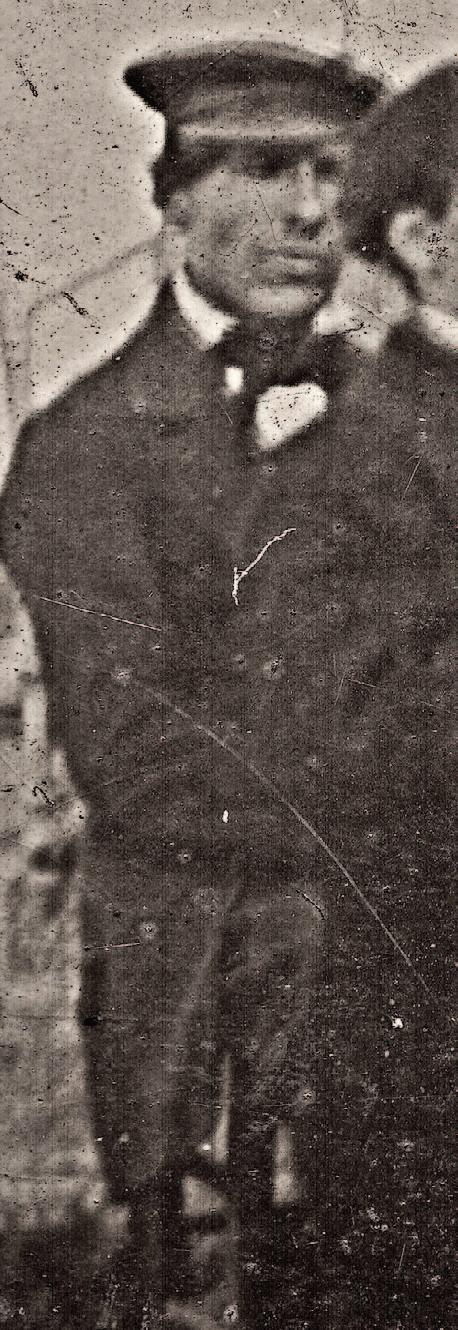
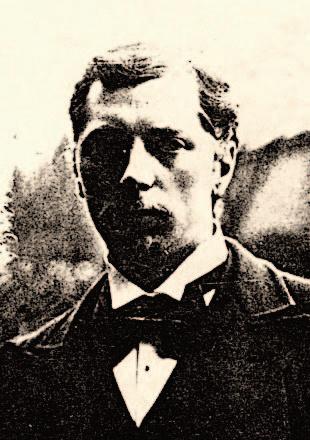

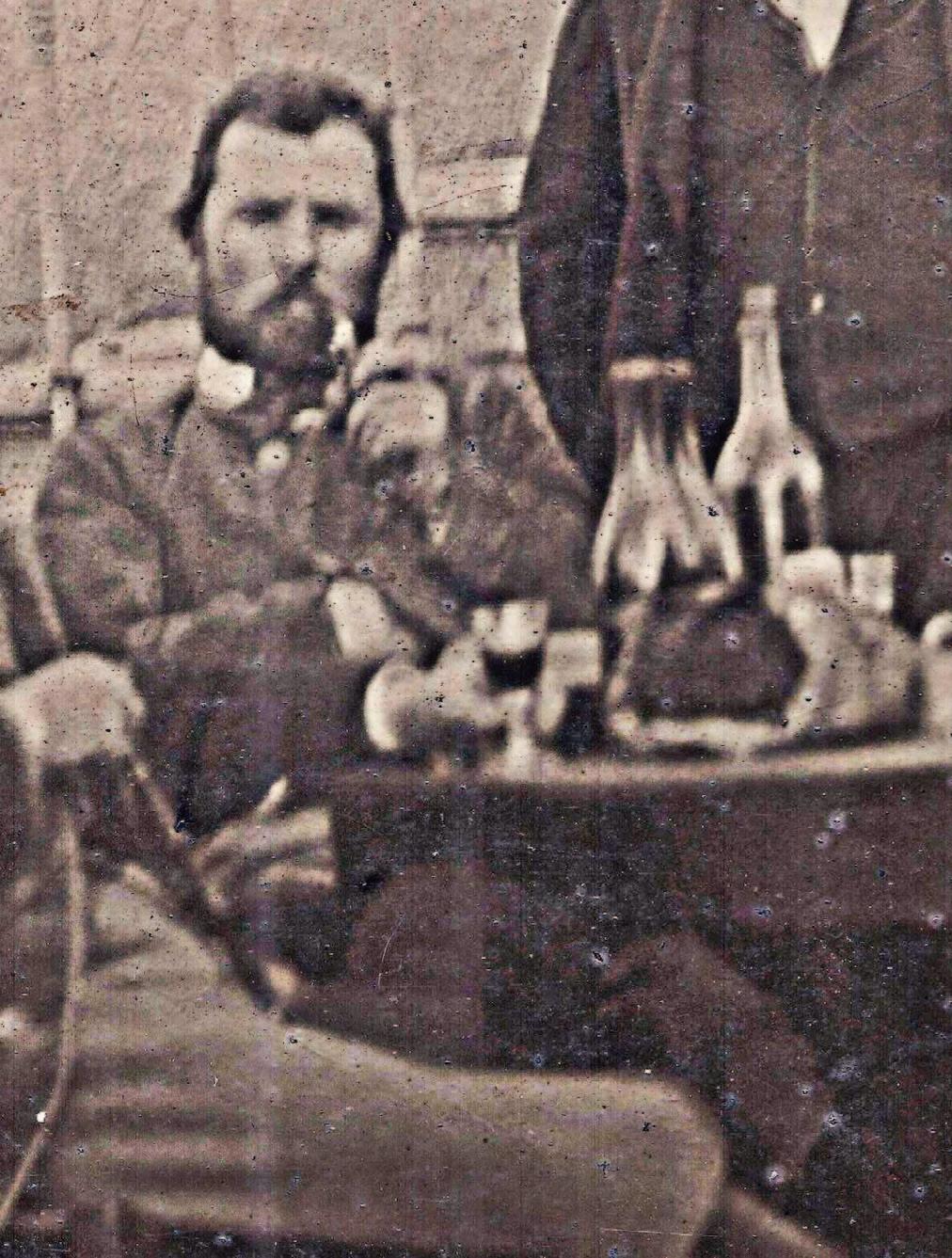
(agrandissement 4x)
• Face and Hair
• Coat, Pipe, and Fur Hat
MMXXIV
To this day, no photographic portrait of Vincent van Gogh during his time as a painter has been authenticated.
In an effort to identify the fifth man, a comparison is made between his face and the famous portrait of Vincent van Gogh painted in 1886 by the Australian artist John Peter Russell, which is known for being a close likeness to its subject.
The analysis begins with an examination of the overall posture of the head, followed by a detailed comparison of features: the forehead, the shape of the eyes, the bridge of the nose, the nostrils, the cheeks, and the position of the ears.
The most striking element lies in the observation of the hair. A comparison is then made of the shape of the eyebrows, the mustache, the beard, the hairline, and distinctive locks of hair.
Finally, based on a suggestion by a Dutch researcher, attention is drawn to a specific lock of hair on the forehead of the man smoking a pipe. This lock bears a resemblance to the one depicted by Paul Gauguin in his painting The Painter of Sunflowers, Arles, autumn 1888.
In a long letter to his brother Théo, dated September 10, 1889, Vincent van Gogh reflects on his portrait: “I know that Gauguin can do things even superior to what he has done, but one must put him at ease, that one! I still hope to do his portrait. – Have you seen the portrait he made of me painting sunflowers? My face has brightened up since then, but it was truly me, extremely fatigued and charged with electricity, as I was at the time.” (Letter 801)
The only recognized photograph of Vincent van Gogh is from when he was 19 years old, taken when he was hired as a clerk at Goupil after four years of apprenticeship, before he had his teeth repaired: “As for my appearance, I’m trying to improve it a little. They are fixing up my teeth. I’ve lost about ten teeth. That’s too many, and it bothers me. It makes me look over forty and that does me no good. So, I’ve decided to address the problem.” (Quant à mon physique, il s’agit de l’embellir un peu. On est en train de rafistoler ma denture. J’ai perdu une dizaine de dents. C’est trop, ça me gêne. Ça me donne l’air d’avoir plus de quarante ans et ça me fait tort. J’ai donc décidé d’y porter remède).
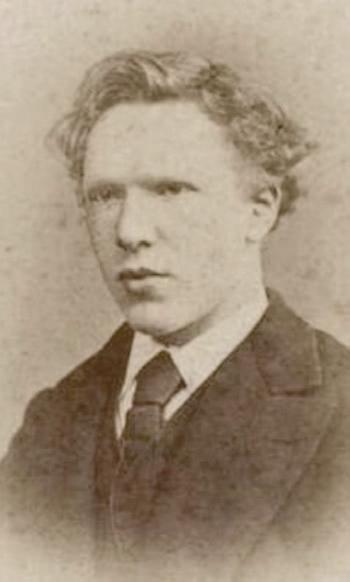
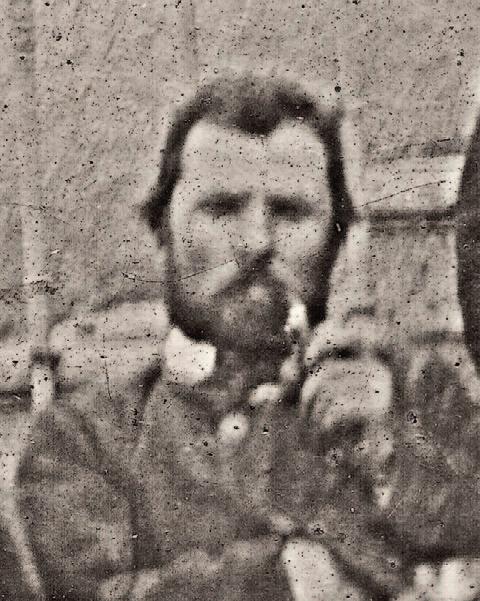
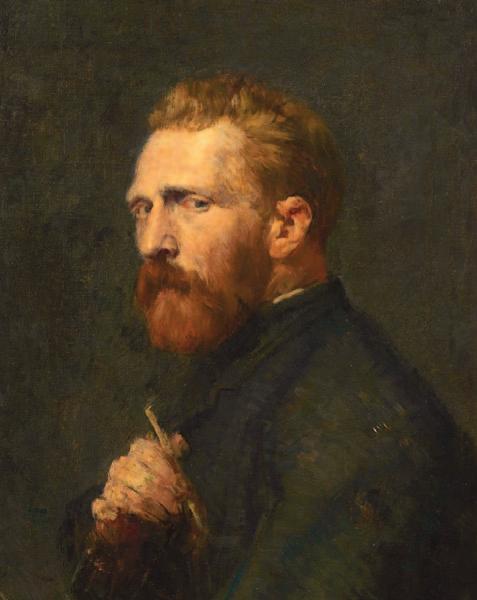
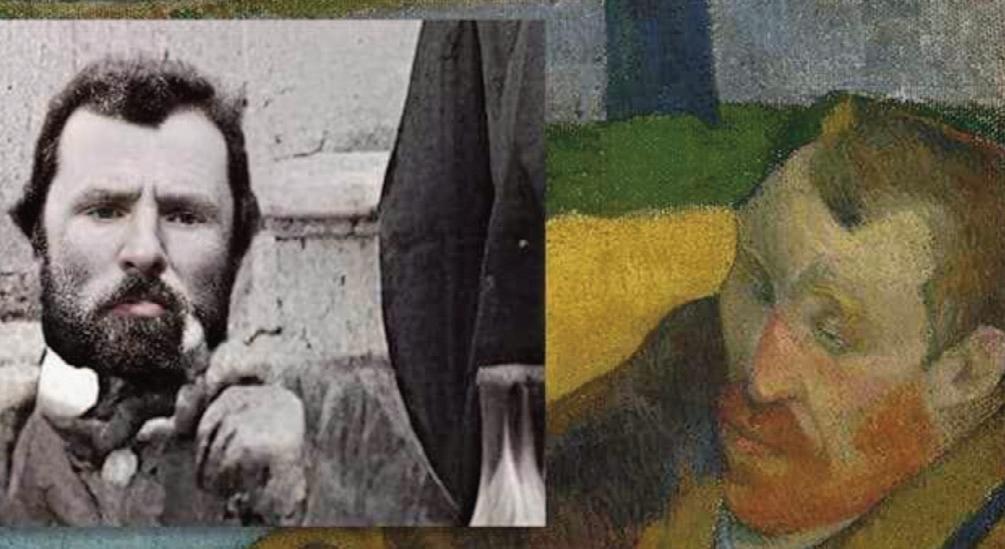
Continuing the analysis, attention turns to his clothing, particularly the jacket, the fur hat placed on the table, and the pipe he holds in his left hand, while his right hand is inside his jacket.
The right hand is considered to be the painter’s dominant hand*. Notably, both Gauguin and Russell depict him holding a paintbrush in his right hand (see pages 109 and 115). It’s also worth noting that a smoker can switch hands, especially a right-handed person who would more easily light their pipe with a match held in their right hand, and then hold the pipe in their left hand for a while.
The jacket appears to be the same as the one Van Gogh is seen wearing in several of his selfportraits. It features a buttoned collar fastened by a single button, identical to the one he wears in Self-Portrait with Bandaged Ear and Self-Portrait with a Palette, dating from December 1887 to January 1888.
Additionally, the man is smoking a pipe, holding it in his left hand, while his right hand is inside his jacket. The pipe closely resembles the one Van Gogh smokes in Self-Portrait with Bandaged Ear, with a metal joint.
Lastly, the fur hat turned upside down on the table is likely his, as the other individuals (except Jobbé-Duval) are either wearing Breton costumes or still have their hats on. Van Gogh paints himself wearing an identical hat in his Self-Portrait with Bandaged Ear.
*https://www.vangoghmuseum.nl/en/art-and-stories/vincent-van-gogh-faq/was-van-gogh-left-or-right-handed
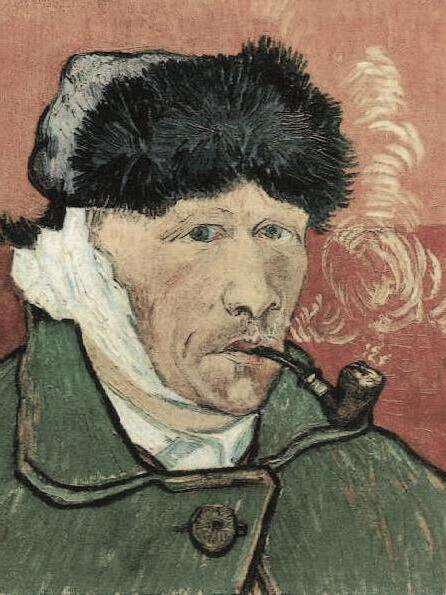


(Almanach des Postes et des télégraphes, detail)
• Schedule Compatibility
• Flowers in Winter
• The “Petit Boulevard” Group Exhibition
• Parisian Locations of Vincent van Gogh
Let’s investigate the schedules of the five first identified individuals.
Paul Gauguin arrived in Paris, very weakened, on November 13, 1887, and left around January 26, 1888. He met Vincent van Gogh shortly after his return and agreed to the idea of exchanging at least one painting for two from the Chalet exhibition. It’s reasonable to conclude that one to two weeks passed between his return and this meeting in Montmartre.
Émile Bernard, who returned from Brittany at the end of summer 1887, was living at 5 Avenue de Beaulieu in Asnières, about 3.5 kilometers from Montmartre. He participated with Vincent in the Petit Boulevard exhibition, where he sold his first painting.
Arnold Koning, who had been in Paris since spring 1887, also took part in the Petit Boulevard exhibition alongside Vincent. After Vincent left for Arles in February 1888, Koning temporarily moved in with Théo van Gogh at the apartment on Rue Lepic.
Félix Jobbé-Duval, who had frequented Paul Gauguin before his departure for the Panama Canal, resigned from his position on the Paris Council on April 29, 1887. He lived at 12 Rue SainteÉlisabeth, near Square du Temple, until his death in 1889.
Vincent van Gogh inaugurated the exhibition at the Grand Bouillon Restaurant du Chalet, near La Fourche, at the end of November 1887, with the participation of painters such as Émile Bernard, Arnold Hendrik Koning, Louis Anquetin, and Henri de Toulouse-Lautrec. It was also during this exhibition that he exchanged works with Paul Gauguin, who appears alongside him in the photograph under investigation.
In 1990, a letter from Paul Gauguin, dated December 1887, was discovered, confirming this exchange: «Cher Monsieur, En venant de ma part vous trouverez chez Cluzel encadreur Rue Fontaine St Georges un tableau que j’ai remis à votre intention (pour notre échange). Si il ne vous convenait pas faites m’en part en venant vous-même choisir. Excusez-moi si je ne viens pas moi-même chercher les vôtres, je vais si peu dans votre quartier. Je les prendrai 19 Boulevard Montmartre si vous voulez bien les déposer à cet endroit.– Tout à vous – Paul Gauguin» (P. Gauguin à V. van Gogh, Lettre 576).
“Dear Sir, Coming from me, you will find at Cluzel, framer, Rue Fontaine St Georges, a painting I have left for you (for our exchange). If it doesn’t suit you, let me know, and you can choose another yourself. I apologize for not coming myself to retrieve yours, as I so rarely visit your neighborhood. I’ll collect them at 19 Boulevard Montmartre if you kindly leave them there. – Yours truly – Paul Gauguin” (P. Gauguin to V. van Gogh, Letter 576).

Thus, the terminus post quem can be set at the end of the Grand Bouillon Restaurant du Chalet exhibition, and the terminus ante quem before the date of Gauguin’s letter in December 1887. These elements place the photograph and the associated events between the last days of November and mid-December, before the holiday season, which is not mentioned in the correspondences.
On the ground, perhaps in planters, we can see flowers that resemble cyclamens, which bloom in winter.
Cyclamens were, along with columbines, among Leonardo da Vinci’s favorite flowers, often decorating the margins of his manuscripts.
In the 17th century, Flemish painters sprinkled cyclamens throughout meadows, where Jesus was depicted picking flowers under the watchful eyes of angels.
Jean-Jacques Rousseau mentioned wild cyclamens in his Reveries of a Solitary Walker, which he encountered in the Alps.
After falling out of favor in the 18th century, cyclamens came back into vogue in the 19th century when horticulturists began cultivating them in Grenelle, near Paris.
The Cyclamen coum is a hardy perennial that produces green, sometimes bicolored leaves. It’s a bulbous plant that can withstand extreme cold. Left in place for a few years, it spreads and creates a pleasing carpet of flowers during the winter. Notably, Cyclamen coum retains its leaves, unlike other varieties. It stays low to the ground, growing only 10-15 cm tall, making it ideal for gardens, woodland areas, or as a border under trees.
Here we have flowers with a winter bloom, common in the courtyards and gardens of 19th-century Paris. Their presence is entirely compatible with the dating of the direct image on the varnished cardboard, falling between the last days of November and mid-December, just before the yearend holidays of 1887.
This confirms the previously suggested time frame as plausible, between November 25 and December 15, 1887.

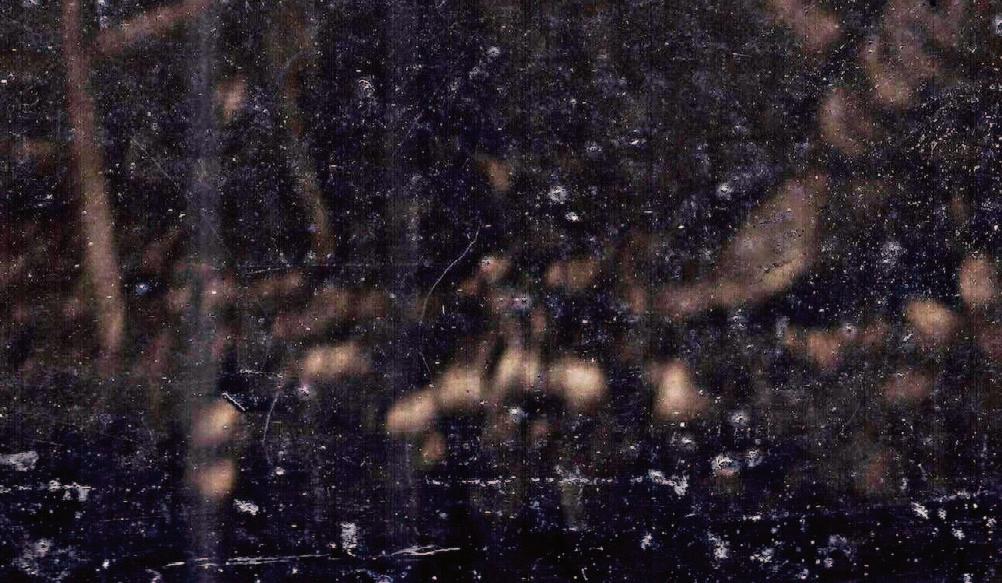
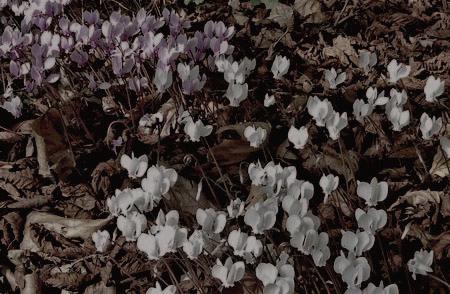
Le Grand Bouillon, Restaurant du Chalet, located near La Fourche in the northern part of Paris, offered an affordable but remote option, far from the traditional artistic circuits. Ever pragmatic, Vincent van Gogh saw an opportunity to organize a collective exhibition there. He gathered his friends, whom he had met at Cormon’s studio and at the shop of Père Tanguy. Though short-lived, this initiative was crucial for these young artists, who were in search of a space to exhibit their work.
In a letter to his brother Theo, Vincent mentioned this effort: “I always hoped, being in Paris, to have an exhibition space of my own in a café, you know that failed… For the 2nd exhibition in the hall on (avenue) de Clichy, I regret the trouble less. Bernard sold his first painting, Anquetin sold a study, and I made an exchange with Gauguin, we all got something out of it…”* (Letter to Theo, July 15, 1888).
Vincent brought about a hundred canvases to the restaurant using a handcart, likely borrowed from the paint supplier on rue Clauzel. However, the exhibition was short-lived, as an argument broke out with the manager, forcing Vincent to remove his works.
The restaurant, which had several billiard tables and a ballroom at the back, frequently changed ownership, as confirmed by the directories of the time. Le Chalet had a unique reputation in the neighborhood. Georges Grison, in his book Paris horrible et Paris original (Dentu, 1882), described the establishment as follows: “Le Chalet. Let’s stop here! … Built on a plot of land at 43, avenue de Clichy and 2, rue Hélène, this dance hall has a distinctly aristocratic air due to its unique design. Fights naturally occur a bit… but usually, when there’s a dispute to settle, people go outside to brawl in the street so as not to frighten the ladies.”
The first meeting between Vincent van Gogh and Georges Seurat** took place during this exhibition on avenue de Clichy, a notable event in Van Gogh’s career. Marina Ferretti-Bocquillon and her colleagues recount this episode:
“Vincent van Gogh tried to bring together the painters of the ‘Petit Boulevard’ (Anquetin, Bernard, Van Gogh, and Toulouse-Lautrec) in a restaurant on avenue de Clichy in 1887, but had to dismantle the exhibition after a quarrel with the owner. It was in this restaurant that Seurat met Van Gogh for the first time.” (Signac, 1863-1935: Master Neo-Impressionist, Metropolitan Museum, 2001).
Émile Bernard also recounts this episode in his letters: “The hall in question here is that of a popular restaurant on avenue de Clichy, which Vincent had won over the owner and turned into an exhibition of our paintings. Unfortunately, this socialist exhibition of our incendiary works ended rather pitifully. There was a violent altercation between the owner and Vincent, which led him to immediately grab a handcart and move the entire exhibition to his studio on rue Lepic.” (Émile Bernard, Letters , 1911, p. 75).
* see opposite page. The painting exchanged by Gauguin was not included in the exhibition, a scene on the banks of a river in Martinique.
** See Seurat letter about his visit page 74


Pendant la période du 25 novembre au 15 décembre 1887, Vincent van Gogh partageait un appartement avec son frère Théo sur la Butte Montmartre. Ils avaient d’abord résidé au 25 rue Laval (aujourd’hui rue Victor Massé), avant de déménager en juin 1886 dans un appartement plus spacieux au 54 rue Lepic, où Vincent disposait d’un atelier (repère V).
Entre ces deux adresses, au 62 boulevard de Clichy, se trouvait « Le Tambourin » (repère T), un café tenu par Agostina Segatori, avec qui Vincent eut une relation. Il y dînait souvent et y exposait ses œuvres, mais l’établissement fit faillite* et fut vendu pendant l’été 1887. Ce lieu ne fait donc pas partie des endroits actifs pour la période du 25 novembre au 15 décembre 1887
Plus loin sur le boulevard, au 128 bis (repère S2), se trouvaient les ateliers voisins de Paul Signac et Georges Seurat. Vincent visita Seurat en février 1888, peu avant son départ vers le sud, accompagné de son frère Théo. Paul Signac invita Vincent à exposer rue Blanche avec eux.
Après l’échec de sa première exposition au Tambourin, Vincent organisa une seconde exposition au Restaurant du Chalet (repère CH), situé au 43 avenue de Clichy, à l’angle de la rue Hélène, où il exposa une centaine de tableaux durant la période que nous considérons. Il y fit notamment visiter l’exposition à Paul Gauguin.
En parallèle, Vincent participa à un accrochage au 96-98 rue Blanche, dans un bâtiment sur cour abritant la salle de répétition du Théâtre Libre (repère T-L). André Antoine avait lancé un appel dans Le Cri du Peuple en septembre 1887, invitant de jeunes peintres à y exposer leurs œuvres. Cette exposition se poursuivit jusqu’au début de l’année 1888.
Sur une carte de Montmartre en 1887, les lieux liés à Van Gogh sont repérés par des lettres de couleurs. En bleu, quatre lieux sont remarquablement proches les uns des autres, même si, pour se rendre du 54 rue Lepic au Bal du Chalet, il fallait contourner ou traverser le cimetière de Montmartre. Les lieux sont les suivants et nous les avons parcourus systématiquement pour retrouver le lieu de prise de de vue de la photographie de groupe, en commençant par la rue Lepic et la rue Hèlène :
• Atelier de Vincent van Gogh chez son frère Théo : 54 rue Lepic (V)
• Ateliers de Signac et de Seurat : 128bis-130 boulevard de Clichy (S2)
• Le Grand Bouillon, Restaurant du Chalet : 43 avenue de Clichy et 2 rue Hélène (CH)
• Salle de répétition du Théâtre-Libre : 96-98 rue Blanche (T-L)
• La boutique du père Tanguy, rue Clauzel (repère P-T), où Vincent déposait ses tableaux.
• L’atelier de Cormon, surnommé « le père la rotule », que Vincent fréquenta deux ans plus tôt, situé dans une arrière-cour au 104 boulevard de Clichy (repère A-C).
* La seule précision de date vient de la lettre de Vincent à Théo du 19 juillet 1887 quand il y rencontre Agostina sur place : «J’ai été au Tambourin puisque si je n’y allais pas on aurait pensé que je n’osais pas.–Alors j’ai dit à la Segatori que dans cette affaire je ne la jugerais pas ... Que j’avais dechiré le reçu des tableaux – mais qu’elle devait tout rendre...»

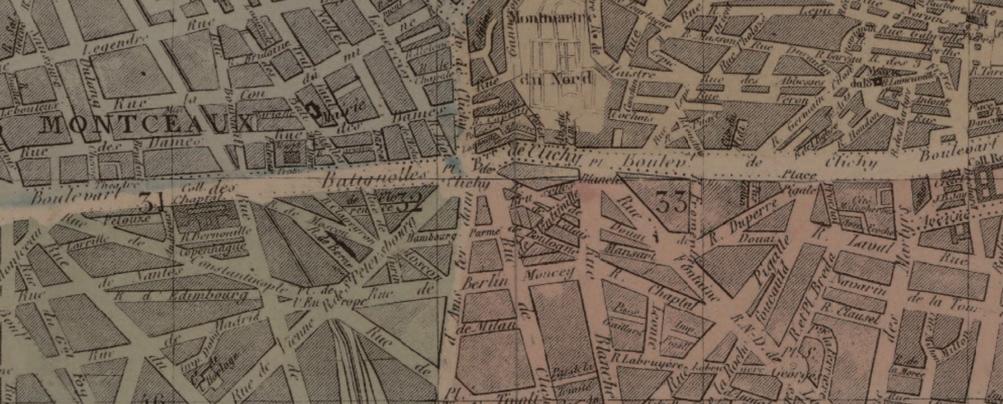
• Plan de Paris de 1887 (BnF), détail agrandi, V représente le logement des frères Van Gogh et l’atelier de Vincent, 54 rue Lepic
CH représente le Grand Bouillon - restaurant du Chalet, 43 avenue du Clichy, avec la tentative d’exposition du «Petit Boulevard»
T-L représente la salle de répétition du !éâtre-Libre, 96-98 rue Blanche, qui accueille des tableaux de trois peintres
S2 représente les ateliers mitoyens de Signac, et de Seurat, 128bis boulevard de Clichy, T le Tambourin, 62 Bd de Clichy
P-T représente la boutique de couleurs du Père Tanguy, rue Clauzel, A-C l’atelier Cormon, 104 boulevard de Clichy

Le 96-98 rue Blanche ne présente qu’une seule entrée à cause du magasin rez-de-chaussée au 96

Dans l’angle de la cour, trois marches mènent à l’escalier accédant aux bureaux du !éâtre-Libre (1er étage)
• A Staircase in the Courtyard
• André Antoine, the Standing Figure
• The Rehearsal Room at the Théâtre-Libre
• The Call in Le Cri du Peuple
• Vincent van Gogh Exhibits Couples
• Paul Signac Exhibits Neige and Côte d’Aval
• Paul Signac Profiled by Seurat
• Georges Seurat Exhibits ...
• Reconstructing a Particular Day
It was through systematically visiting locations linked to Vincent Van Gogh, Paul Gauguin, and Émile Bernard in December 1887 that the courtyard at 96-98, rue Blanche was identified.
Indeed, André Antoine, who had founded the Théâtre-Libre in the spring of 1887, found a rehearsal space at this address. It was in this space that he and his troupe developed scenic naturalism, challenging the conventions of the time. The hall on rue Blanche played a key role in the evolution of French theater, offering a place where Antoine could realize his realistic vision, permanently transforming stage direction and acting. He also proposed organizing an art exhibition in the rehearsal hall.
In 2015, the property owner, Monsieur Dumas, provided us with a crucial detail: a century earlier, the ground floor of the building had been occupied by an inn named “Auberge blanche.” Access was through a porch, and a somewhat impractical staircase in the courtyard allowed residents to reach the upper floors. This staircase was rebuilt in the early 20th century, but some original features, such as the entrance to the cellar and the proportions of the stairs, remain visible.
The staircase seen in the historical photograph shows striking similarities to the one rebuilt in the 1930s, in both proportions and general appearance.
Around 1930, the staircase was modified to make the inn more functional. However, no trace of the inn’s existence before this date has been found, and it cannot be confirmed that it existed in 1887. On the contrary, one could assume that if there had been an inn beneath the rehearsal hall, it would have been mentioned in accounts from the time. André Antoine was searching for a quiet place for his rehearsals and soon limited access to the space for painters, deciding against continuing the collaboration with the neo-impressionists.
In 1887, a struggling photographer and perhaps a maker of photographic instruments were operating at this location. Today, the levels of the building remain unchanged from the time of the exhibition, making it easier to precisely locate the rehearsal hall. Another staircase, located in a corner of the courtyard, led to the Théâtre-Libre rehearsal room, a space used by André Antoine and his troupe.

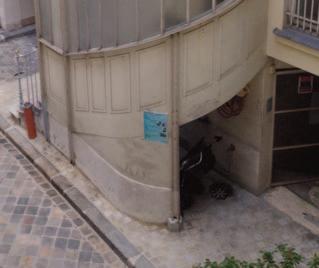
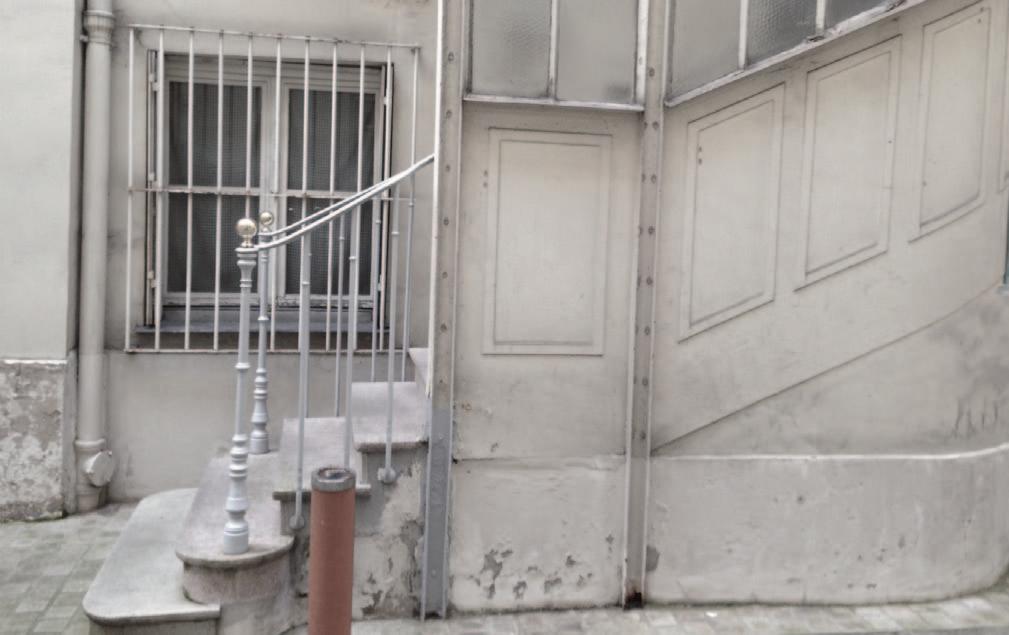
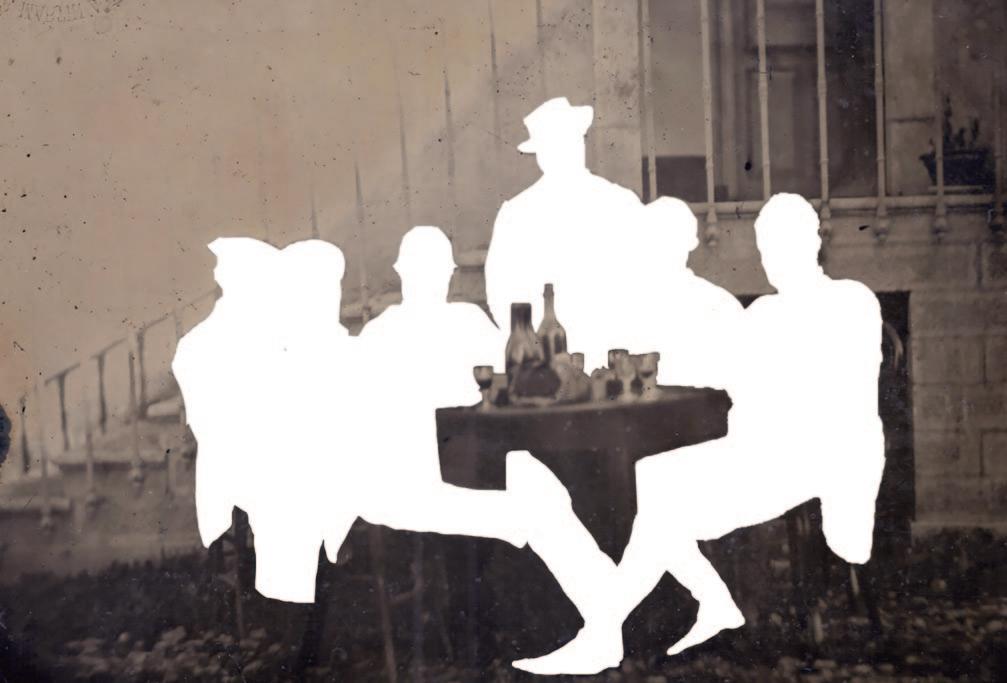
• Comparison with the staircase in our picture
Pour identifier l’homme debout qui semble accueillir les visiteurs, retrouver le lieu de la scène a été un élément clé. La cour de la rue Blanche, qui n’a pas beaucoup changé au fil du temps (voir pages suivantes), a permis de situer le contexte. À partir de là, nous avons comparé le portrait de l’homme debout, portant un chapeau et tenant une pipe, avec plusieurs figures qui auraient pu fréquenter cette cour, située devant la salle de répétition du Théâtre Libre en 1887-1888.
Nous avons particulièrement examiné un portrait d’André Antoine datant des années 1890. Malgré les limitations de visibilité du visage sur la photographie, certaines similitudes sont frappantes : la corpulence, le choix de la cravate, ainsi que la forme générale du nez, des narines, des sourcils, de la bouche et du menton. Les distances entre ces traits ont été comparées avec précision. De plus, la couleur et l’aspect des cheveux sur les tempes offrent des indices supplémentaires. Enfin, on pense pouvoir confirmer la présence d’une verrue sur la joue droite, à gauche pour nous, bien mise en valeur sur la caricature de Désiré Luc pour Les Hommes d’Aujourd’hui. Un photographe utilisant une technique avec un négatif verre au collodion pourrait corriger et atténuer la présence de la verrue mais le mélanotype est une image directe ne permettant aucune correction.
André Antoine (1858-1943), comédien et metteur en scène, était à l’époque un ancien employé du gaz qui allait révolutionner le monde du théâtre en fondant le Théâtre Libre en 1887. Cette aventure théâtrale débute du côté de la Butte, et en septembre de la même année, Antoine s’installe au 96, rue Blanche, dans un grand atelier avec un escalier indépendant au fond de la cour et un «charmant salon fumoir» . Dans ses mémoires, Mes souvenirs sur le Théâtre Libre, Antoine se souvient : «Nous avons un siège social, et c’est une admiration ingénue des auteurs et des jeunes gens qui prennent déjà l’habitude de venir tous les soirs bavarder…»
Antoine, désireux de soutenir les artistes en leur offrant un espace d’exposition gratuit, publie en septembre un texte dans Le Cri du Peuple. À la suite de cette initiative, une exposition de quelques œuvres de Signac, Seurat et Van Gogh est organisée début décembre dans cet espace avantgardiste.
Dans les années suivantes, d’autres peintres comme Toulouse-Lautrec, Rivière et Forain contribueront à illustrer les programmes du Théâtre Libre, renforçant son lien avec les arts visuels.
Des années plus tard, en 1935, une caricature de Carlo Rim représente André Antoine avec une cigarette, perpétuant ainsi l’image du célèbre metteur en scène.
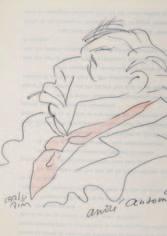

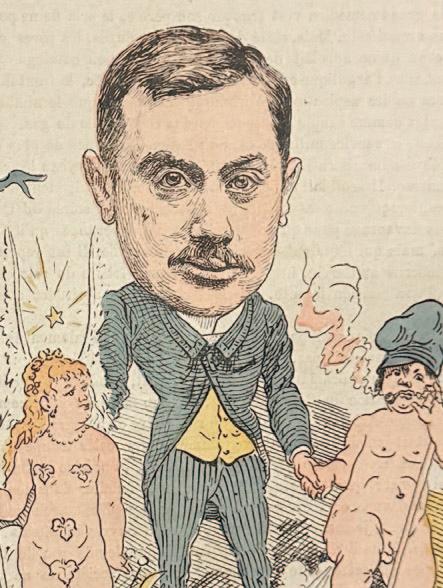


André Antoine was born in 1858 in Limoges. Following his parents to Paris, he began a solid education, but had to start working at the young age of thirteen, taking a job with a business agent on rue des Bons-Enfants.
In 1873, through personal recommendations, Antoine was successively employed at the Bottin directory and later at the Hachette bookstore. By 1877, he had joined the Paris Gas Company.
Two years later, at the age of 21, Antoine left for military service, serving in Tunisia. After four years, he returned to Paris and resumed his post at the Gas Company.
Passionate about the theater, Antoine worked tirelessly to finance his passion. Eventually, following two courageous trial performances at the Théâtre Libre, he resigned from the Gas Company in June 1887.
“He tightened his belt, contracted bad debts, and on May 30, 1887, he offered his second show to the public. The success was overwhelming. The hall was magnificent. All of Paris’s elite gathered in Montmartre for the premiere. In the front row: Émile Zola, Alphonse Daudet, Francisque Sarcey, Henry Fouquier, Henri de Lapommeraye, Auguste Vitu, and more. Each seat, a notable name. These seats were, in reality, nothing but modest, uncomfortable benches. But no matter! Enthusiasm was in the air, a spirit of victory floated. Everyone felt they were part of the celebration in their own way. Instinctively, in front of this new stage that they recognized and celebrated for its first triumph, they sensed, like the poet, that ‘someone great was about to be born.’ No one was mistaken. Modern drama was born that night. To fully dedicate himself to his work, Antoine resigned from the Gas Company. He called on authors, and manuscripts poured in. He spent his vacations reading them.” (Adolphe Thalasso, Le Théâtre Libre, Mercure de France, 1909).
At 29, shortly after launching his groundbreaking theater, Antoine was introduced to Vincent van Gogh by Paul Signac. Van Gogh would soon have one of his paintings displayed on the walls of the rehearsal room at 96-98 rue Blanche, further cementing the theater’s cultural significance.

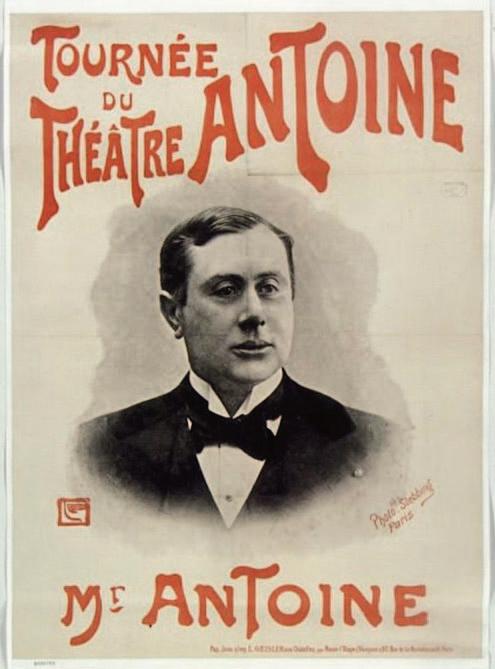
So many heroic moments took place in the rehearsal room of the Théâtre-Libre that we even have an interior view, not captured by a photograph, but by a painting by Henri-Patrice Dillon. The premises were located on the first floor of the courtyard building at 96-98 rue Blanche, which still exists today with its distinctive triangular shape and, most notably, its independent staircase, still standing, as seen in a 1975 ground floor plan.
To better understand the layout of the space, we consulted excerpts from André Antoine’s memoirs as well as the testimony of his biographer, Désiré Luc, who provide valuable insights into the arrangement and atmosphere of the rehearsal room.
September 3, 1887. — “How we managed it, Paz and I, I no longer remember; but here we are settled in, at 96 rue Blanche, in a large studio, with an independent staircase at the back of the courtyard and a charming smoking room. Everyone pitched in, and we recruited two dozen subscribers, paid deposits for rent and gas, and Paz, ever admirable, managed to find a decorator who delivered sofas, three dozen chairs, and curtains on credit. We now have a headquarters, and there’s an innocent admiration from the authors and young people who are already getting into the habit of coming by every evening to chat and inquire about when rehearsals will begin. I have no money left and no home; for now, I’ll sleep on a small folding bed that, during the day, looks like just another stage prop.”
(André Antoine, Mes Souvenirs sur le Théâtre-Libre, page 59)
January 16, 1888. — “Our rehearsal space on rue Blanche is attracting curiosity. We would be quickly overrun if I hadn’t, from the start, decided that only the authors and house artists would have access. Thanks to this discretion, the place remains intimate; it’s only us. The large room at the back is dedicated to rehearsals, which the authors’ peers may observe, but only in complete silence. At the entrance, we have a room for chatting, socializing, and smoking. Nearly every evening, now, the place is full, and what’s particularly moving is the atmosphere of camaraderie and solidarity, where all these young people share their ambitions and hopes.”
(André Antoine, Mes Souvenirs sur le Théâtre-Libre, page 82)
It’s worth noting that, in a misaddressed letter to Théo van Gogh from April 1888, later referenced in a May 4, 1888 letter, Vincent van Gogh mentioned the Théâtre-Libre and referred to Tolstoy’s play The Power of Darkness, which was being rehearsed on rue Blanche in December 1887:
“In the letter I misaddressed, I had spoken to you again about Bonger. It’s likely he dares say as much because at the moment the Russians are so successful at the Théâtre-Libre, etc. But that’s no reason, is it, to try to use that success to disparage the French.”
(Désiré Luc, Les Hommes d’Aujourd’hui, n° 341)

• Henri-Patrice Dillon. “Rehearsal of Jean Jullien's Serenade, at the Théâtre Libre”, 1889 (Musée Carnavalet)... an upholsterer delivered on credit couches, three dozen chairs and curtains...


• Access plan first floor 96-98 rue Blanche, 1975 • Aerial view of the courtyard and courtyard buildings, idem, 2024
A physical copy of the Le Cri du peuple newspaper has been recovered at Bibliothèque Nationale.
On September 7, 1887, Trublot published André Antoine’s call in Le Cri du peuple, a paper directed by Jules Vallès, inviting young artists to display their works on the walls of the rehearsal room at 96 rue Blanche. It has been suggested that Antoine may have been slightly coerced into making this invitation.
Regardless, this call received positive responses, notably from Paul Signac, who brought along Georges Seurat and Vincent van Gogh. Were they the only participants in this exhibition? So far, no source has suggested the presence of a fourth artist.
While studying the newspaper, we noted a few significant issues from the exhibition period (November 1887-January 1888), containing other articles by the same “Trublot”:
• November 2, 1887: An article announces the relocation of Théâtre-Libre performances from the cramped streets of Montmartre (37, Passage de l’Elysée-des-Beaux-Arts, above Place Pigalle, now called rue André-Antoine) to Théâtre-Montparnasse on the Left Bank. This move made the rehearsal space at 96 rue Blanche, which already housed the offices and headquarters of the Théâtre-Libre, even more important.
• November 7, 1887: A report of a lively evening in the rehearsal room at 96 rue Blanche.
• December 11, 1887: A mysterious incident during another lively evening at 96 rue Blanche.
• January 23, 1888: An article describing Signac’s participation among the 20 foreign invitees to the XX Exhibition, a group of 20 Belgian artists in Brussels.
Lastly, in issue 341 of Les Hommes d’Aujourd’hui, dedicated to André Antoine (1888), Désiré Luc mentions the exhibition: “Until May 1887, rehearsals took place—first—at a small drinking establishment on rue Lepic, and then—in an unoccupied ground-floor room, sparsely furnished… Since then, the troupe has met in a spacious venue at 96, rue Blanche. The Impressionists cover the walls. As soon as you walk in, you notice a bust of Antoine (displayed at this year’s Salon) gloriously posed as Pierrot, on one of the mantels.”
Returning to the subject of our investigation—this exhibition—we can confirm that it took place: “The Impressionists cover the walls.” However, it remains minimally discussed and barely acknowledged in 19th-century art history because no visual documentation survives. It was more of a casual hanging than a formal exhibition. No detailed descriptions or critiques were published in the newspapers, and it remains mysterious. In the following pages, we will attempt to gather the available clues and information.
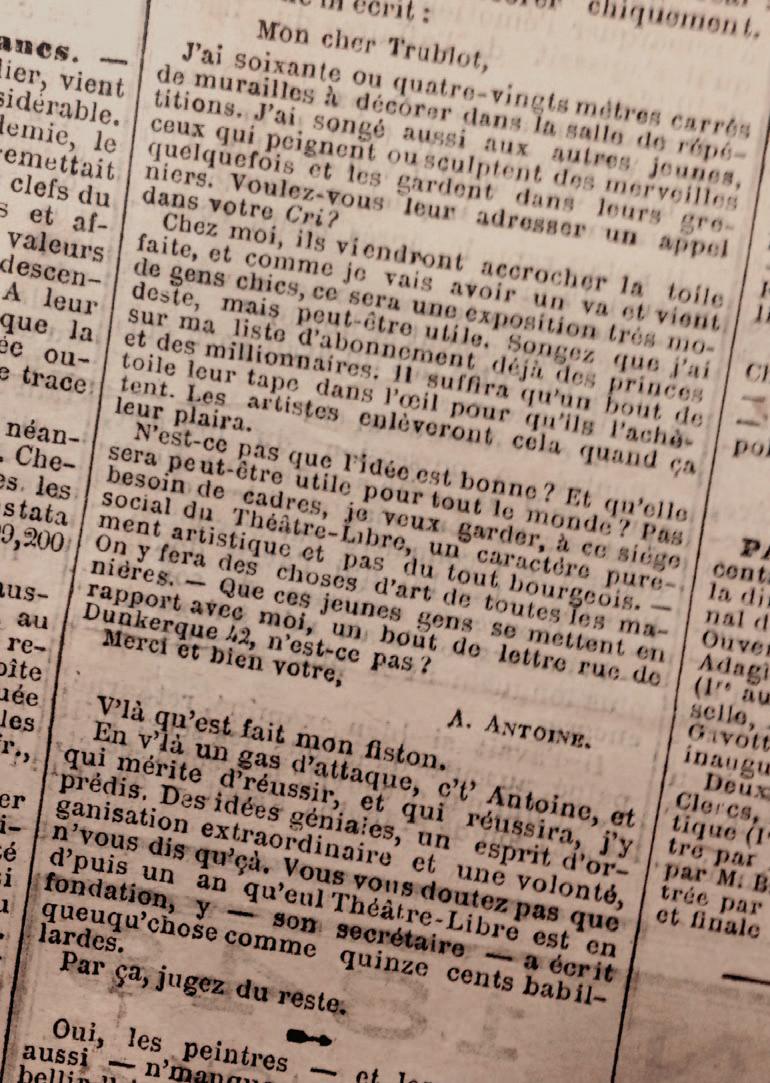
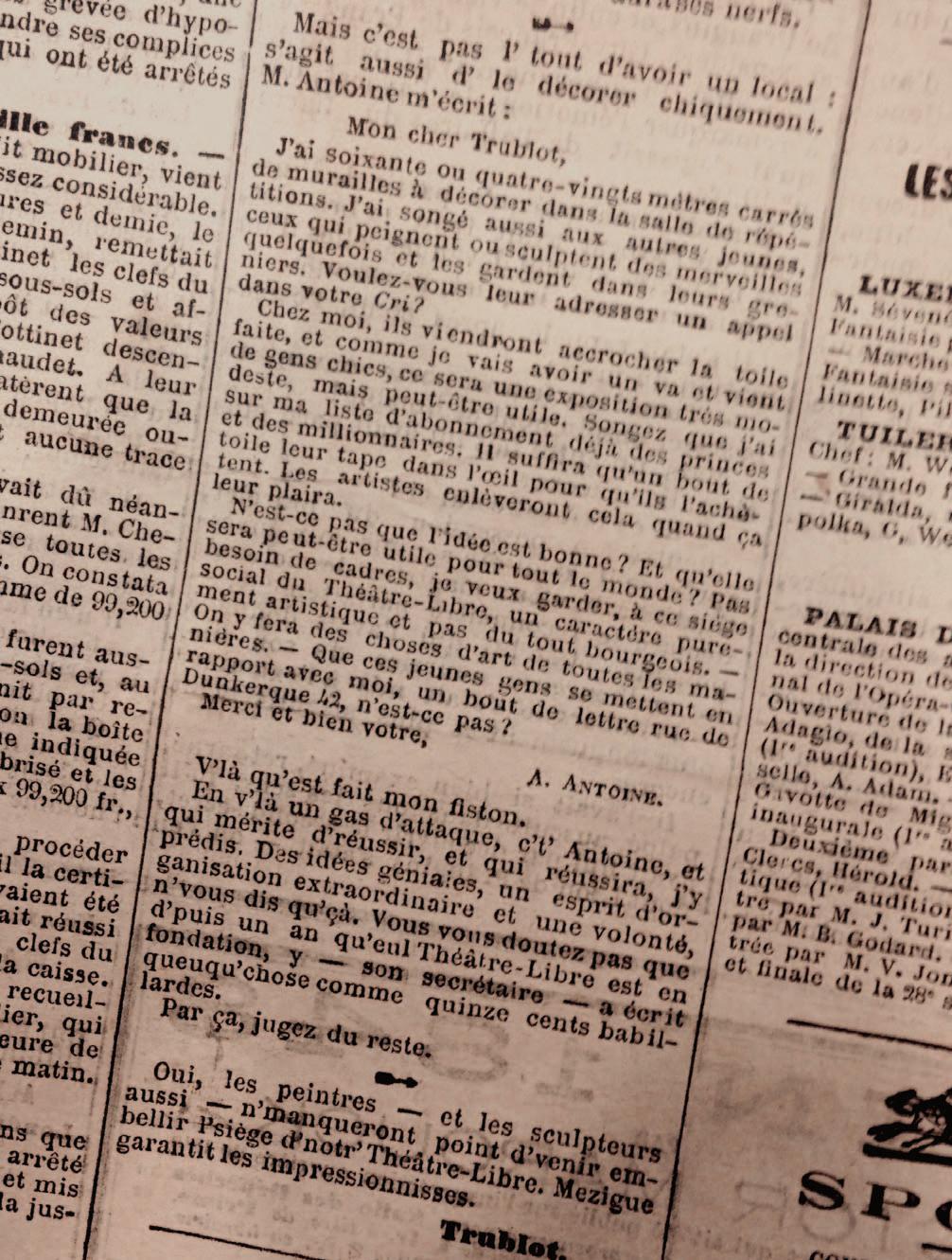
• September 7, 1887 issue of Le Cri du Peuple
Vincent van Gogh (1853-1890)
Couples in the Voyer d’Argenson Park at Asnières, May-June-July 1887 Oil on canvas, 75.0 cm x 112.5 cm Van Gogh Museum, Amsterdam
Van Gogh referred to this sunny park scene as “the garden painting with lovers.” Couples stroll beneath the young chestnut trees and sit along the winding paths. He wrote to his brother that this painting was on display at the Théâtre-Libre: “I had to spend nearly everything I received on colors and canvases, and I would be grateful if you could send me something else in the coming days. The garden painting with lovers is at the Théâtre-Libre.” (Letter to Theo, April 3, 1888, ref. 592)
For this painting, Vincent van Gogh used a free variation of the pointillist technique, which involved building up compositions from small dots of paint. Van Gogh, however, applied short brushstrokes of varying lengths and in different directions. This allowed him to create the effect of a radiant spring day, in line with the sense of intimacy and togetherness he wanted to convey. He, too, longed for a wife and family but only experienced “impossible love affairs.” Eventually, he resigned himself to this reality and devoted himself entirely to his art.
The presence of his painting The Garden with Lovers in a parallel display to the group exhibition at the Grand Bouillon, Restaurant du Chalet, 43 avenue de Clichy, “provoked a quarrel with Émile Bernard. The memory of this disagreement comes to us through a long and beautiful letter from Vincent to Émile Bernard.” (Comments from the Van Gogh Museum, Amsterdam)
The park depicted in the painting still exists in Asnières and remains a place of great beauty. It bears the name of the former owner of the château, Marquis Marc René de Voyer d’Argenson, who owned a large estate there. The city of Asnières acquired the château in 1926 and named the park after him in 1932. Seven plane trees, standing 30 meters tall and nearly two centuries old, add a special dimension to the location. With its magnificent statues, flower-covered bridge, and rare plant species, everything contributes to a romantic and poetic atmosphere.

Paul Signac (1863-1935)
Neige, Boulevard de Clichy, Paris, 1886
Oil on canvas, 46 x 65 cm
Musée de Minneapolis
«Although Signac, like Seurat, was subsidized by his family, he expended great energy in making his work and that of his friends known. Like other contemporary painters (Van Gogh, Gauguin, Emile Bernard), he found novel venues for exhibitions— cafés, restaurants, offices of literary reviews— thus saving expenses and attracting a new public. The few suitable Parisian galleries, such as Durand-Ruel, Petit, or Boussod- Valadon (despite the présence there of Théo van Gogh, Vincent s brother), were as yet out of reach. Père Tanguy s small shop, until his death in 1894, surely contained works of the NeoImpressionists, alongside those of Van Gogh and Cézanne, but more for the benefit of the painters and a few critics than for serious buyers...
In February 1887 Signac in conjunction with Les XX of Brussels was planning an exhibition in Paris. He wrote to Pissarro, telling him that Georges Lèbre, the new owner of the review La Vie moderne, had "just rented a spacious town house and offers us the parlors free of charge (he keeps the admission fees) to organize an exhibition of the most advanced of the Brussels XX: Seurat, Dubois-Pillet, and I would agrée to accept. We could make a little, aristocratically discreet exhibition there. Our names would make another appearance, facilitating our major exhibitions in the years to corne Lèbre has a spécial clientèle of gens du monde, a public we have not yet reached; it is perhaps worth a try." Despite Pissarro s agreement this project was never realized. Signac persevered and exhibited works in the rehearsal room of the Théâtre- Libre in the rue Blanche from November 1887 to January 1888...
Signac's pre-catalogue (Signac Archives) mentions that Snow, Boulevard de Clichy, Paris (cat. no. 13) was bought by Montandon at an exhibition at the Théâtre-Libre in 1887 (probably the one in which Van Gogh also participated, November 1887- January 1888); a letter from Gauguin to Théo van Gogh around September 21, 1889 (Cooper 1983, letter 20) points out that Montandon, who had just bought one of his works, "had been with Leclanché one of my colleagues at a stockbroker s," informing us about this early collector of Signacs...
Shown at the last Impressionist exhibition in 1886 and in 1887 at the Salon des Indépendants and André Antoine s Théâtre- Libre, this picture did not go unnoticed. Jean Ajalbert devoted some lines to it in his usual colorful style: "On the 'Boulevard Clichy' the swirling blizzard coats the trees, houses, and streetcars with snow. The lilac-mauve and violet landscape turns opalescent in the distance. Around the emergency post, whose red lantern shines on the façade striped with alternating bands of bricks, pale or blood-colored." ...

Arriving in Paris in March 1886, Van Gogh visited the Impressionist exhibition, where this painting was hung in the last room with an assemblage of Neo-Impressionist works grouped around La Grande Jatte. That is to say he would have seen it as one of the most advanced démonstrations of contemporary painting. Van Gogh probably had Signac s snowscape in mind the next winter, when he chose a very similar vantage point for his Boulevard de Clichy, painted with light and contrasting colors applied with fine brushwork.» (Marina Ferretti-Bocquillon, Anne Distel, John Leighton, and Susan Alyson Stein, Signac, 1863 1935: Master Neo-Impressionist, Metropolitan Museum, 2001)
Paul Signac (1863-1935)
Les Andelys, Côte d’aval, 1886
Oil on canvas, 60 x 92 cm
Art Institute of Chicago, Chicago
«This picture, one of the last painted during Signac’s stay at Les Andelys, was also the most radically synthetic. The painter strongly accentuated the geometry of the landscape by reducing it to a sumptuous colored puzzle. In the foreground, he used the bend in the Seine to create a composition based on two interpenetrating triangles with a dominant blue and yellow color scheme. The cultivated hill was rendered as a colorful mosaic pattern. It was this painting that Gustave Kahn had in mind when he alluded to the ‘sparkling patchworks of cultivated fields.’ The village is a play of near-abstract shapes: cubic façades, trapezoidal roofs.
This painting was shown at André Antoine’s Théâtre-Libre, which was frequented by the most noteworthy figures in contemporary Naturalist and Symbolist art and literature. Paul Signac belonged to this circle, along with many of his friends, including the Naturalist writer Paul Adam, whom he portrayed in an ‘Impressionist sketch [representing] Mr. Paul Alexis at Lucie Pellegrin’s rehearsals.’ It was probably there that he met the sculptor Alexandre Charpentier, to whom he gave this painting.
Signac also illustrated the program of the 1888-89 season with an ‘application of Charles Henry’s chromatic circle.’ We can assume that the subscription audience, made up mainly of members of the artistic and literary avant-garde, would have appreciated Signac’s witty program design with its crisp, modern style. Under the initials T-L (for Théâtre-Libre), Signac placed a tondo into which he set the back view of the head and shoulders of a rotund spectator.*
The circular form evokes comparison with Charles Henry’s chromatic circle.» (Marina FerrettiBocquillon, Anne Distel, John Leighton, and Susan Alyson Stein, Signac, 1863 1935: Master Neo-Impressionist, Metropolitan Museum, 2001)
Another painting that may have been included in the Théâtre-Libre exhibition is Railway Junction near Bois-Colombes, which Signac gave to Rodolphe Darzens, a collaborator on André Antoine’s project, around December 1887.
* An artist friend, Z. P., points out that the corpulent spectator could well be the host of the premises, André Antoine.
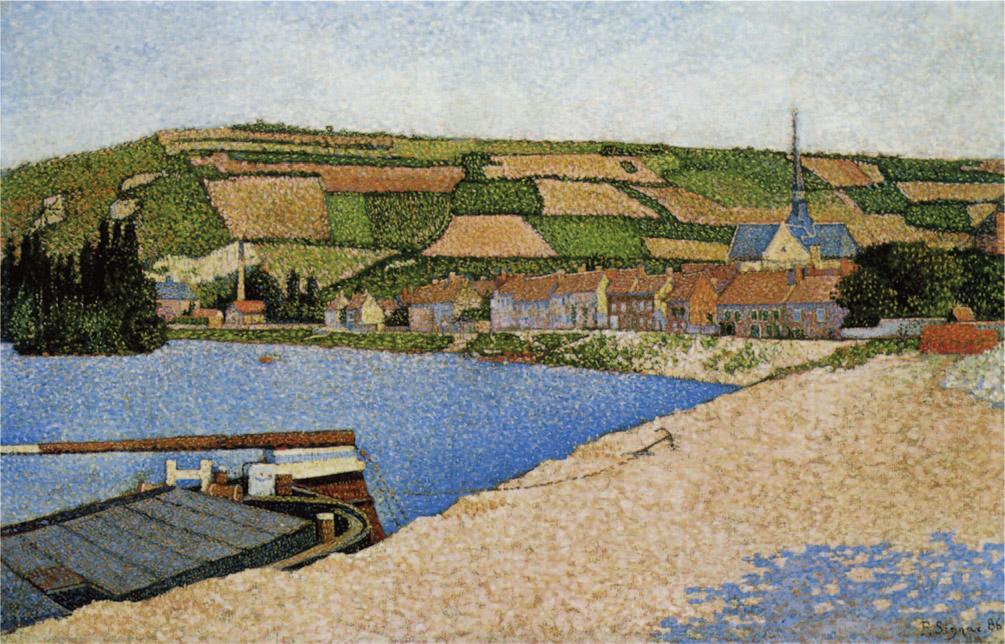
• Signac, Côte d’aval (Hillside from Downstream), Les Andelys, 1886, exhibited at !éâtre-Libre

• Signac, Programme pour le !éâtre-Libre, 1888, litho.
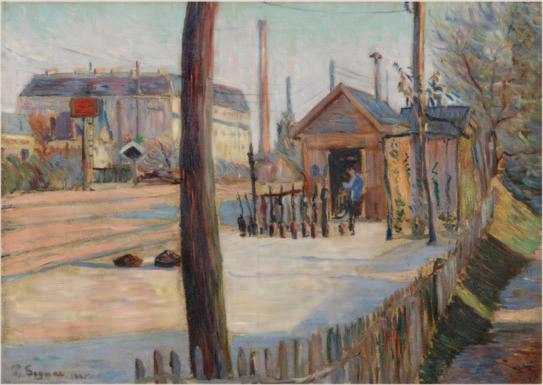
• Signac, Railway Junction near Bois-Colombes, 1885-1886
At present, no written testimony has been found that precisely indicates which of Seurat’s paintings were displayed in the rehearsal room. While efforts have been made to trace the Seurat works acquired by subscribers frequenting the Théâtre-Libre, no concrete evidence has surfaced to date.
Seurat exhibited Une baignade à Asnières at the first Salon des Indépendants alongside young painters such as Paul Signac, Henri-Edmond Cross, Charles Angrand, Maximilien Luce, and Camille Pissarro. His artistic endeavors were strongly supported by the critic Félix Fénéon, who coined the term neo-impressionism for the first time in the May 1, 1887 issue of the Belgian journal L’Art moderne. Fénéon would later acquire Une baignade à Asnières after Seurat’s death and serve as his executor, along with Paul Signac and Maximilien Luce, initiating the catalogue raisonné of Seurat’s work.
“According to Seurat’s catalogue raisonné by de Hauke, Signac at one point owned seventy-eight works by Seurat, primarily oil sketches and drawings. (The presence of so many masterpieces in a private collection would be an impossible dream for a collector today.) Thanks to Seurat’s own list, we know that by the winter of 1886-87, Signac already possessed two of his friend’s works: a painting, The Seine at Courbevoie, and an oil study for Fort Samson at Grandcamp. It is believed that Seurat gifted him his Conté crayon portrait, Paul Signac, as early as 1890, though little is known about Signac’s other acquisitions during Seurat’s lifetime.
The drawing Acrobat by the Ticket Booth, once owned by Robert Caze, was probably purchased at the 1887 sale following Caze’s death. After Seurat’s death in 1891, Signac inherited several works, including oil studies for La Grande Jatte, Woman Sewing, Models, and The Channel at Gravelines, Evening. Later, Signac acquired additional works by his late friend from other heirs.” (Marina FerrettiBocquillon, Anne Distel, John Leighton, et Susan Alyson Stein, Signac, 1863-1935 : Master Neo-Impressionist, Metropolitan Museum, 2001).
In relation to this investigation, we can also reference a famous letter from Seurat: a Letter to Maurice Beaubourg, Gravelines, 28 August 1890, formerly in the possession of Pierre Berès. Seurat mentions Vincent van Gogh in the following terms:
“… I knew Van Gogh less intimately. In 1887, I spoke to him for the first time in a popular bouillon located near the fork of Avenue de Clichy (now closed). A vast glass hall was decorated with his canvases. He exhibited at the Indépendants in 1888, 1889, and 1890. Signac informed me of his death thus: ‘He shot himself in the side, the bullet passed through his body and lodged in his groin. He walked two kilometers, losing all his blood, and collapsed at his inn.’” (Vente Béres, 20 June 2006, no. 130).
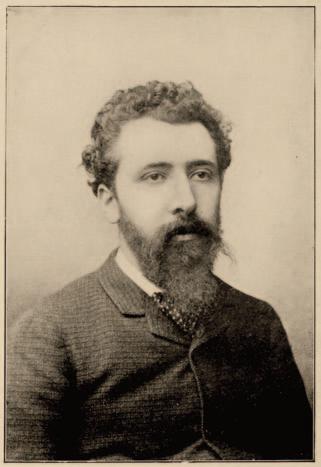
• Portrait de Seurat d’après
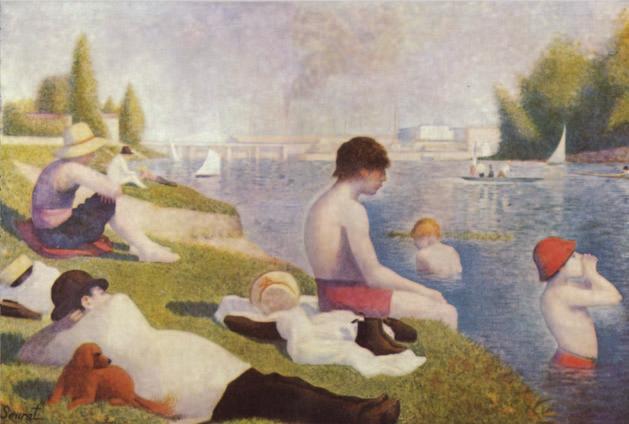
• Georges Seurat, une Baignade à Asnières
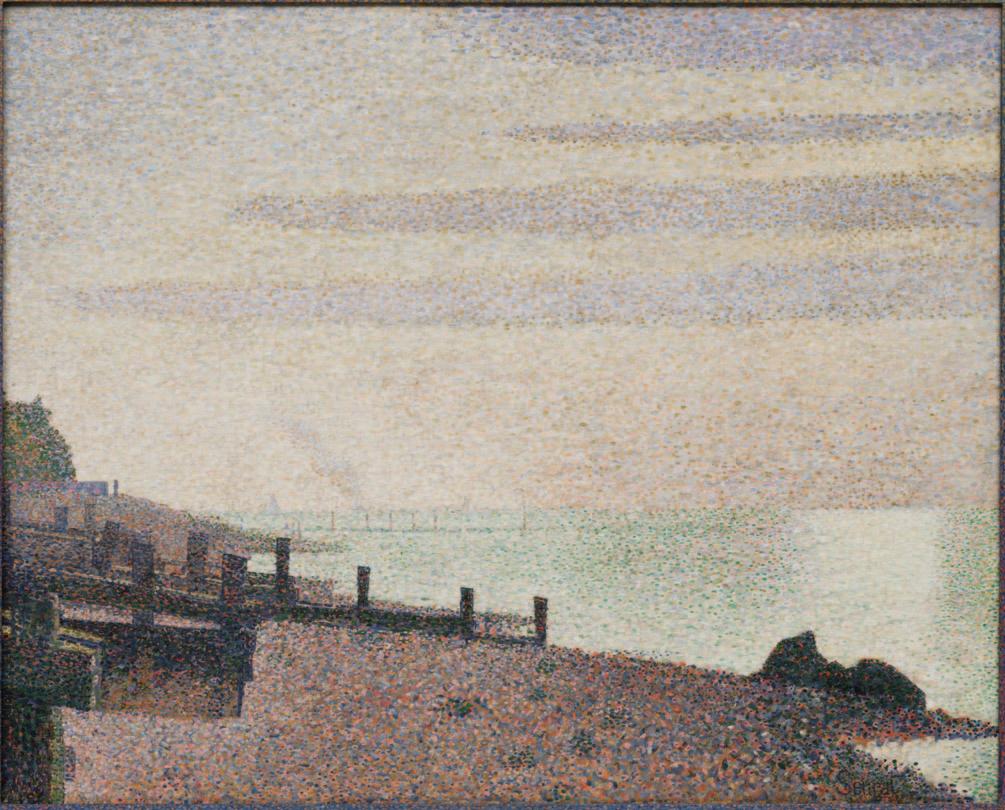
• Seurat, Honfleur, un soir, 1886
Georges Seurat (1859-1891)
Portrait of Paul Signac in Profile, Paris, 1890
Conté Crayon on Paper
Archives Paul Signac
«Georges Seurat executed a Conté crayon drawing of Signac, Théo van Rysselberghe portrayed him at the helm of his boat , and Bonnard showed him on the deck of one of his boats in the company of friends. In the first work he is a proper bourgeois in a top hat, and in the other two he is a sailor: unexpected avatars of a Neo-Impressionist painter who nevertheless would have recognized himself in these various guises. Seurat s drawing illustrated and introduced a seminal article on the theory of Neo-Impressionism written in 1890 by Félix Fénéon, who dedicated this major text to Signac.
These portraits do not show him as a painter (a photograph of the serious twenty-year-old Signac posing with a palette fills this necessary iconographie function) but suggest that he be considered under aspects that are only apparently distinct from his vocation as an artist...
... no less emblematic is Seurat s image of his friend Signac. The well-to-do artist is presented as an austère, proper bourgeois— the opposite of the clichéd disheveled creator— shouldering his cane with an assured yet nonchalant détermination, probably a familiar gesture. Seurat seems to have wanted to immortalize the dedicated painter who spent his time discussing, writing, struggling, arguing, and searching for exhibition spaces to convince the art public and court the critics. This was the painter to whom Camille Pissarro wrote:
— The entire Neo burden rests on your shoulders. Seurat will not be attacked because he keeps quiet. I am disdained as an old codger. But they sink their teeth into you, man, knowing how feisty you are.»
(Marina Ferretti-Bocquillon, Anne Distel, John Leighton et Susan Alyson Stein, Signac, 1863 1935: Master Neo-Impressionist, Metropolitan Museum).

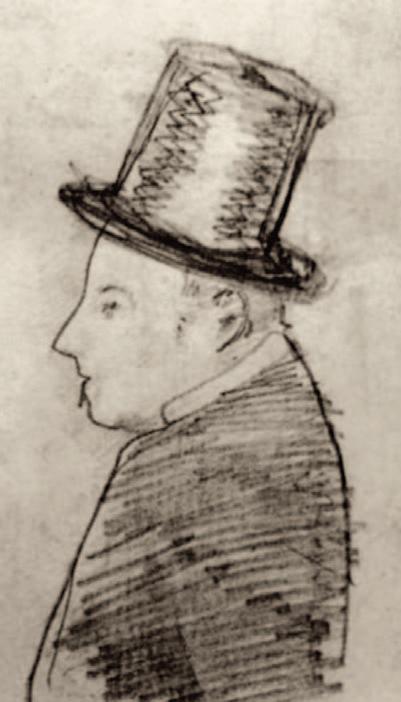

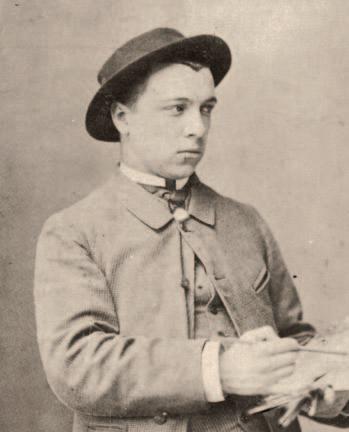

In this context, we can attempt a reconstruction of the photograph we are studying.
Gauguin returned from Panama, arriving in Paris on November 13, 1887. He was hosted by Schuffenecker, as Gauguin was still recovering from illness. Despite his condition, he agreed to visit the exhibition organized by Vincent van Gogh for the “Petit Boulevard” group at the Grand Bouillon, restaurant du Chalet, located on rue de Clichy, in the northern part of Paris.
According to a letter from Vincent to Théo, this exhibition, which lasted only a few days, ended with two sales—one by Émile Bernard—and a painting exchange between Van Gogh and Gauguin.
The presence of the Dutch artist Arnold Koning and especially the influential patron Félix JobbéDuval suggests that they also visited the exhibition at Le Chalet. Did this visit contribute to irritating the restaurant owner, who soon informed Van Gogh that visitors coming to view the paintings were disrupting his business and distracting his customers?
Regardless of the reason, we can imagine the group leaving Le Chalet and heading to another exhibition, where only Vincent van Gogh had been invited to display a painting alongside works by Seurat and Signac at 96-98 rue Blanche.
In honor of the venerable Jobbé-Duval, and perhaps hoping to convince Van Gogh to accompany them to Brittany, Bernard and Gauguin dressed in traditional Breton costumes from the Pont-Aven region, where they had first met and where they intended to return.
They would have been welcomed at rue Blanche by André Antoine, who had set up his ThéâtreLibre rehearsal space on the first floor of the courtyard building.
A photographer, also residing in the courtyard, may have invited them to pose for a group portrait using an old box camera. To persuade his hesitant subjects, he might have mentioned that his direct image process was very economical and only allowed for one print on varnished cardboard, making reproduction difficult.
In any case, the photograph was taken, but the discussion quickly soured. Émile Bernard, known for his jealous temperament, vehemently criticized the colorist experiments of the NeoImpressionists, a stance supported by Gauguin. According to a letter Vincent wrote to Bernard shortly afterward, Bernard became so agitated that Van Gogh abruptly left the group.
This photograph would have been taken on the day of the painting exchange between Van Gogh and Gauguin, as well as the day of the argument with Bernard. The organizers of Signac’s exhibition later reflected on Van Gogh’s ideal of harmonious group work:
* Van Gogh Correspondance, letter 575 to Émile Bernard, no precise date, about December 1887
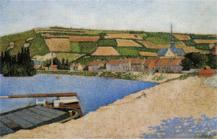

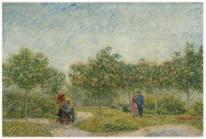
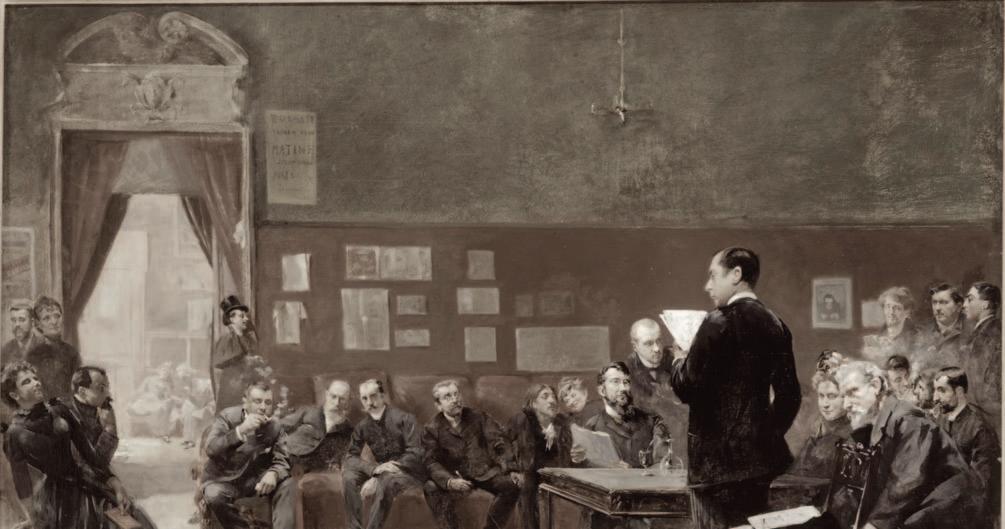

“Ironically Van Gogh, in life, had been unable to reconcile the differences between these two friends — Signac and Bernard — despite his best efforts in the summer of 1887. ‘If you have already thought Signac and others who use Pointillism quite often do very fine things,’ Van Gogh wrote to Bernard, ‘instead of slandering them you must respect them and speak sympathetically of them, especially if there has been a quarrel. Otherwise one becomes a sectarian, narrow-minded oneself, and the equal of those who utterly despise all others and believe themselves to be the only just ones.’”
The advice fell on deaf ears. Bernard, at first “happy to know [Signac],” found that “while the method was good for the vibrant reproduction of light, it spoiled the color.” He “instantly adopted an opposite theory,” destroyed all of his pointillist studies, and, like Gauguin—who referred to Signac as a “traveler in little dots”—made no secret of his contempt for Neo-Impressionism.
“It is telling that after having spent weeks in Gauguin’s company, Van Gogh in the spring of 1889 was surprised to find ‘Signac very quiet, though he is said to be so violent; he gave me the impression of someone who has balance and poise, that is all. Rarely or never have I had a conversation with an impressionist so free from discord or conflict on both sides.’**» (Marina Ferretti-Bocquillon, Anne Distel, John Leighton, and Susan Alyson Stein, Signac..., Metropolitan Museum, 2001)
** Van Gogh Correspondance, letter 752 to Théo van Gogh, 24 March 1889
REHEARSAL ROOM OF THE THÉÂTRE-LIBRE, 96-98 RUE BLANCH
ONE AFTERNOON IN LATE NOVEMBER OR EARLY DECEMBER 18
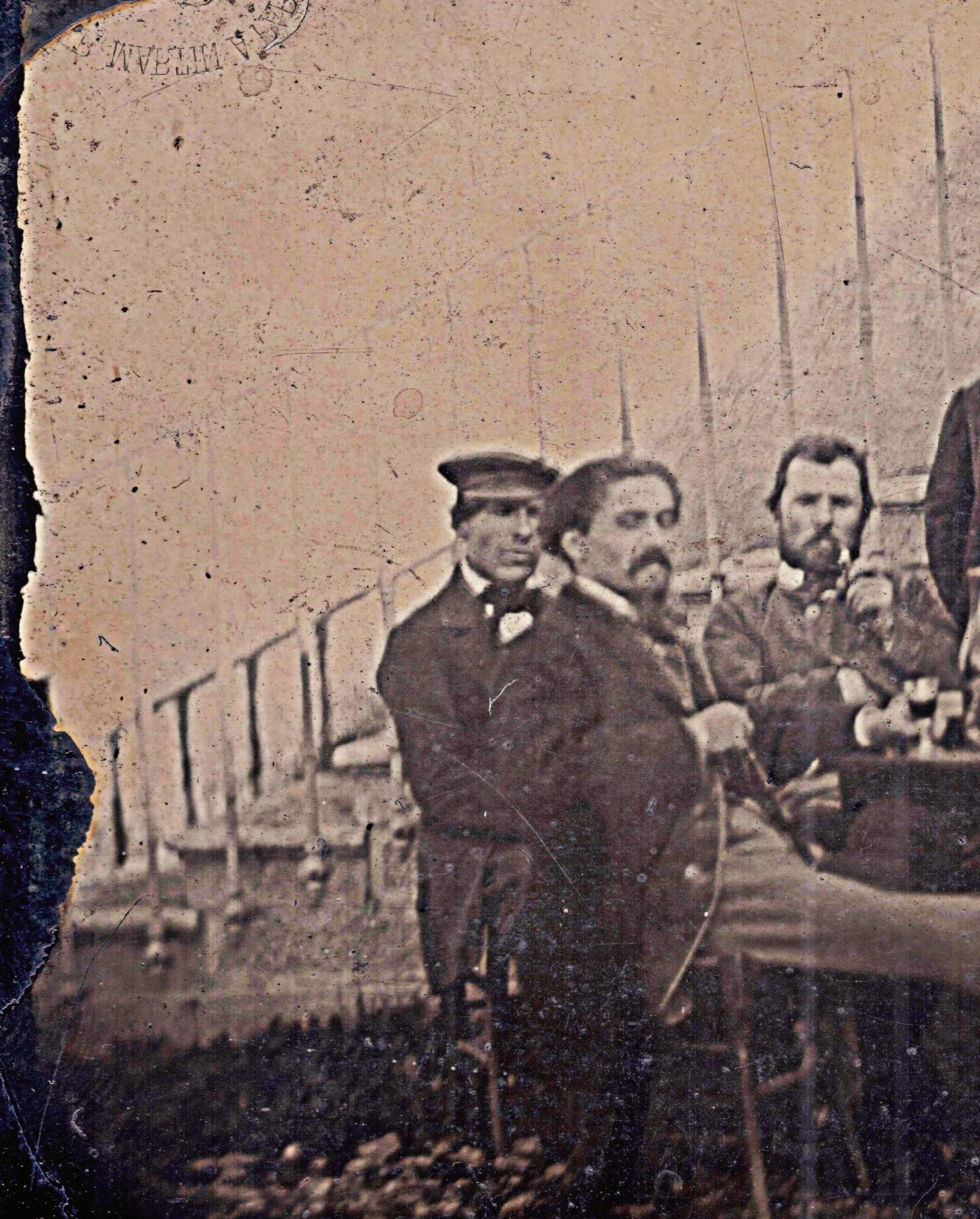

ANDRÉ ANTOINE FÉLIX
JOBBÉ-DUVAL
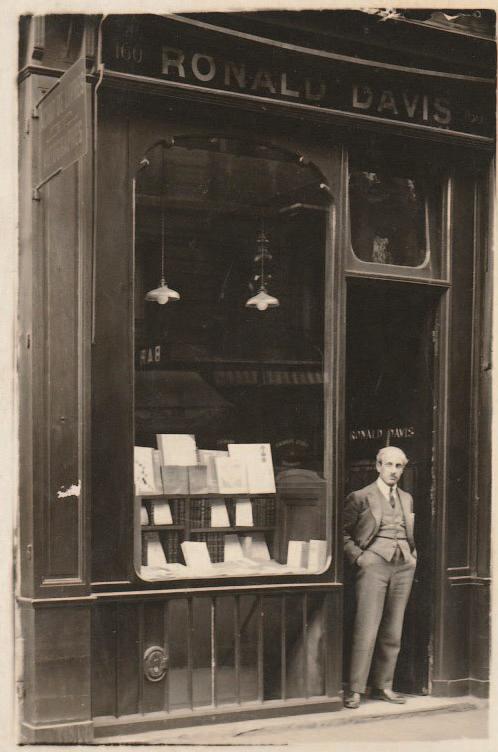
• A Bookseller Named Ronald Davis
• A Salon Golf Accident
MMXXIV
Ronald Davis (1886-1931) was an English publisher and bookseller based in Paris. He first gained recognition as head of the Société Générale d’Imprimerie et d’Édition, where he published more than thirty limited-edition books between 1920 and 1931, including works by Claudel, Jarry, Rimbaud, and Valéry.
His bookstore, opened in 1921 at 173 rue de Courcelles, later moved to 160 rue du Faubourg Saint-Honoré, near the residence of one of his most influential clients, Alexandrine de Rothschild. A member of the famous banking family, Miriam Alexandrine de Rothschild (1884-1965) played a key role in Davis’s success. Through her, he gained a reputation in the Parisian literary and art world, especially among collectors like Jacques Doucet and Edward W. Titus.
Davis was also an avid collector. Among the most remarkable pieces in his collection were manuscripts, rare books, and artworks by artists such as Auguste Rodin, Louis Marcoussis, and Pablo Picasso. Notably, he owned one of the few painted sculptures from Picasso’s “Absinthe Glass” series, likely acquired during the Galerie Kahnweiler sale in 1921.
Alongside his bookstore activities, Davis briefly participated in the literary magazine Commerce, taking over editorial leadership in 1924 after Adrienne Monnier. His career was tragically cut short in 1931 when he died in a sudden accident during a golf practice session in Paris.
Davis maintained close relationships with several influential figures in the Parisian art and literary scenes, including André Malraux and Guillaume Apollinaire. Though primarily known as a publisher, he played a quiet yet significant role in promoting modern art and rare book collecting.
In addition, another member of the Rothschild family, Marianne Goldschmidt-Rothschild, acquired an important part of Vincent van Gogh’s correspondence around 1926, including 22 letters addressed to Émile Bernard, now held in the Morgan Library in New York. Marianne had shown an early interest in Van Gogh, having purchased his painting L’Arlésienne in 1914 at the age of 22.
In summary, Ronald Davis, through his work as a bookseller and publisher, was deeply embedded in the literary and artistic circles of Paris, supported by patrons like Alexandrine de Rothschild. His career exemplifies the interaction between collectors, artists, and publishers in the early 20th century, during a period of great transformation in art and literature.*.
* Références: Mahler, Luise, "Ronald (also Renald) Davis," The Modern Art Index Project (August 2018), Leonard A. Lauder Research Center for Modern Art, The Metropolitan Museum of Art.
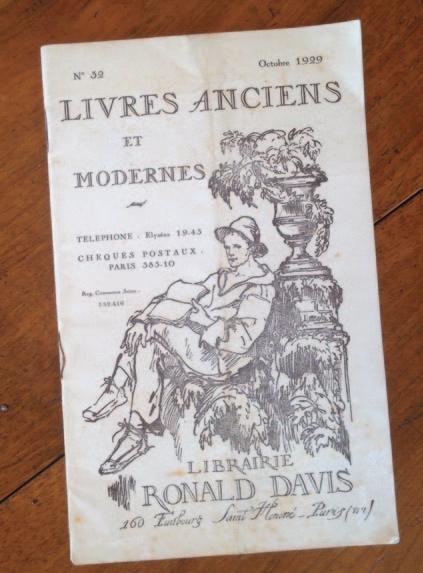
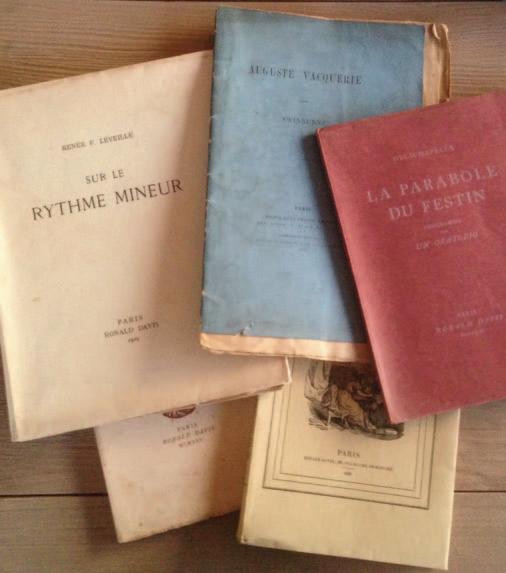
• Some fine editions from the rare bookseller
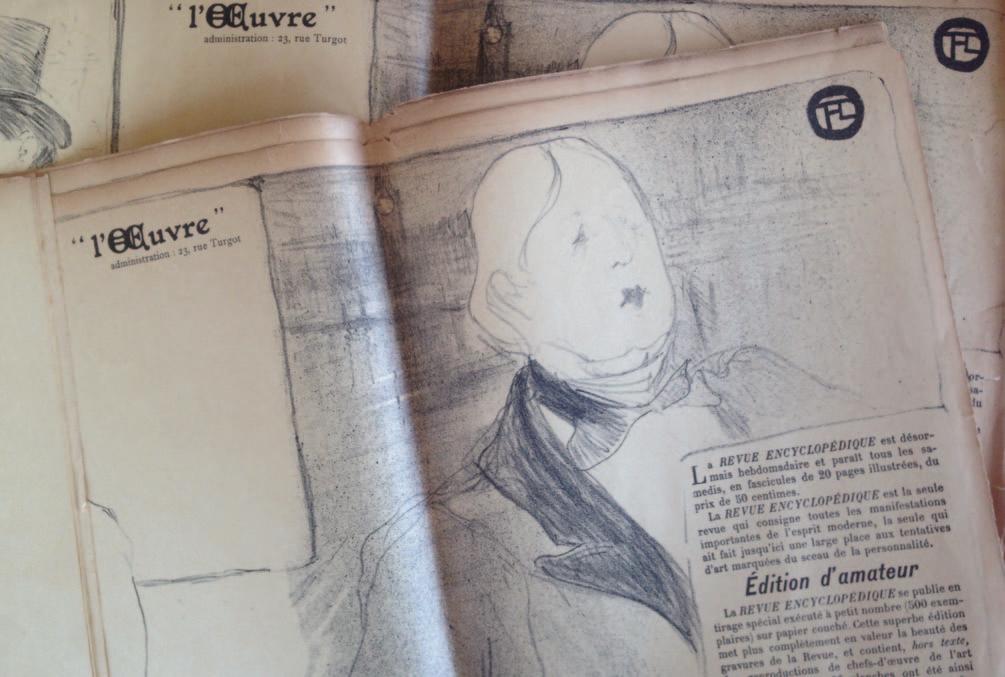
Roger Stoddard, an enthusiastic American librarian and admirer of Valéry, was intrigued by the discovery of a curious dedication: “Copy of Ronald Davis (who sells the worst and keeps the best for himself).” «Exemplaire de Ronald Davis (qui vend le pire et garde le meilleur pour soi)» is note, from a mysterious publisher, piqued his interest and led him to investigate. After a few dead ends, his research brought him to the collector Jacques Guérin, who recounted the story of Davis and Madame de Rothschild:
«During the First World War, Ronald Davis, an Englishman of Jewish descent and a soldier in France at the time, fell in love with a Frenchwoman and settled in Paris, where he opened a small bookstore in 1920.
One day, Alexandrine de Rothschild (1884-1965), a wealthy, strong-willed, and powerful woman from the prominent banking family, entered his shop. She became a loyal client, and Davis, through auction acquisitions, enriched her already impressive bibliophile collection.
!anks to Madame de Rothschild, Davis’s business flourished, and he gained a certain renown. However, his main client had specific demands, such as instructing him to move his bookstore closer to her residence. !e Faubourg Saint-Honoré soon became his new base of operations.
Davis was also a collector himself, particularly of Baudelaire’s works, which he had admired even before his emigration to France. Madame de Rothschild enabled him to amass a respectable collection.
In addition to his passion for rare books, publishing, and running the bookstore, Davis briefly participated in the literary magazine Commerce, initiated by Adrienne Monnier, a bookseller, publisher, and salon manager. Monnier ended her role as editorial secretary after the first issue due to a disagreement with Jean Paul Fargue, passing the baton to Davis in the fall of 1924. However, Davis’s tenure was short-lived, as he met an untimely death in his sports club on rue Daru, on Wednesday, August 26, 1931, in a rather unheroic manner, after being struck by a golf club.» (Stoddart*)
After his death, Camille Marie Joséphine Morel, Ronald Davis’s wife, continued the rare book and autograph business under the name Chez Mme Ronald Davis at 12 Avenue Franklin-Roosevelt, later enlisting the help of bookseller Maurice Chalvet to manage the business.
ough Ronald’s art collection was transferred to Camille upon his death, little is known about what became of it after her passing in 1973. In 2014, some Rodin drawings from the collection resurfaced at Hôtel Drouot.
Roger E. Stoddard, “À Ronald Davis qui Vend le Pire et Garde le Meilleur pour soi”, dans: Gazette of , the Grolier club, 43 (1991), p. 25-48, reprinted in A Library-Keeper’s Business, New Castle, Del.: Oak Knoll, 2002, pages 227–54.
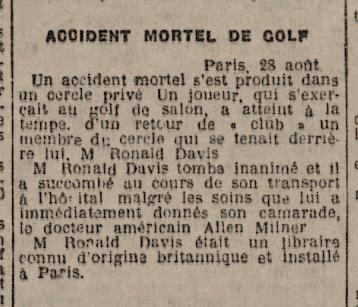
• Article de journal relatant l’accident de golf de salon
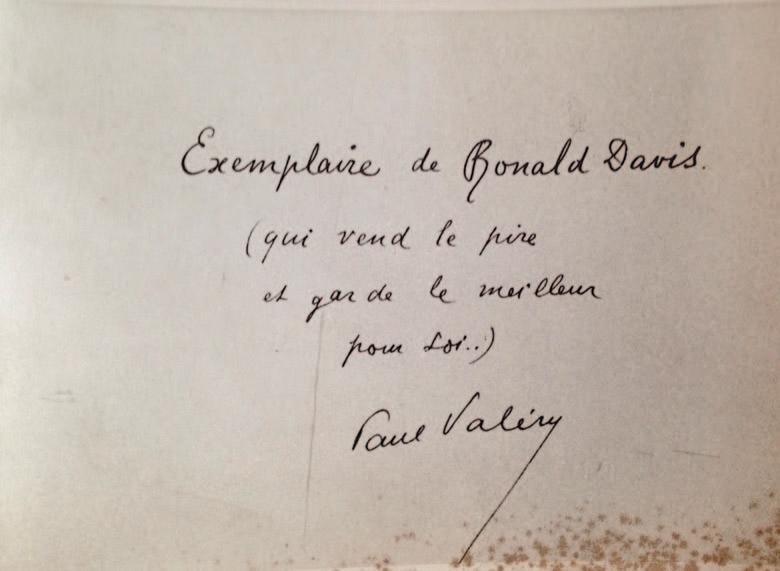
• Ronald Davis keeps the best ... and keeps a photograph of the mailing after selling the book ...

Second lacquered card, bearing the same stamp, and of the same provenance
• Similarities Between the Two Lacquered Cards
MMXXIV
Photographer of 96-98 Rue Blanche
Portrait of a Man in Waistcoat and Top Hat, circa December 1887
Direct print on blackened cardboard, 174x127 mm, Gautier-Martin stamp
Private collection, New York
Treasure hunters, those explorers of the past who unearth forgotten relics among wreckage and drifting objects, know that one discovery often leads to another. Like mushrooms in a forest, where finding one magnificent specimen often leads to others nearby, the person who found the small photographic card had a similar intuition to search further. This is how they stumbled upon a second, slightly larger card in an envelope, separated from the first, and decided to acquire it.
This second photographic card, of larger dimensions (174x127 mm compared to 90x118 mm), bears the same stamp: “Gautier Martin, breveté SGDG.” If we were referring to daguerreotype plates, we might say this one is a full plate, while the first would be a half-plate. This suggests that the photographer likely had a large, older camera, once used for daguerreotypes or collodion processes, now adapted to produce these direct prints.
This card was found at the same time as the first, in Ronald Davis’s country home, but in a separate folder without further information. A nail mark on the card indicates it was once simply hung up, reinforcing the idea of a modest photographer offering affordable portraits.
The portrait was taken in the same courtyard as the first. The blackened wooden table, perhaps oval, but more likely round with a square base, appears in both photographs.


The wooden door in the background may have led to the photographer’s darkroom, which he likely opened to gain enough distance to capture the group portrait.
However, one question remains: who is this man in the waistcoat and top hat? Could he be a mere visitor, perhaps a subscriber to the Théâtre-Libre? Paul Signac, perhaps?
After contacting the Signac family, they did not recognize the artist in this portrait.
We then compared the silhouette to that of André Antoine, as after all, a man of the theater could easily change costumes. Indeed, the roundness of the facial features seems to match, the elegant clothing is worn with the casualness of an occasional actor, and the facial hair is similar to what we know of André Antoine. The two portraits being from slightly different periods suggests the idea of a good neighborly relationship between the theater director and a nearby photographer.

• Jules Antoine, frère d’André
• Jules Rabot, photographe
MMXXIV
Une première piste explorée nous a menés au petit frère d’André Antoine. Daniel Danzon, arrièrepetit-fils de Jules Antoine, a organisé une remarquable exposition de photographies dans son magasin d’encadrement, Cadre Exquis, rue Doudeauville. Il nous a permis d’éclaircir le lien entre Signac et le Théâtre-Libre, probablement été établi par Jules. Par ailleurs Jules était photographe amateur sans que l’on puisse l’identifier avec l’auteur des images directes sur cartons vernis.
Jean-Baptiste Jules Antoine naît le 21 mai 1863 dans une famille de métayers près de Limoges. En 1868, la famille s’installe à Paris, où son père, Pierre-François, trouve un emploi à la Compagnie Parisienne d’Éclairage et de Chauffage par le Gaz, grâce à sa belle écriture. Jules grandit place des Vosges et fréquente l’école communale. La guerre franco-prussienne et le siège de Paris laissent des marques profondes sur la famille, qui perd la petite Marthe, emportée par la rougeole, et subit les répercussions des répressions sanglantes.
Son frère aîné, André, passionné de théâtre et de littérature, quitte l’école pour travailler avec leur père à la compagnie du gaz. Toute la famille reporte alors sur Jules les espoirs d’ascension sociale. Après avoir obtenu son certificat d’études et une bourse, il travaille comme commis dans le cabinet de l’architecte Léon Rivière, puis intègre l’École nationale des beaux-arts. La famille déménage ensuite rue de Sèvres, où Jules épouse en 1888 leur voisine Pauline.
André, ayant fondé la troupe du Théâtre Libre, se consacre entièrement à sa passion pour le théâtre. Jules, de son côté, est l’élément stable et conciliant de la famille. Il soutient financièrement son frère et tente de jouer un rôle de médiateur entre les parents et André, désormais en rupture avec son épouse légitime. En retour, André essaie d’intégrer Jules à sa troupe. Bien que Jules, beau jeune homme avide de nouvelles idées, ne participe qu’en dessinant quelques décors, il rêve de devenir artiste peintre. Cependant, il choisit la sécurité d’une carrière stable en devenant commissaire voyer de la ville de Paris en 1890.
Bien qu’il renonce à ses ambitions artistiques, Jules reste étroitement lié au milieu artistique. Il écrit sur la peinture dans la revue Art et Critique, fréquente le salon de Théo van Gogh, et soutient les néo-impressionnistes tout en faisant preuve d’un certain détachement face à leur rigueur théorique.
«Si je pense qu’il est peu probable que Jules soit mêlé à la prise de cette photographie, l’idée qu’il ait été dans les parages me plaît bien ! J’ai longtemps cru que c’était André qui avait introduit Jules dans le milieu des post-impressionnistes, mais je pense maintenant que c’est l’inverse. Jules avait abandonné ses ambitions artistiques à 24 ans, mais c’est lui qui a rencontré Léo Gausson, Maximilien Luce, puis Signac et Seurat. La rubrique peinture dans Art et Critique lui avait été confiée, car il connaissait bien ce milieu.» (Daniel Danzon, d’après les archives et souvenirs familiaux)
* ART ET CRITIQUE, Revue littéraire, dramatique, musicale et artistique, paraissant le samedi 1ère série : no. 1, 1er juin 1889-no. 84, 3 janvier 1891. Paris, Directeur : Jean Jullienl. Textes de Jules Christophe, Rodolphe Darzens, Félix Fénéon, Jean Jullien, Gustave Kahn, Stéphane Mallarmé, Paul Masson (sous le nom de Lemice-Terrieux), Jean Moréas, Lucien Muhlfeld, Adrien Remacle, Jules Renard, Alphonse Retté, Léo Trézenick, Georges Vanor, Paul Verlaine, Francis Vielé-Griffin (sous le pseudonyme d'Alaric Thomé), H. G. Villars, Willy, Émile Zola, etc.
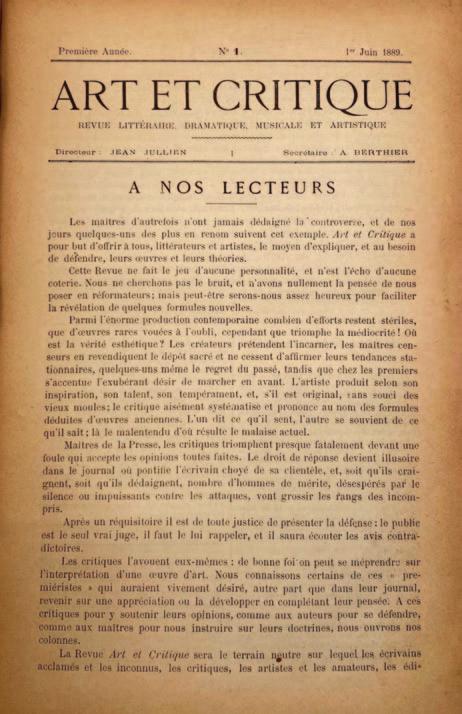

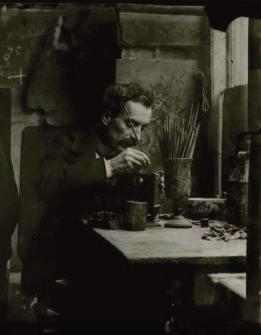
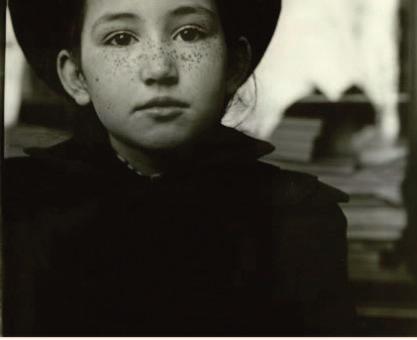
An inquiry with the principal photographers of the period yielded no results. However, a recent search through digitized newspapers revealed the name of a photographer located in the same building as the two shots on the varnished cardboard. This name, until now absent from the directories of Parisian photographers, constitutes a novel discovery.
In 1884, Alexandre Jules Rabot is listed as a photographer at 96-98 Rue Blanche, according to a legal notice published in Paris-Montmartre, a newspaper of the 18th arrondissement.
Although few biographical details are available, some key dates from his life are known. Born on August 25, 1834, Alexandre Jules Rabot was the son of Alexandre Rabot, a sea captain, and Joséphine Pouponneau. He married Marie Louise Armande Egérie Gatterre. Initially declared as a photographer, he was later registered as a cashier at the time of his death in Paris, in the 17th arrondissement, on July 21, 1907. He was buried at the Cimetière de la Miséricorde in Nantes (Loire-Atlantique), alongside his wife, with whom he shared his life despite a separation of property, likely a precautionary measure due to financial difficulties.
It is noteworthy that if Rabot feared professional bankruptcy in 1884, and if his name doesn’t appear in professional directories in subsequent years, it could indicate that he only worked as a photographer discreetly and intermittently. The ferrotype process, the most modest of all photographic processes, was often practiced by itinerant photographers, living hand-to-mouth.
Although no conclusive evidence is available to confirm this hypothesis, the modesty of the technique used — a direct image on repurposed cardboard — aligns with the idea that Alexandre Jules Rabot, a financially struggling photographer living modestly in the courtyard of 96-98 Rue Blanche, could very well be the author of this group portrait. The humble appearance of the wooden door visible in the photos, if it indeed led to his storeroom or studio, further supports this hypothesis.
It is also relevant to mention the presence of a camera manufacturer at the same address in 1893, at the time of his marriage: Paul Charles Joseph Poisson (according to the research of Marc Durand in the Paris notary archives). Could Poisson have taken over Rabot’s premises?

* But, apart from the first generation of inventors, it's hard to find camera manufacturers who are also photographers.

• Paris-Montmartre, issue of April 27, 1884

• In the Paris-Montmartre legal announcements page, issue of April 27, 1884
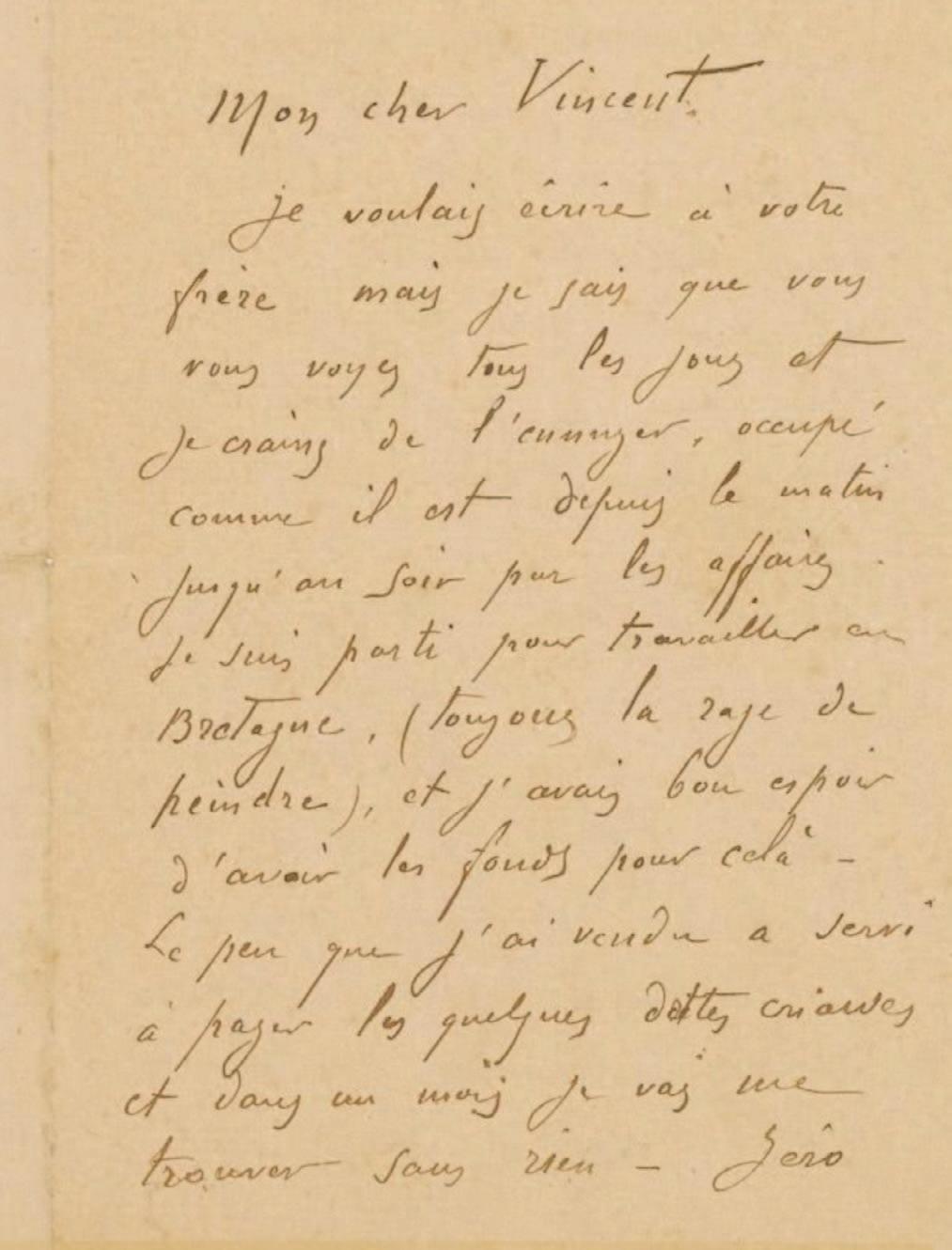
Second letter from Paul
to Vincent van Gogh, whom he believed to still be in Paris, February 1888
• First letter from Vincent van Gogh to Émile Bernard
• First letters from Paul Gauguin to Vincent van Gogh
• Letter from Van Gogh and Gauguin together to Bernard
54 rue Lepic (undated, December 1887, letter 575, complete translation)
«My dear friend Bernard, I feel the need to apologize for having left you so abruptly the other day. So I am writing to do so without delay. I recommend that you read Tolstoy’s Russian Legends, and I’ll also get you the article on Eugène Delacroix that I mentioned.
I ended up going to see Guillaumin, but in the evening, and I thought you might not know his address, which is 13 Quai d’Anjou. I think, as a person, Guillaumin has his ideas better in place than the others, and that if everyone were like him, we’d produce more good things and have less time and desire to tear each other apart.
I still believe that, not because I scolded you, but because it will eventually become your own conviction—I still believe that you’ll realize that in the studios, not only do you learn very little about painting, but also very little about life itself. You find yourself having to learn how to live and paint without relying on the old tricks and illusions of schemers.
I don’t think that your self-portrait will be your last or your best—though in the end, it’s very much you.
So, what I was trying to explain to you the other day comes down to this: to avoid generalities, let me give you a live example. If you are at odds with a painter, let’s say with Signac, and because of that, you say, ‘If Signac exhibits where I exhibit, I will withdraw my paintings,’ and if you denigrate him, then I think you are not acting as well as you could.
Because it’s better to think long and hard before judging so categorically and to reflect. Reflection helps us see, in case of a quarrel, as many faults in ourselves as in our adversary, and as many reasons to be sympathetic to them as we would want for ourselves.
So if you’ve already thought about how Signac and others who use pointillism often create very beautiful things—then instead of slandering them, it’s better, especially in times of disagreement, to appreciate them and speak of them sympathetically. Otherwise, we become narrow-minded ourselves, sectarian, and just like those who despise others and believe they are the only righteous ones.
This extends even to the academicians. Take, for example, a painting by Fantin-Latour—across his whole body of work. Here is someone who never rebelled, yet does that prevent him from having something calm and just in his nature, and from being one of the most independent characters there is?
I also wanted to say a word about your military service, which you will be required to do. You need to start taking care of that right away—directly, to be well informed about what can be done in such cases to maintain your right to work, to choose a garrison, etc., and indirectly, by taking care of your health.
You don’t want to enter it too anemic or too nervous if you want to come out stronger.
I don’t see it as such a great misfortune that you have to go off as a soldier but rather as a very serious trial. And if you come out of it, you will come out a very great artist. In the meantime, do everything you can to strengthen yourself because you’ll need a lot of energy. If you work hard this year, I believe you can build up a stock of canvases that we can try to sell, knowing you’ll need pocket money to pay for models.
I’ll do my best to ensure that what we’ve started in the exhibition room succeeds, but I believe the first condition for success is to leave behind petty jealousies. Only unity brings strength. The common good is worth sacrificing selfishness and everyone for themselves.
I shake your hand.
Bernard’s note: «The room Vincent refers to here is that of a popular restaurant on Avenue de Clichy, where he won over the owner and turned it into an exhibition of our paintings. Unfortunately, this socialist display of our incendiary works ended rather miserably. There was a violent altercation between the owner and Vincent, which led him to immediately fetch a handcart and take the entire exhibition to his studio on Rue Lepic. Evidently, the art of the Petit Boulevard was not understood by its barnum.». (Lettres à Bernard, 1911, page 75).
Notes du Musée Van Gogh : The letter reveals a disagreement between Van Gogh and Bernard about the value of studio training for a painter (Van Gogh believed an artist could learn little in that environment) and Bernard’s attitude toward the Neo-Impressionist Paul Signac, with whom Bernard refused to exhibit. Van Gogh, on the other hand, advocated for a more collective interest.
During 1887, Bernard and Anquetin distanced themselves from Seurat and Signac’s pointillism. They developed a “synthesizing” style, known as cloisonnism, heavily influenced by Japanese prints. Their work focused on outlines and contour, seeking solutions in large, simplified areas of color rather than in small dots (see Toronto 1981 exhibition catalog and letter 620, notes 11 and 12). While Bernard rejected the Neo-Impressionists, Van Gogh sought to bring them into the group of artists who had exhibited together at the Restaurant du Chalet. “The group that he wanted to attach Seurat and Signac to did not endure; its existence was limited to this one presentation.”
First letter, cat. 576, early or mid-December 1887 (complete, original text and translation)
Cher Monsieur, En venant de ma part vous trouverez chez Cluzel encadreur Rue Fontaine un tableau que j’ai remis à votre intention (pour notre échange). Si il ne vous convenait pas faites m’en part en venant vous-même choisir. Excusez-moi si je ne viens pas moi-même chercher les vôtres, je vais si peu dans votre quartier. Je les prendrai 19 Boulevard Montmartre si vous voulez bien les déposer à cet endroit.–
Tout à vous – Paul Gauguin
Dear Sir, By coming on my behalf, you will find at Cluzel, the framer on Rue Fontaine, a painting that I have left for you (for our exchange). If it does not suit you, let me know, and you can come choose yourself. I apologize for not picking up yours in person; I rarely go to your neighborhood. I will take them at 19 Boulevard Montmartre if you kindly drop them off there.
Yours sincerely, Paul Gauguin
Notes from the Van Gogh Museum: The framer Pierre Cluzel had his shop at 33 Rue Pierre Fontaine, below Montmartre. See Frédéric Destremau, “Pierre Cluzel (1850-1894), framer for Redon, Pissarro, Degas, Lautrec, Anquetin, Gauguin”, Bulletin of the Société de l’Histoire de l’Art Français, 1995, pp. 239-247.
Following the exhibition organized at the Restaurant du Chalet in November-December 1887 (see letter 640), Van Gogh exchanged his Sunflowers Gone to Seed (F 375 / JH 1329 [2554]) and Sunflowers Gone to Seed II (F 376 / JH 1331 [2555]) for Gauguin’s By the Lake, Martinique, 1887 (W252/W222) (Van Gogh Museum, Amsterdam). See Annet Tellegen, Vincent en Gauguin, Museumjournaal, 11 (1966), pp. 42-45.
Gauguin had been staying with Émile Schuffenecker since his return from Martinique in midNovember 1887, at 29 Rue Boulard, south of the Montparnasse Cemetery, which is quite far from Montmartre, where the Van Gogh brothers lived. The art dealers Boussod, Valadon & Co., for whom Théo worked, had their gallery at 19 Boulevard Montmartre, on the “Grands Boulevards,” not far from the Opera.
Additional remark: following the receipt of this letter, the exchange took place, and Gauguin met with Théo van Gogh, entrusted him with some paintings, and Théo made the first sale on December 26, 1887. For all these events to unfold in order, this letter seems to have been sent no later than mid-December.
Second letter, cat. 581, Pont-Aven, February 28 or 29, 1888 (complete translation)
My dear Vincent,
I wanted to write to your brother, but I know that you see each other every day, and I’m afraid of bothering him, as he’s busy from morning until night with work.
I have left for Brittany to work (always the passion for painting), and I had high hopes of having the funds for it. The little I sold went to pay some pressing debts, and in a month, I will have nothing left. Zero is a negative force. I don’t want to pressure your brother, but a little word from you on this matter would reassure me or at least help me wait more patiently. My God, how terrible financial matters are for an artist!
And if we need to make discounts, do not hesitate, as long as I can find some funds. I just spent 15 days in bed, laid low by the fever, but I’ve started working again. If I can last 5 or 6 months, I believe I’ll bring back some good canvases.
A word of encouragement if possible.
Yours truly, Paul Gauguin, Pont-Aven, at Madame Gloanec’s
Notes from the Van Gogh Museum: he letter is dated no later than March 1, since Théo must have sent it from Paris, and Vincent mentions in letter 582 around March 2 that he has since received it. Moreover, he doesn’t mention Gauguin’s letter in his letter to Théo of about Monday, February 27 (letter 580). Gauguin was apparently unaware that Van Gogh had moved to Arles, as Gauguin himself had left Paris for Brittany on January 26. See Merlhès 1989, p. 61.
In December 1887, Théo had taken several of Gauguin’s recent works on consignment. He exhibited four paintings: The Beach at Dieppe, Bathing at the Watermill of Bois d’Amour, Landscape with Pigs, and Va-et-vient, along with five ceramics by Gauguin. In January, another painting, Two Bathers, was exhibited. On December 26, 1887, Théo made the first sale of one of his works, Bathing at the Watermill of Bois d’Amour, for 450 francs. See Wildenstein 2001, pp. 217.
In 1888, Gauguin suffered for several months from the effects of malaria, dysentery, and hepatitis, which he had contracted during his trip to Panama and Martinique with the painter Charles Laval (April to October 1887). See Washington 1988 exhibition catalog, p. 45.
June 5, 1888 - Letter cat. 620, Vincent van Gogh to Théo van Gogh (excerpt)
…If Gauguin came here, he and I might accompany Bernard to Africa when he goes for his military service…
Anquetin and Lautrec—I think—won’t like what I’m doing. There appeared, apparently, an article on Anquetin in La Revue indépendante where he is named the leader of a new trend where Japonism is even more pronounced, etc. I haven’t read it, but anyhow—the leader of the “Petit Boulevard” is without a doubt Seurat, and in terms of Japonism, little Bernard has perhaps gone further than Anquetin.
What Pissarro says is true—you should boldly exaggerate the effects produced by the agreements or disagreements of colors. It’s like drawing—correct drawing or color isn’t necessarily the most important thing to strive for. Because, if you could fix the reflection of reality in a mirror with color and everything, it wouldn’t be a painting at all, no more than a photograph.
See you soon, a handshake…
November 1-2, 1888 - Letter 716, Van Gogh and Gauguin together to Bernard (complete)
My dear friend Bernard,
These days, we’ve been working hard, and in the meantime, I’ve read Zola’s The Dream, so I haven’t had much time to write.
Gauguin interests me greatly as a man—very much. I’ve long thought that in our miserable profession as painters, we most need people with the hands and stomachs of workers. More natural tastes, more loving and charitable temperaments than the decadent, burnt-out Parisian boulevardier.
Here, without a doubt, we are dealing with a primitive being with wild instincts. In Gauguin, blood and sex take precedence over ambition. But enough, you’ve seen him up close longer than I have, I just wanted to share a few first impressions.
Next, I don’t think it will surprise you much if I tell you that our discussions tend to address the difficult subject of forming an association of certain painters. Should or could this association have a commercial character, yes or no? We haven’t yet reached any conclusions or set foot on new territory.
As for me, I have a premonition of a new world, and I firmly believe in the possibility of a great artistic renaissance. I believe that this new art will have the tropics as its homeland.
It seems to me that we are merely intermediaries. And that it will only be a subsequent generation that will manage to live in peace. In the end, all these duties and possibilities for action will only become clearer through experience itself.
I was a bit surprised not to have received your promised studies in exchange for mine yet.
Now, something that will interest you—we’ve made some excursions to the brothels, and it’s likely we’ll end up working there often. Gauguin is currently working on a canvas of the same night café I painted, but with figures he saw in the brothels. It’s shaping up to be a beautiful thing.
I’ve made two studies of falling leaves in a poplar alley and a third study of the whole alley, entirely yellow. I declare that I don’t understand why I don’t make more figure studies when, in theory, it seems so difficult for me to imagine the painting of the future as anything other than a new series of powerful portraitists, simple and understandable to the general public. Well, maybe I’ll soon get around to painting the brothels.
I’ll leave a page for Gauguin, who will probably write to you too, and I shake your hand in thought.
Yours, Vincent.
Van Gogh’s postscript: Milliet, the sergeant of the Zouaves, has left for Africa and would love for you to write him one of these days.
Gauguin’s postscript: You would indeed do well to write to him to explain your intentions, so he can make preparations for you.
Don’t listen to Vincent—he’s, as you know, quick to admire and equally indulgent. His idea about the future of a new generation of painters in the tropics seems absolutely right to me, and I still intend to return there when I find the means.
Who knows, maybe with a bit of luck? Vincent has made two studies of falling leaves in an alley that are in my room, and you’d love them—painted on very coarse sackcloth, but very good.
Send news of yourself and all the friends. T. Paul Gauguin
March 24, 1889 - Letter cat. 752, Vincent van Gogh to Théo van Gogh (excerpt)
I’m writing to let you know that I saw Signac, which did me a great deal of good. He was very brave and straightforward and very calm when the issue arose of whether or not to force open the door locked by the police, who had broken the lock. At first, they didn’t want to let us proceed, but in the end, we managed to enter. I gave him a still life as a keepsake—the one that had enraged the good police officers of Arles because it depicted two smoked herrings, which, as you know, are called “gendarmes”…
Rarely, if ever, have I had such a conversation with an Impressionist, without any disagreements or irritating clashes on both sides…

Les Hommes d’Aujourd’hui, 1891, notice and drawing by Émile Bernard, BNF Collections
• Portrait by John Peter Russell, 1886
• Self-Portrait with Pipe and Glass, January 1887
• Self-Portrait as Painter, December 1887-January 1888
• The Painter of Sunflowers, 1888
• Self-Portrait with Mutilated Ear, 1889
• Souvenir of the Subscription, 1891
• MMXXIV
John Peter Russell (1858-1930)
Vincent van Gogh in Paris, 1886
Oil on canvas, 60.1 cm x 45.6 cm
Van Gogh Museum, Amsterdam
e Australian painter John Peter Russell met Vincent van Gogh at Fernand Cormon’s studio. He painted this portrait of his friend in 1886, in a realistic and conventional style. Although the portrait shows some photographic influence, the face and hand retain Impressionist touches.
In 1885, the young Australian-born painter John Peter Russell “settled in Paris and studied for eighteen months at the Atelier Cormon, run by the French painter Fernand Cormon. It was an ‘academic’ studio where Cormon aimed to teach his students the ‘rules’ necessary for their works to be appreciated by the Paris Salon juries. Many great painters, such as Émile Bernard, Louis Anquetin, and ToulouseLautrec, studied under Cormon during this period. Russell, who had studied portraiture at the Slade School of Art, maintained an interest in this art and often painted portraits of his friends and fellow students. In March 1886, while Russell was attending the Atelier Cormon, a new student enrolled— Vincent van Gogh. Vincent had just arrived in Paris and was living with his brother !éo in an apartment on Rue Laval in Montmartre, to study at Cormon’s studio. A lasting friendship developed between Van Gogh and Russell. By October 1886, Russell finally persuaded Van Gogh to sit for him. !e result was this stunning portrait of the Dutchman…”*
The portrait was not originally as dark. Another artist, Archibald Standish Hartrick, who met Van Gogh at Russell’s studio, later recalled: “[Russell] had just completed this portrait of him in a blue striped suit.” Indeed, faint blue stripes can still be seen in the lower part of the painting. An analysis also revealed that the words “Vincent, in friendship” were once painted in red above Van Gogh’s head.
For Hartrick, this was the most faithful portrait of Van Gogh—more realistic than those by other artists or Vincent’s own self-portraits. Van Gogh himself was very fond of it. Years later, he wrote to his brother éo: “And keep well my portrait by Russell, to which I am so attached.”
One more fact about Russell and Montmartre: “In Paris, on February 8, 1888, he married the beautiful Italian model of Auguste Rodin, Marianna Antoinetta Mattiocco.”
* blog article : https://mydailyartdisplay.uk/2013/10/04/john-peter-russell-part-1-van-gogh-and-portraiture/
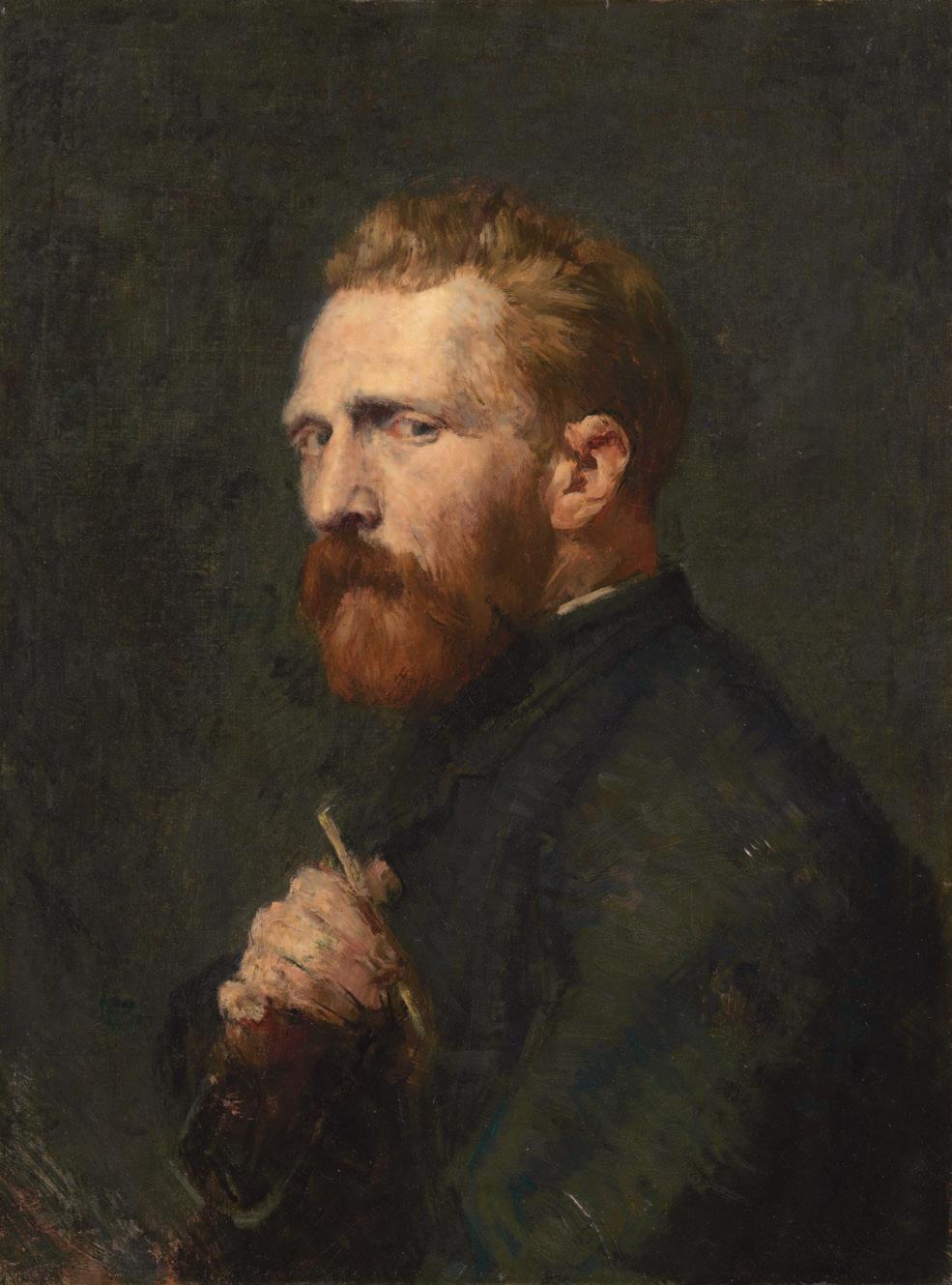
Vincent van Gogh (1853 - 1890)
Self-Portrait with Pipe and Glass, Paris, January 1887
Oil on canvas, 61.1 x 50.2 cm
Van Gogh Museum, Amsterdam
Van Gogh depicts himself here with a full glass in front of him. Is he sitting at the bar?
He regularly painted self-portraits, especially during his stay in Paris. Due to a lack of funds, he often reused older canvases, as is the case here. Research conducted by the museum revealed that beneath this smoking-pipe portrait lies the image of a half-nude woman.
This painting was kept by Jo Bonger, despite being exhibited in 1927 at the Galerie BernheimJeune, accompanied by a publication*. It was later passed down by her son, Vincent Willem van Gogh, to the Van Gogh Museum in Amsterdam.
* Jacob Baart de la Faille, L'époque Française de Van Gogh, Paris, 1927, p. 11

Vincent van Gogh (1853 - 1890)
Self-Portrait as a Painter, Paris, December 1887-February 1888
Oil on canvas, 65.1 x 50 cm
Musée Van Gogh, Amsterdam (Fondation Vincent van Gogh)
In this self-portrait (painted from a mirror), exhibited and made famous starting in 1905, Van Gogh depicts himself as a painter, holding a palette and brushes behind a canvas on an easel. He asserts his status as a modern artist by adopting a new painting style, using vivid, almost unmixed colors.
The palette in his hand displays complementary color pairs: red/green, yellow/violet, and blue/orange, exactly the shades he used for this painting. He juxtaposes these colors in a way that enhances their intensity, such as the blue of his smock and the reddish-orange of his beard.
Self-Portrait as a Painter is the last work Van Gogh completed in Paris.
The city had mentally and physically drained him. In a letter to his sister Wil, he describes how he portrayed himself: “wrinkles on my forehead and around my mouth, a stiff, bristly face, a very red beard, quite carefree and sad.”
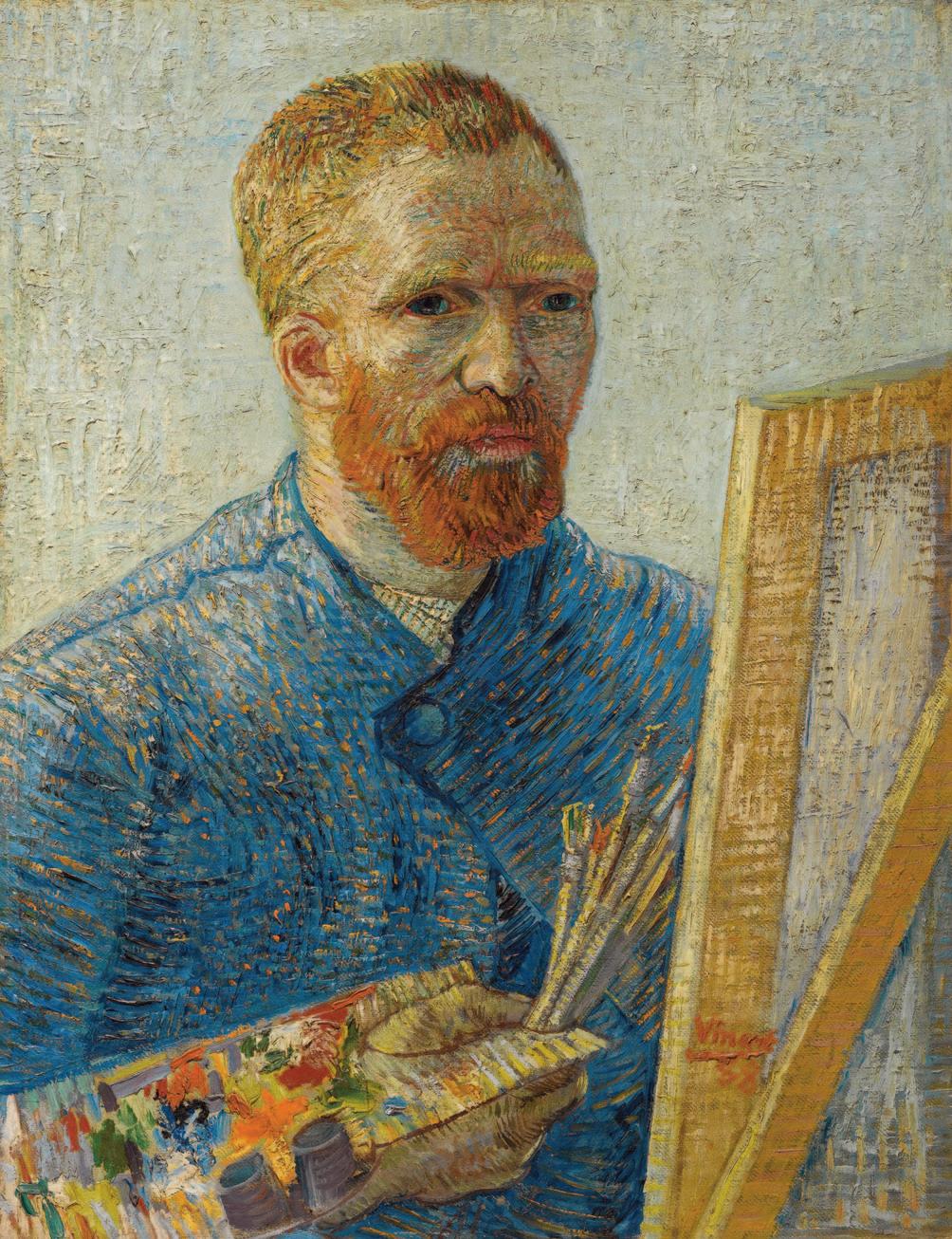
Paul Gauguin (1848-1903)
Van Gogh Painting Sunflowers, Arles, December 1888
Oil on canvas, 73 x 91 cm
Musée Van Gogh, Amsterdam
The Painter of Sunflowers was sent to Théo van Gogh on December 20, 1888, shortly after an incident in which Van Gogh reportedly threw a glass of absinthe at Gauguin’s face. A few days later, on December 23, 1888, a disagreement with Gauguin was followed by the infamous event where Van Gogh cut off his left ear with a razor.
In a letter sent to his brother Théo later in 1889, Van Gogh wrote about Gauguin’s painting: “Did you see the portrait he made of me painting sunflowers? My face has brightened a lot since then, but it was really me, extremely tired and charged with electricity as I was at that time.”
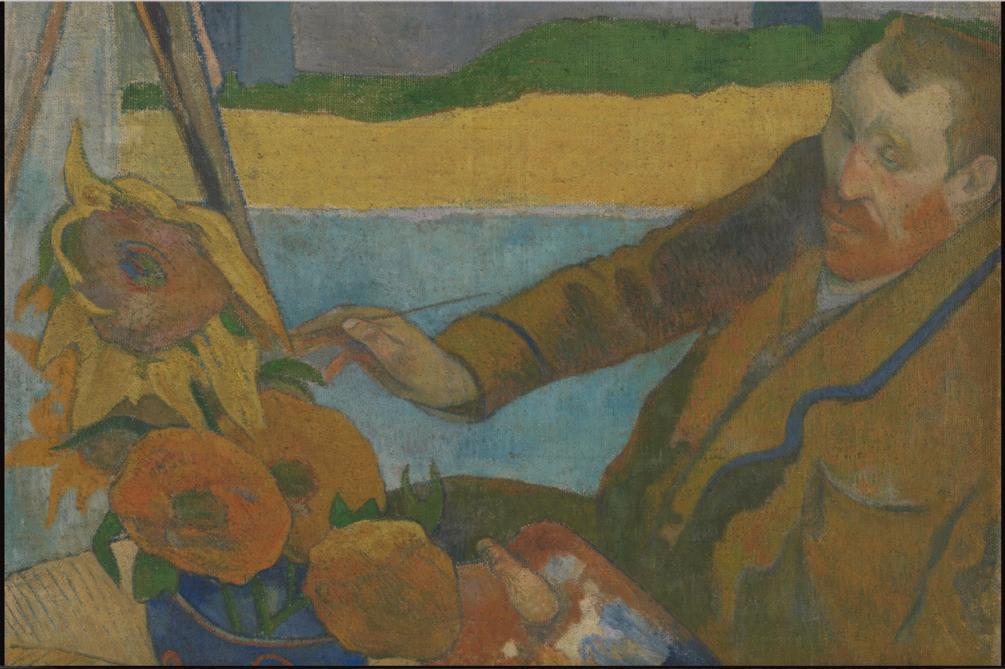
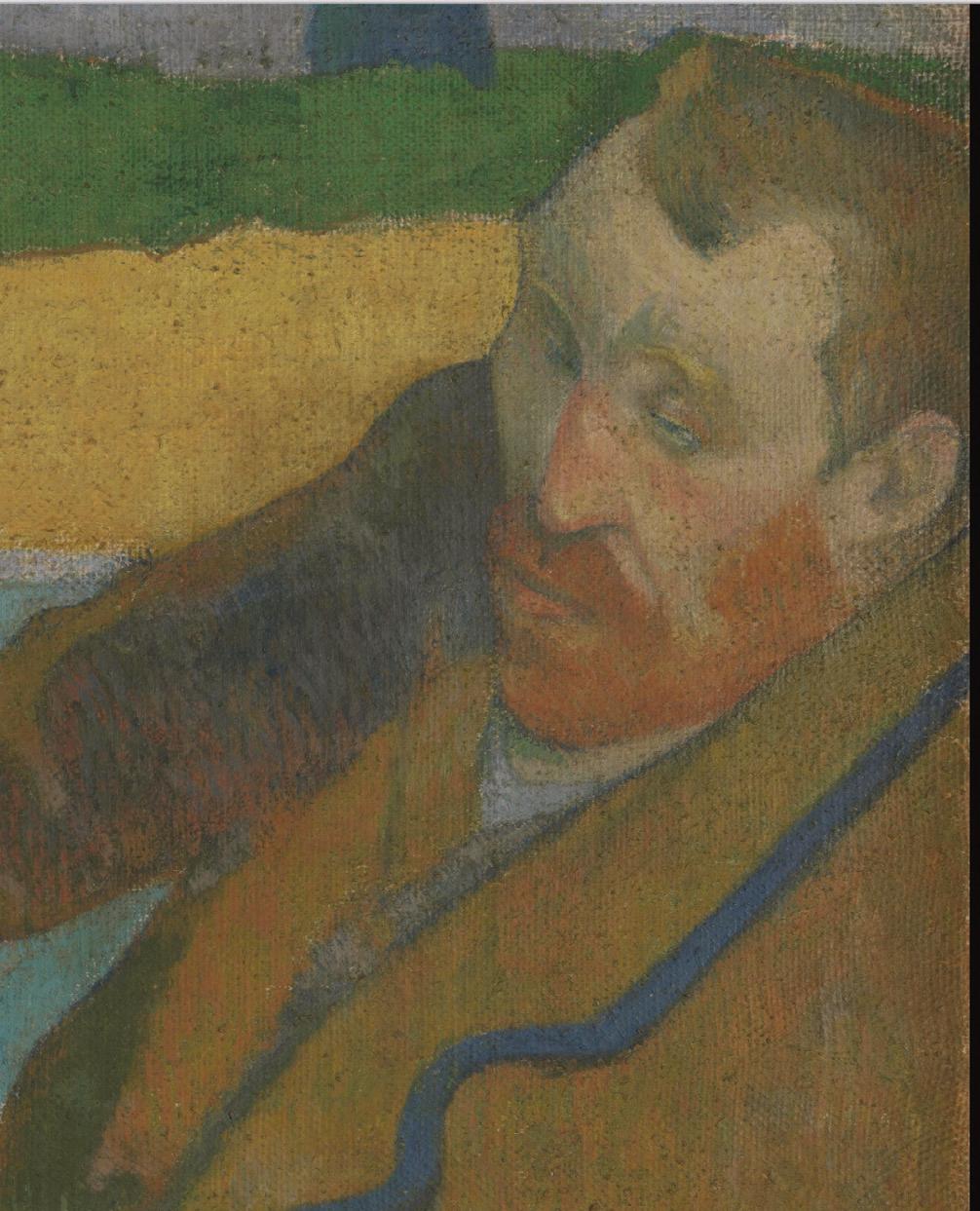
Vincent van Gogh (1853-1890)
Self-Portrait with Mutilated Ear, Saint-Rémy-de-Provence, 1889 Oil on canvas, 40 × 31 cm
National Gallery, Oslo
Van Gogh painted this self-portrait while in an asylum in Saint-Rémy in late summer 1889, following a severe psychotic episode, as reported by the Van Gogh Museum. To date, it is the only known work that was painted during such an episode.
In 1910, the Oslo museum acquired the work, convinced at the time that it was an authentic Van Gogh. However, since 1970, its authenticity had been seriously questioned due to the style and colors, which did not match what was known of the artist, and the uncertainty regarding where and when it was created.
The Oslo museum initially conducted its own investigation and discovered that the painting had originated from the Ginoux couple in Arles, who were friends of Van Gogh. However, the precise date of its creation remained unclear.
In 2014, the museum sought the expertise of researchers from the Van Gogh Museum in Amsterdam. After conducting extensive technical and stylistic analyses, they linked it to a painting Van Gogh mentioned in a letter to his brother Théo: “an attempt […] from the time I was ill.” Researchers were then able to definitively confirm that it was indeed a Van Gogh, though a highly unusual one.
Unlike two other famous works from the same period, the Oslo self-portrait clearly depicts a mentally ill man, as noted by the Van Gogh Museum during its January 2020 exhibition: “Van Gogh portrayed himself with his head slightly tilted and his body somewhat turned away. The sideways, timid gaze is easily recognizable and common in the psychotic features of depressed patients.”
The debate over the cut ear was finally settled in favor of the left ear following the discovery, in the archives of Van Gogh’s first American biographer, of a letter from Dr. Félix Rey, who treated Vincent in December 1888. This letter, accompanied by precise sketches, definitively resolved the discussion.
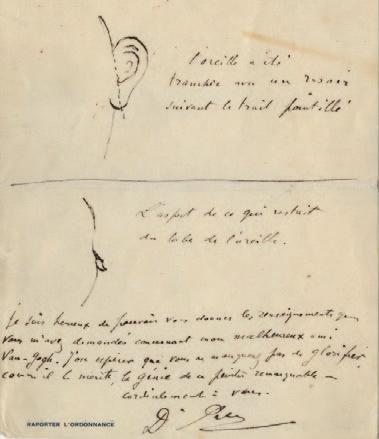
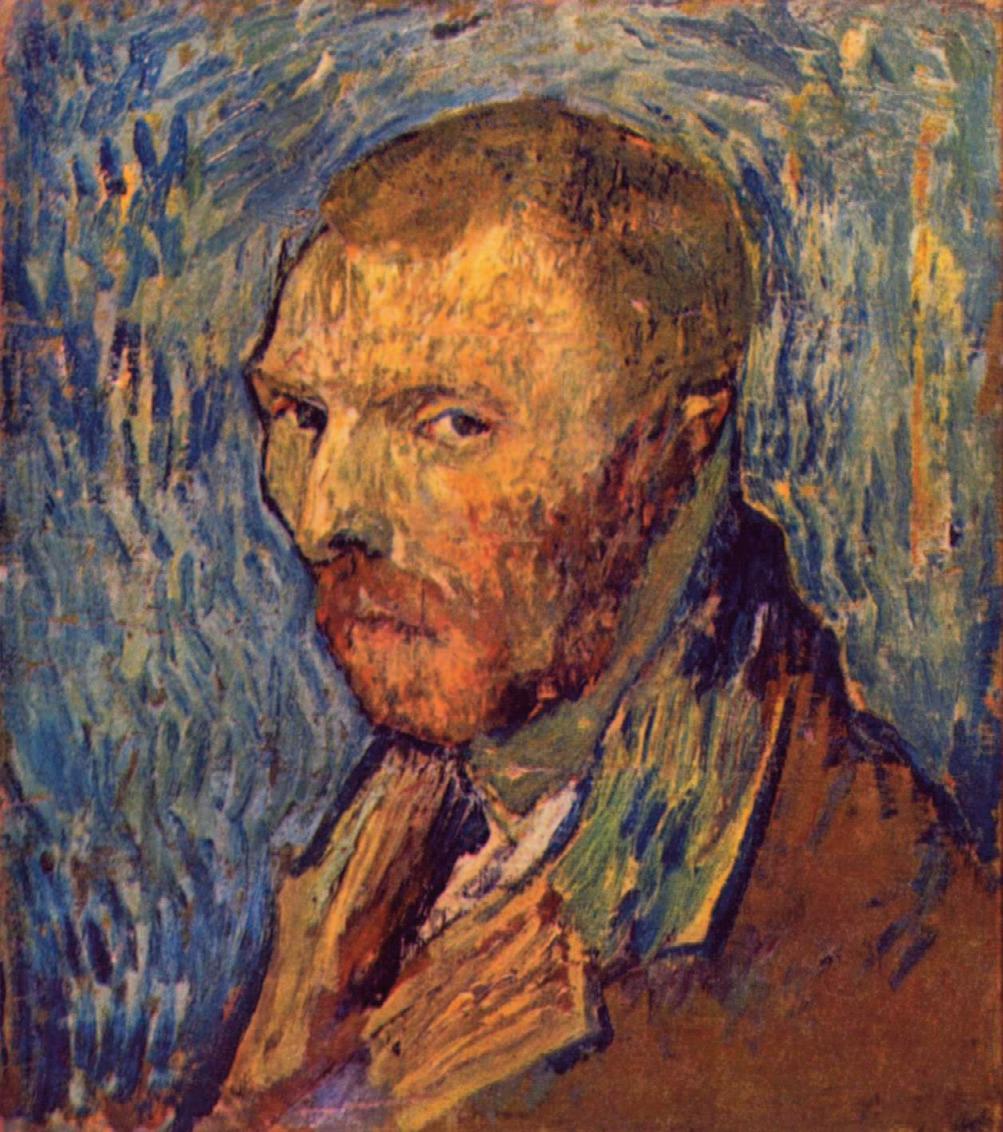
Image of Vincent van Gogh as described by Émile Bernard:
“Red-haired, a goatee, rough mustache, closely cropped hair, an eagle’s gaze, and a sharp mouth, so to speak; of average height, stocky without being overly so, with brisk gestures and a jerky walk, that’s Van Gogh, always with his pipe, a canvas or a print or a piece of cardboard.”
(Émile Bernard, La Plume, September 1891)
“During the winter of 1891, the artist [Bernard] offered to help Johanna Bonger, Théo van Gogh’s widow, find a place in Paris, whether at the Théâtre Libre, the Théâtre d’Application, or even a rented shop, to exhibit Vincent’s works. After Théo’s death, Émile Bernard, along with Andries Bonger, organized, sorted, packed, and arranged for the shipment of Vincent’s works to Johanna van Gogh-Bonger in Holland. During this same period, Bernard had certain works by Van Gogh photographed, with a view to a future publication of the artist’s letters...
Bernard’s numerous publications on the life and art of Van Gogh provided him with further opportunities to enrich his personal collection. He also maintained close relations with Johanna van Gogh-Bonger and her brother Andries during his stay in Cairo and after his return to France. From Cairo, he offered to help Andries Bonger sell Van Gogh’s paintings that remained at Père Tanguy’s shop in Paris.
The core of Émile Bernard’s collection consisted of a significant group of Van Gogh’s works, which he sold to Ambroise Vollard after his arrival in Cairo. The business relationship between the painter and the dealer had begun before Bernard’s departure for Egypt. In 1892, Vollard, who had just opened his gallery on Rue Laffitte in Paris, bought a painting by Gauguin and a still life by Armand Guillaumin, which had hung in the dining room of Bernard’s parents’ home. Letters Bernard wrote from Cairo provide details about the transactions with Vollard—thirteen Van Gogh works—which were recorded in the dealer’s account books between August 1894 and December 1907. By 1910, Bernard had sold all the Van Gogh paintings and drawings from his collection. Vollard also acquired the rights to reproduce the letters in order to prepare an edition of Letters from Vincent van Gogh to Émile Bernard, published the following year.
Around 1926, nearly forty years after the Dutch painter’s death, Berlin collector Marianne von Friedlaender-Fuld, Baroness R. Goldschmidt-Rothschild, acquired the last significant part of Bernard’s collection: twenty-two letters from Van Gogh and one from Gauguin.”
(Bogomila Welsh-Ovcharov, Émile Bernard, un extraordinaire collectionneur de Vincent van Gogh, Émile Bernard. Au-delà de Pont-Aven, édité par Neil McWilliam, Publications de l’INHA, 2012).
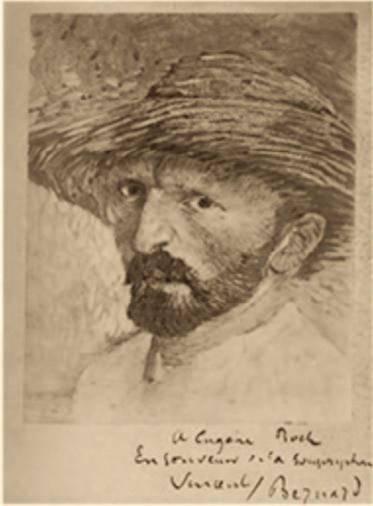
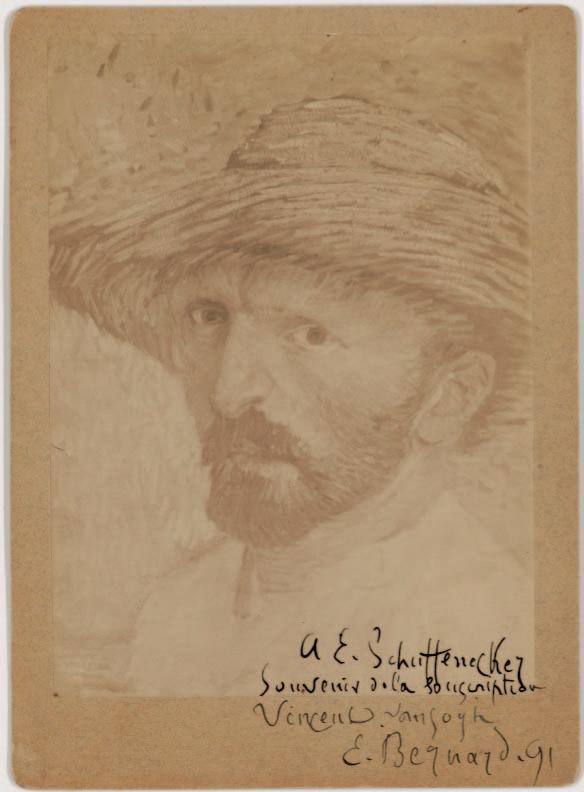
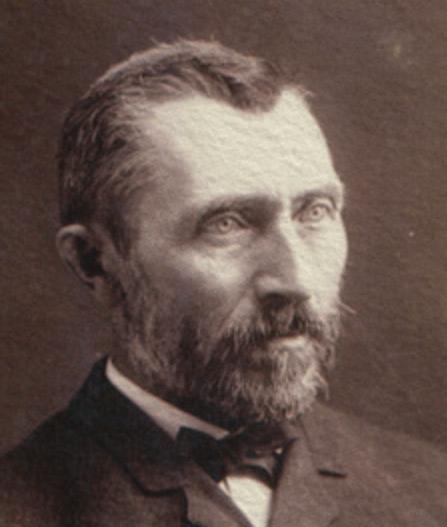

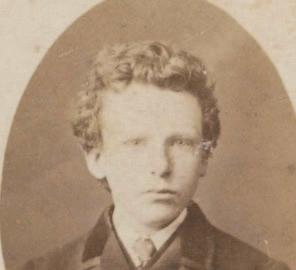
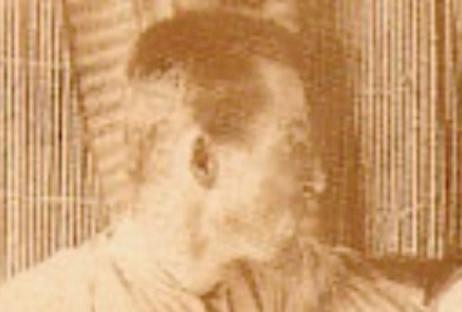

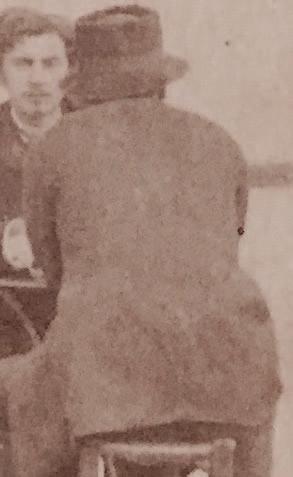
• Théo, Schoolboy at Age 13, 1871
• Théo Employed by Goupil & Co, Brussels, 1873
• Vincent Employed by Goupil & Co, The Hague, 1873
• Théo Employed in The Hague, 1878
• Théo, Promoted in Paris, 1882
• Students of the Académie Julian ?
• Émile Bernard à Asnières, 1886 ?
• Eugène Boch in Arles ?
• A Portrait in Canada ?
• Théo van Gogh’s Wedding, Amsterdam, 1889
• Cor van Gogh
SENIGALLIA
• MMXXIV • • X •
Hermanus Jodocus Weesing (1844-1910)
Théo van Gogh at the age of 13, Amsterdam, February 1871
Albumen on cardboard, carte de visite format
Musée Van Gogh, Amsterdam
Théo van Gogh was the second son of the preacher Théodorus van Gogh and Anna Cornelia Carbentus, born on May 1, 1857. His brother Vincent, four years his senior, began corresponding regularly with him in 1872.
Unlike Vincent, who only attended the village school in Zundert, Théo was first privately educated by a governess, Anke Maria Schuil (1850-?), from July 1867 to June 1869, and, in all likelihood, by Jeanne Struick as well. After the family moved to Helvoirt in 1871, Théo had to endure the daily walk to school in Oisterwijk, braving the weather. He attended “the independent, nonsubsidized school for advanced primary education at Lindeind,” where he took courses in French, German, English, and mathematics. However, it was not a great success.
Poor results, the long distance to school*, and probably also the tuition costs led Théo’s father to end his schooling at the end of 1872. Afterward, he sought a position that suited Théo’s talents. Théo’s Uncle Cent eventually found the solution, as he had for Vincent in 1869. Being a partner at Goupil & Cie, the father’s favored brother—an exceptionally wealthy man—was able to secure a position for Théo at the international art dealership. This is how Théo became the youngest salesperson at the Brussels gallery. Vincent, who had already worked at another branch for nearly four years, was delighted and sent Théo a message that very month: “I am very happy that you are also working for the same company…”
(Chris Stolwijk, “Notre couronne, notre honneur et notre joie”: Théo van Gogh’s Early Years , Van Gogh Museum Journal, 1998).

* It takes about two hours to walk the almost eight kilometers from the college to my father's house.

Balduin Schwarz (1842-1878 ?)
Théo van Gogh at the age of 15, Brussels, February 1873
Albumen on cardboard, carte de visite format
Musée Van Gogh, Amsterdam
For a long time, this portrait was thought to be of Vincent by the research department of the Van Gogh Museum in Amsterdam. This small portrait served as irrefutable evidence when determining the differences and incompatibilities with the fifth figure in the photographic group.
Indeed, there are notable differences between the faces of Théo and Vincent van Gogh. In particular, Théo’s right ear (visible on the left side of the image) is significantly protruding. Additionally, an old inscription on the back, reading “theo v. Gogh,” had been crossed out.
Théo was in Brussels at the beginning of 1873:
“ In agreement with Uncle Hein and Uncle Cent, in January 1873, Théo began working as an employee at Uncle Hein’s former gallery, located at 58 Montagne de la Cour, Brussels. His parents were pleased to see him eager to be useful barely a year after ending his schooling, as his mediocre academic results had led him to abandon further studies. As for Vincent, he was thrilled at the idea that they would both be working for the same company— he in The Hague, and Théo in Brussels.” (Yves Vasseur, Vincent van Gogh, Questions d’identités)
The photography studio was located on the corner of Rue d’Aremberg. The “Galerie du Roi” was part of the “Passage Saint-Hubert,” which Théo would pass through.
Before Balduin Schwarz, who operated there from February 2, 1870, to June 3, 1873*, a photographer named Nysten was registered at this address. Unfortunately, Nysten committed suicide with a gunshot to the head, apparently due to financial difficulties (La Meuse, October 23, 1866).

* We would like to thank the authors of the Directory of Belgian Photographers for their acute sense of precision.

Jacobus Marinus Wilhelmus de Louw (1823–1907)
Vincent van Gogh at the age of 19, The Hague, January 1873
Albumen on cardboard, carte de visite format
Musée Van Gogh, Amsterdam (Fondation Vincent van Gogh)
he hiring of young clerk Théo van Gogh led to a promotion and the employment of his older brother. Vincent van Gogh likely had this carte-de-visite portrait taken for the Goupil & Co branch in The Hague, which was managed for several years by his uncle and benefactor, also named Vincent van Gogh—commonly known as “Uncle Cent.”
Since July 30, 1869, Vincent had been working at the company, developed by his uncle, as an apprentice. Then, at the beginning of 1873, he was officially hired. The presence of a tie in the photograph may confirm that this carte-de-visite portrait was taken at the time of this formal employment.
In June of the same year, Vincent left to work at the London branch. He also spent time at the Paris branch of Goupil, but these experiences did not go well, and he eventually left the company for good in 1876.
When Uncle Cent passed away in 1888, he left something to all of his family members, except for his nephew Vincent, the painter. In his will, he specifically noted: “I wish that Vincent Willem van Gogh, the eldest son of my brother Théodorus van Gogh, shall not participate in my inheritance.”
Uncle Cent was evidently very disappointed that Vincent had not taken advantage of any of the opportunities he had provided for him since he was sixteen years old.

* “Ik wil nadrukkelijk bepalen dat het mijn wil is dat Vincent Willem van Gogh, de oudste zoon van mijn broer Théodorus van Gogh, niet zal delen in mijn nalatenschap”.
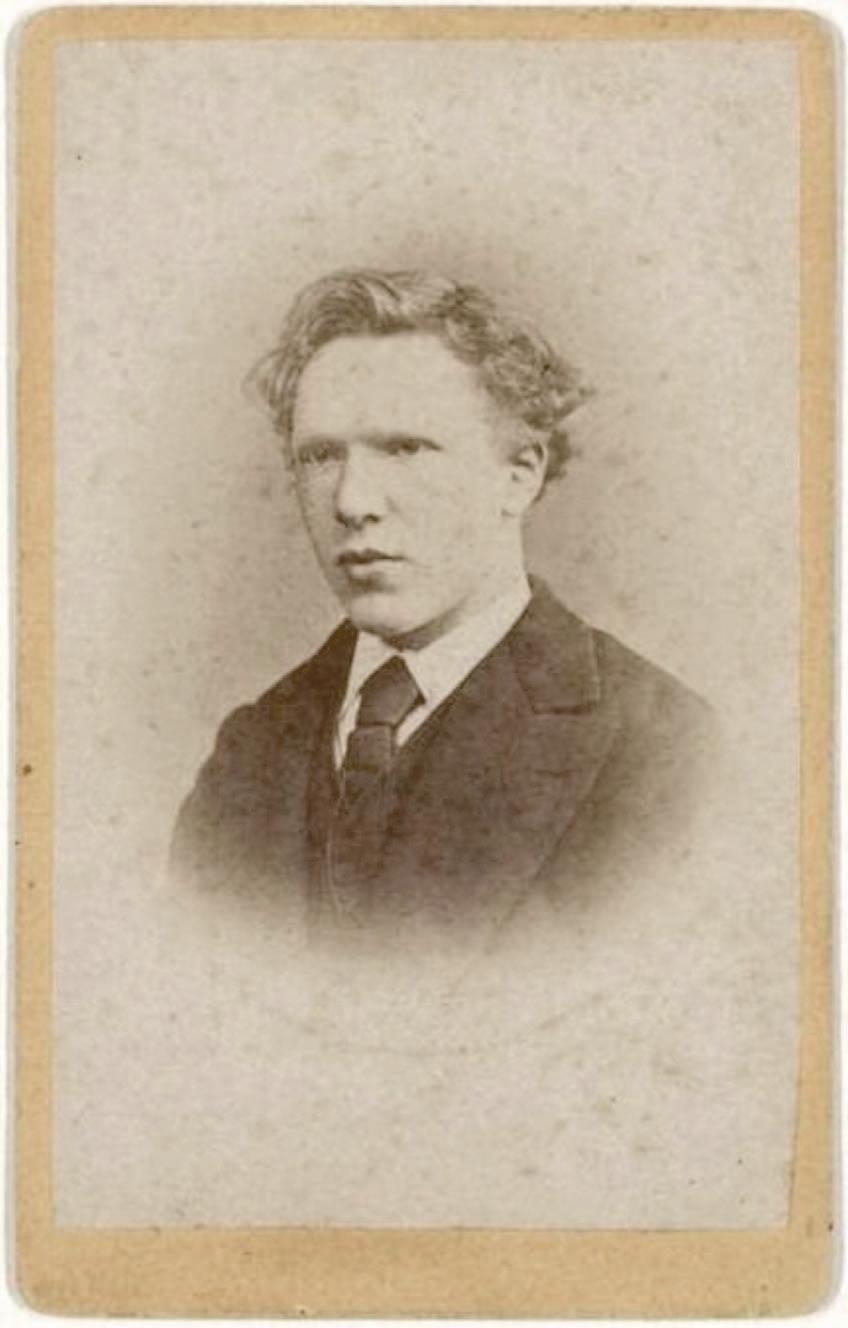
Johannes Lodewijk de Lavieter (De Lavieter)
Théo van Gogh at the age of 21, The Hague, May 1878
Albumen on cardboard, carte de visite format
Van Gogh Museum, Amsterdam
On the back of the photograph, an old ink inscription suggests that it could be Cornelis Vincent, Cor van Gogh, the youngest brother, born in May 1867.
A silver gelatin copy in the Fotocollectie Rijksvoorlichtingsdienst Eigen (National Archives of the Netherlands) bears the incorrect information on the back, stating that it is Vincent van Gogh at the age of 18.
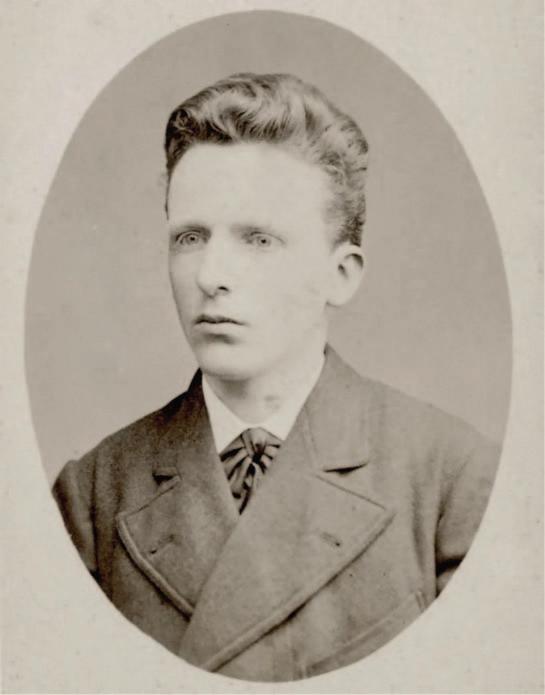
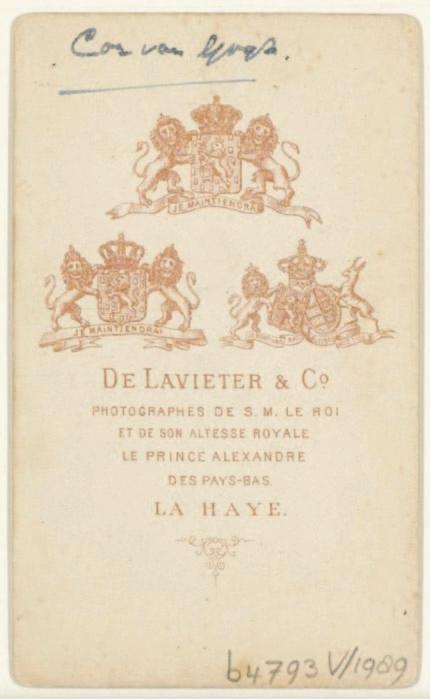

Ernest Ladrey (Alexandre, known as, 1831-1889)
Théo van Gogh at the age of 25, Paris, 97 rue de Richelieu, Passage des Princes, 1882
Albumen on cardboard, carte de visite format
Van Gogh Museum, Amsterdam
It is noted that Van Gogh decided to grow a mustache. A little later, around the time of his marriage, he also grew a beard.
.
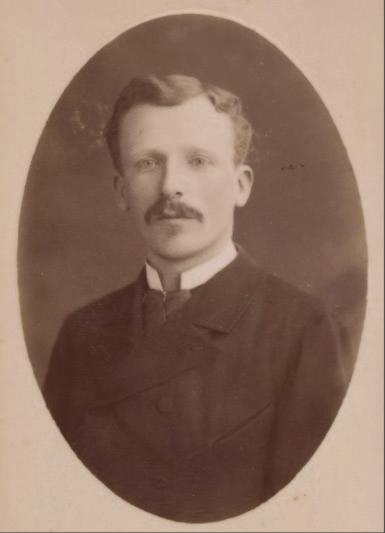
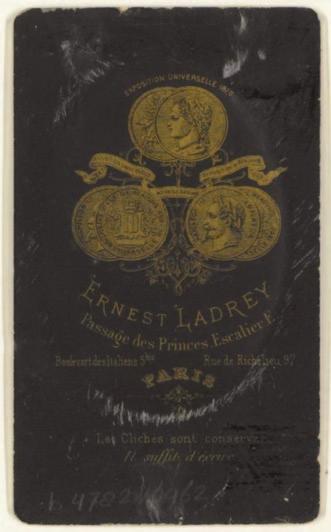
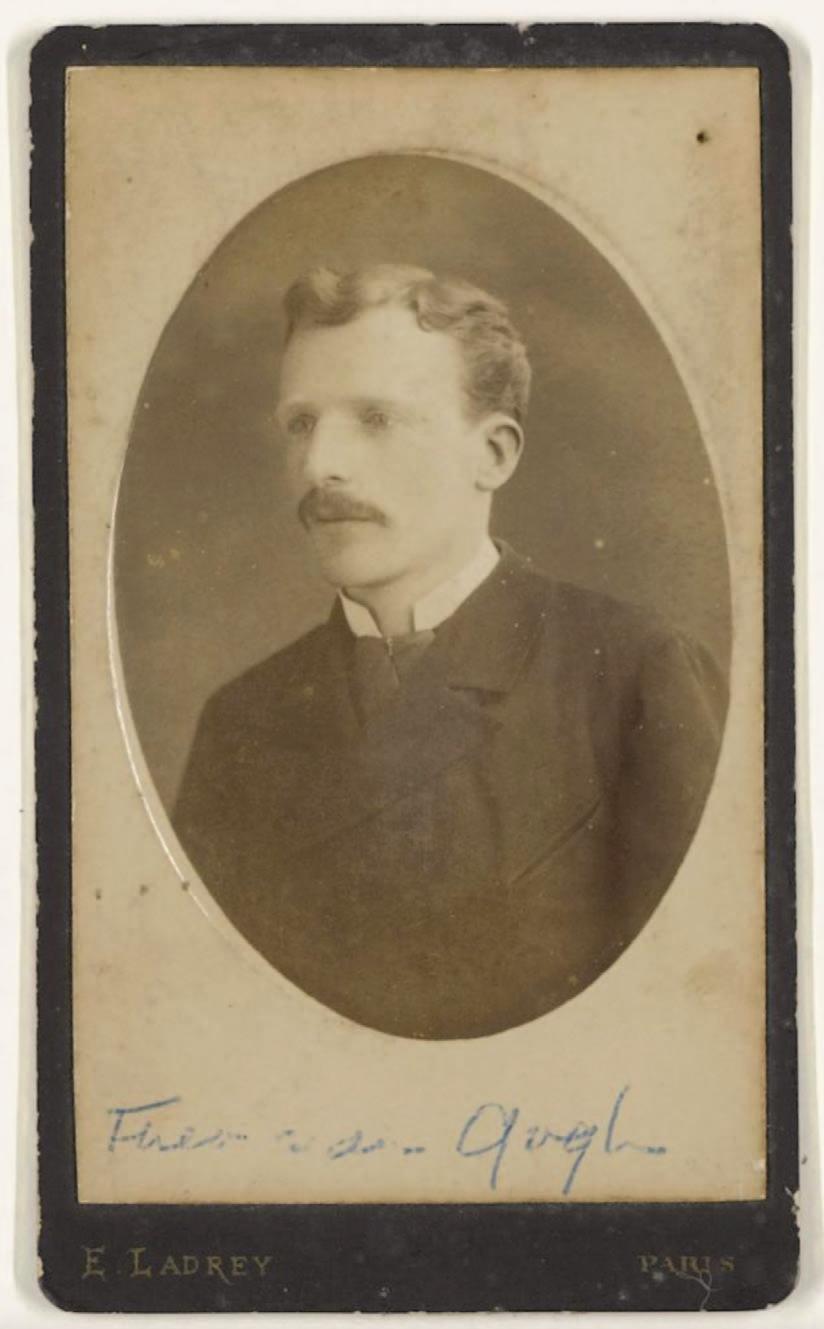
Edmond Bénard (1838-1907)
Group photograph in a painting studio, Paris, 1883-1888
Albumen print, 260x203 mm
Bibliothèque de l'INHA, Fol Phot 39 (1), n° 11.
This beautiful group portrait, taken by photographer Edmond Bénard and titled in his own hand as “Cormon and his students,” was the subject of intense identification efforts about 15 years ago.
Around 1885, Fernand Cormon’s studio was located in a building in a second courtyard at 104 Boulevard de Clichy, accessible from Rue Cauchois via Rue Lepic. Strangely, Fernand Cormon, known as “Father Rotule,” is absent from this group photo, although Bénard had photographed him separately at his home at 38 Rue Rochechouart.
Moreover, the storage lockers visible behind the students correspond to those in one of the workshops at the Académie Julian. An error in labeling between two prints cannot be ruled out.
Two Italian enthusiasts of the painter Vincent van Gogh, Messrs. Antonio de Robertis and Alan Zamboni, nonetheless suggested identifying a student in the third row, labeled number 12, as Vincent van Gogh — without success, as their fascinating research encountered multiple unresolved obstacles and contradictions.
Jérome Delatour, in a series of articles on the INHA blog, discussed several points of their investigation. He also noted the signature on the drawing of an academic subject on the easel located “far right of the photograph: “de FRANCQUEVILLE,” which seems to refer to Jean de Francqueville (1860-1939), a student at the Académie Julian in the course of Robert-Fleury (in 1883) and later in Bouguereau’s class (before 1888, the year of his marriage)*. This detail could at least corroborate the location and period of the photograph: the Académie Julian, between 1883 and 1888 at the latest»**

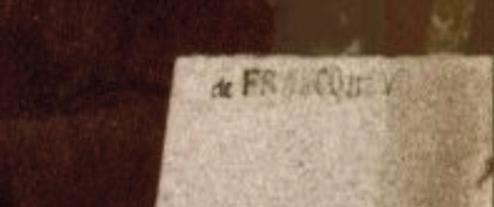
* Robert de Francqueville, Jean de Francqueville : un peintre picard, 1954, page 1.
**On line on the INHA website: https://blog.bibliotheque.inha.fr/fr/posts/portrait-photographie-van-gogh-bibliotheque-inha.html
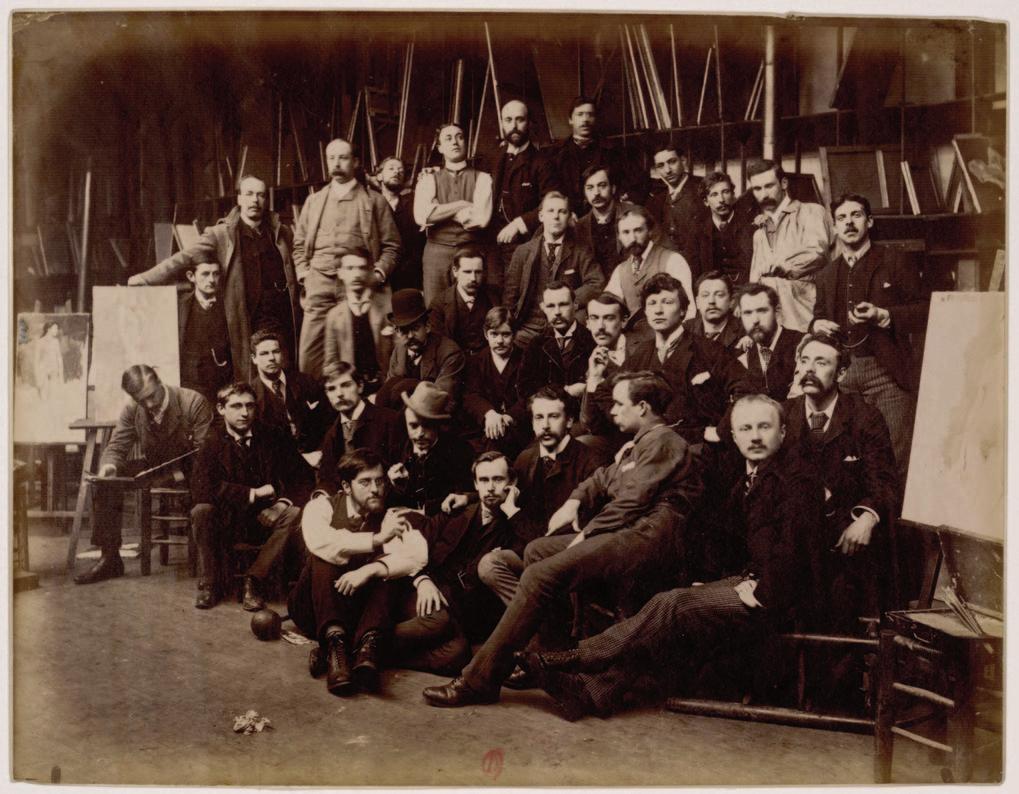

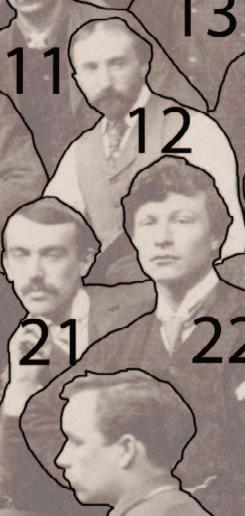
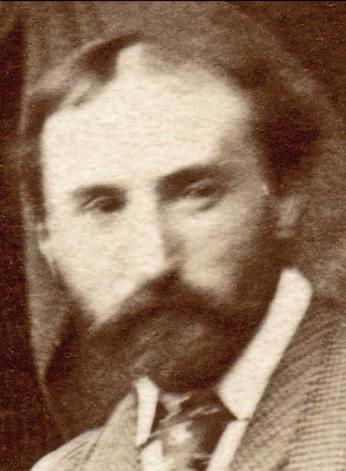
Photographer of Asnières
Émile Bernard seated at a table on a quay with a companion, 1886
Aristotype, 132x160 mm
Private collection, Paris
Annotation by Bernard on the print: “Asnières, my portrait in 1886,” and another inscription on the folded mount reads: “Émile Bernard in conversation with Vincent van Gogh on the quays of the Seine at Asnières. In 1887, both painted a canvas titled Le Pont d’Asnières, which can be seen in the background of this photograph.”
This identification by Bernard’s son after his death was validated by the Amsterdam Museum.
In 1910, the entirety of Van Gogh’s paintings and drawings from Émile Bernard’s collection had been sold. Vollard had also purchased the reproduction rights to the letters in preparation for an edition of Lettres de Vincent van Gogh à Émile Bernard, which the dealer published the following year. By 1926, almost forty years after the Dutch painter’s death, a Berlin collector, Marianne von Friedlaender-Fuld, Baroness R. Goldschmidt-Rothschild, acquired the last significant portion of Bernard’s collection: twentytwo letters from Van Gogh and one from Gauguin.
Three years before his death, Bernard even went so far as to demand compensation from the collector and art historian Douglas Cooper, who was preparing an English and American edition of Lettres de Vincent van Gogh à Émile Bernard. After Bernard’s death in 1941, nothing remained of Van Gogh’s collection in the possession of his family.*
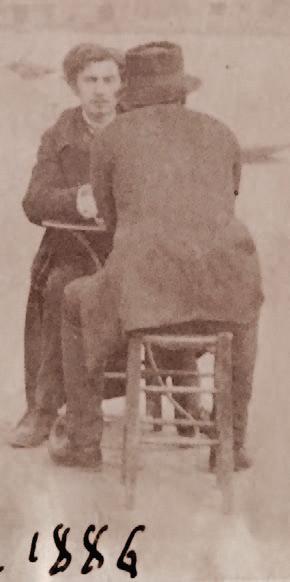

* Bogomila Welsh-Ovcharov, Émile Bernard, un extraordinaire collectionneur de Vincent van Gogh, Émile Bernard. Au-delà de Pont-Aven, édité par Neil McWilliam, Publications de l’Institut national d’histoire de l’art, 2012
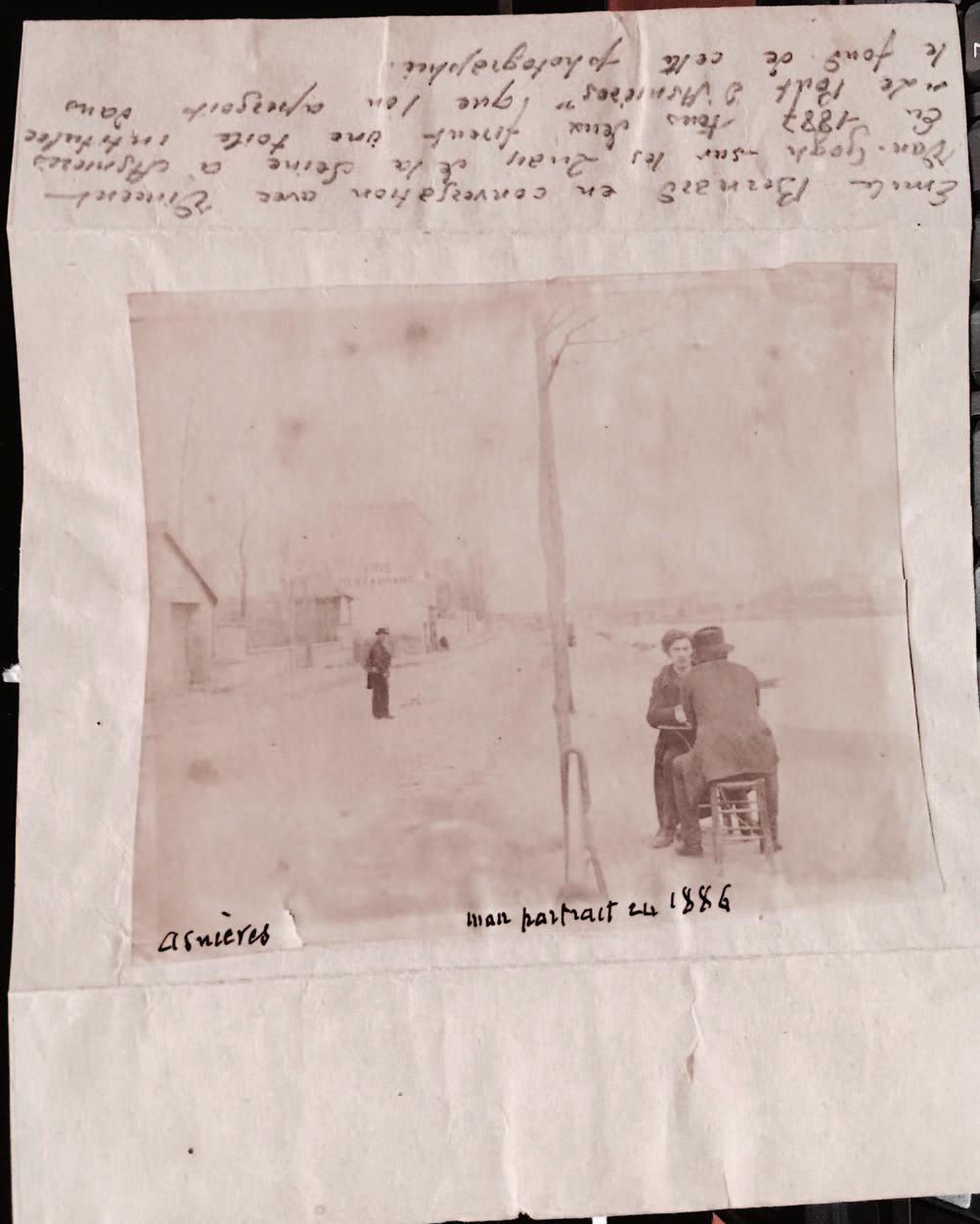
• Émile Bernard in conversation at Asnières, 1886, general view of montage and annotations
Photographer from Arles
Profile of a Man, circa 1888
Aristotype?, small dimensions
Villeroy and Boch Archives
From the family of industrialists who founded the renowned Villeroy and Boch company, Eugène Boch (1855–1941) supported impoverished and talented artists, including Émile Bernard, whom he met at the Atelier Cormon, and Paul Gauguin. He also exchanged works with numerous artists, including Vincent van Gogh, and gradually built an important collection of contemporary art.
Eugène Boch and his sister Anna dedicated a significant portion of the family fortune to supporting other artists. They purchased paintings from many prominent contemporary figures of their time, most of whom were also their friends. The Boch collection thus became a testament to their deep engagement with the artistic and intellectual circles of the late 19th century, reflecting their personal commitment to the development of modern art.

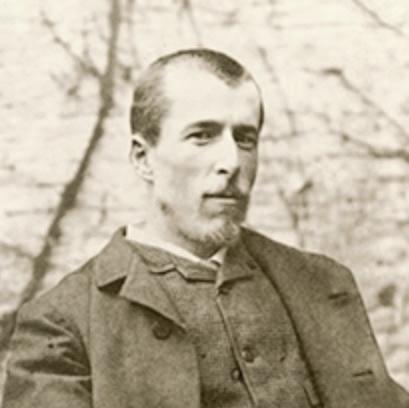
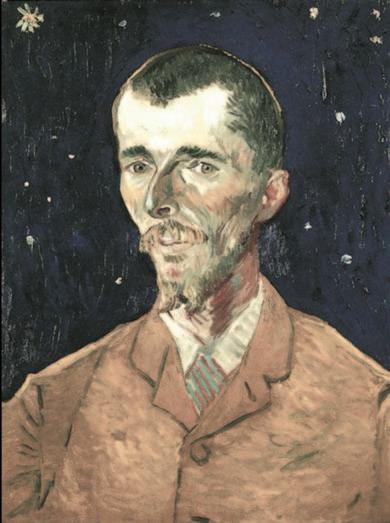
Victor Morin (1865-1960)
Portrait of a Clergyman Resembling a Van Gogh Self-Portrait St. Hyacinthe, Quebec, 1888-1895
Joseph Buberger Collection
“When the presumed photograph of Van Gogh came into the hands of American dealer Joseph Buberger, his friend Alan Philips had already begun the initial forensic expertise. These results convinced Buberger that it was indeed a photograph of Vincent van Gogh. Buberger later exhibited this photograph at the Seton Gallery of the University of New Haven, at the Henry Lee Institute of Forensic Sciences. Dr. Albert Harper, the executive director of the institute and a specialist in forensic anthropology, sponsored this exhibition, similarly convinced that the photograph depicted Van Gogh.
The photograph, measuring 4 ½ x 6 ½ inches, was authenticated as having been taken between 1885 and 1890, based on the thickness of the cabinet card and the materials used at the time. One of the first experiments involved overlaying a self-portrait sketch of Van Gogh (Paris, summer 1887, pencil and ink on paper, 31.6 x 24.1 cm, Amsterdam) onto the photograph. The two images proved to be very similar.
In a letter to Buberger, Van Gogh specialist Pascal Bonafoux, author of Van Gogh: Self Portraits, wrote: ‘Your discovery is fantastic!!!… Looking at this photograph, I have no doubt: this man is Vincent himself.’ However, the author of The Van Gogh Files, Ken Wilkie, questioned: ‘How did this photograph end up in the archives of a French-Canadian photographer [Victor Morin]?’
Where did this photograph originate? A Massachusetts antiques dealer bought a photo album from the late Morin. The photos mostly depicted clergymen. The album was later dismantled, and the photos were sold separately. Artist Tom Stanford, while browsing through the photos in the antique shop, immediately recognized the image of Van Gogh and bought it for a dollar. But how did the Quebec photographer Victor Morin take a photo of Vincent van Gogh? And why was Van Gogh’s photo among those of clergymen?*
However, the only information that appears on the photograph is the photographer’s name, Victor Morin, and the address of his studio: 42 St-François Street, St-Hyacinthe. There is only one StHyacinthe in the world, located in Quebec, which explains why the photograph was found in North America rather than Europe. Quebec archives identify a certain Victor Morin from Montreal, a notary and amateur photographer born in 1865. He obtained his law degree in Montreal in 1888 and practiced as a notary there until 1910.
* summary of the American article available at https://www.neatorama.com/2006/08/26/rediscovering-van-gogh/
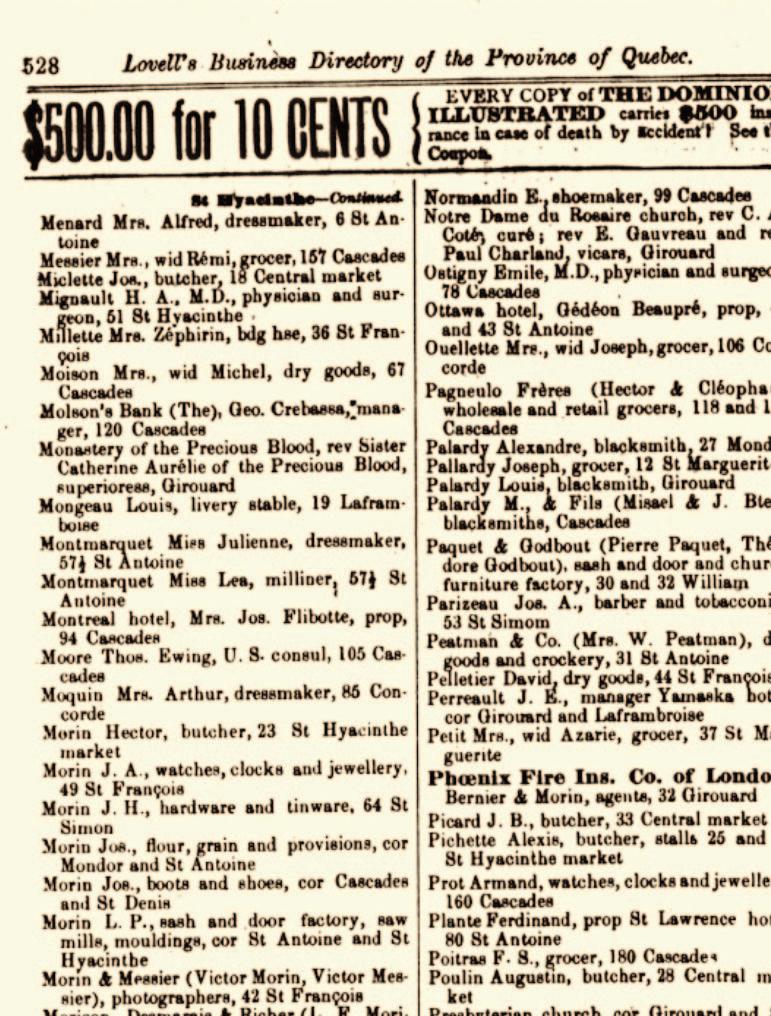

Woodbury & Page and, almost simultaneously, Frederik Daniel van Rosmalen Jr. (1848-1891)
Théo van Gogh at the Age of 32, Amsterdam, 1889
Albumin print on cabinet card Van Gogh Museum, Amsterdam
The existence of two nearly identical portraits of Théo van Gogh, taken during his 1889 wedding in Amsterdam, suggests that the first shot may not have been satisfactory. However, another hypothesis is that photographers from both studios were present during the wedding preparations, which would explain why two portraits were taken almost simultaneously.
It is worth noting that more copies of the portrait by Woodbury & Page are found in the family archives, which could suggest a preference for this photograph.
Furthermore, the portrait of the young bride, Johanna, was also taken by the same Woodbury & Page studio, reinforcing this hypothesis.
The main difference between the two portraits of Théo lies in one ear appearing more prominent than the other—sometimes on the left, sometimes on the right. Could this detail have been the deciding factor in favor of Woodbury & Page? It remains difficult to say definitively.


Ferdinand Reissig
Cor van Gogh at the Age of About 18 or 20, Breda, Around 1885-1887
Two Albumin Prints on Cabinet Card
Van Gogh Museum, Amsterdam
Cornelis Vincent, known as Cor van Gogh, the youngest brother of Vincent, was born in May 1867, 14 years after his elder sibling, with whom he had limited contact during his life. In 1871, he moved with his parents and sister Willemina to Etten, where his father had been appointed pastor. It was there that Cor completed his primary and secondary education.
In 1889, at the age of twenty-two, Cor emigrated to the Transvaal province in the South African Republic, as part of a wave of Dutch emigrants drawn by opportunities in gold mining or military service. Cor initially worked in a mine in Germiston before being hired as a draftsman for a Transvaal railway company.
During the Second Boer War against the British, Cor joined a Boer commando unit and was taken as a prisoner of war by the British in March 1900. He fell ill and died in the Brandfort prisonerof-war camp in the Orange Free State.
Vincent, Théo, and Cor also had three sisters:
• Anna Cornelia van Gogh (born in 1855)
• Elisabeth Huberta (Lies) van Gogh (1859)
• Willemina Jacoba (Wil) van Gogh (1862)

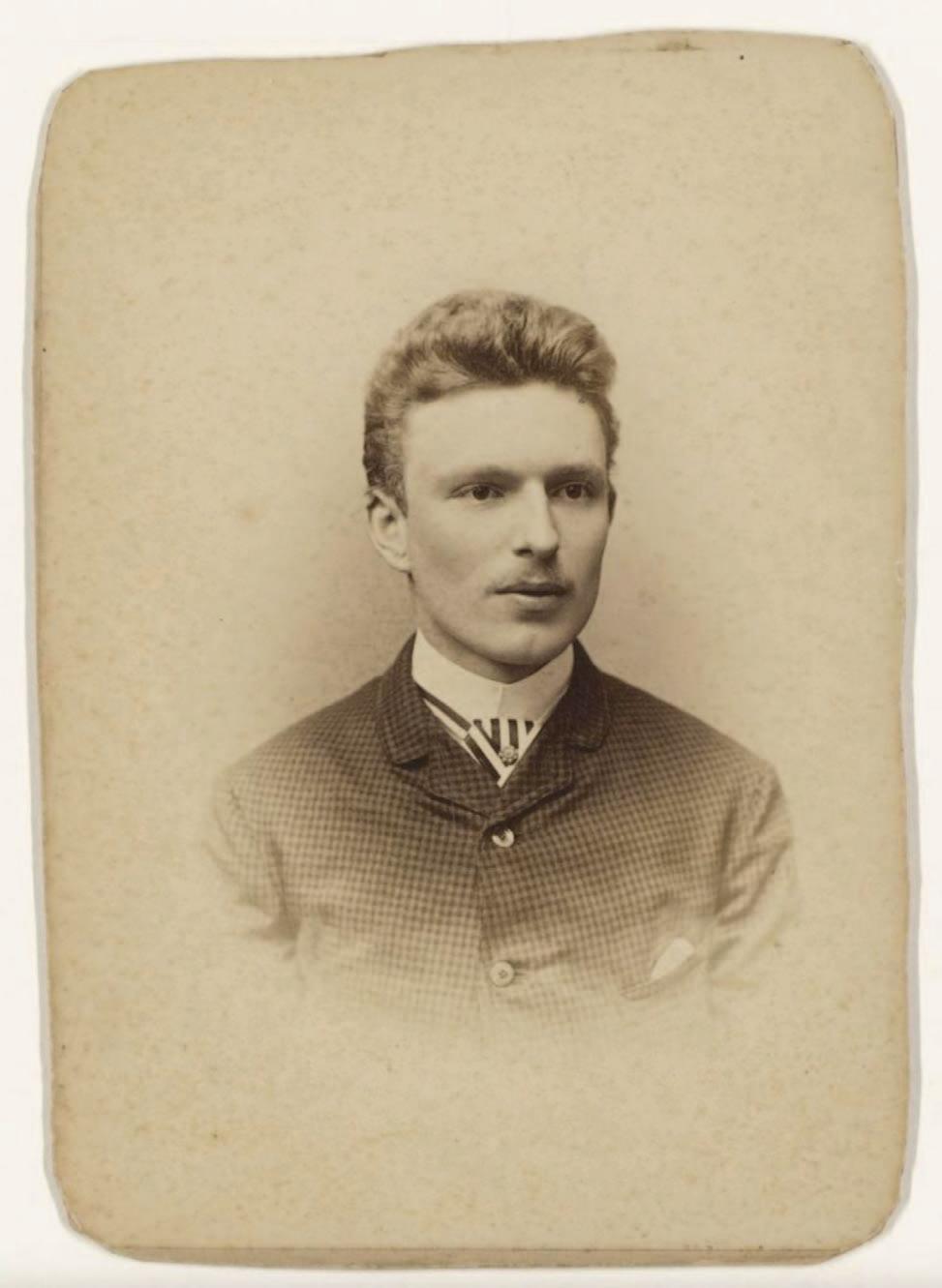
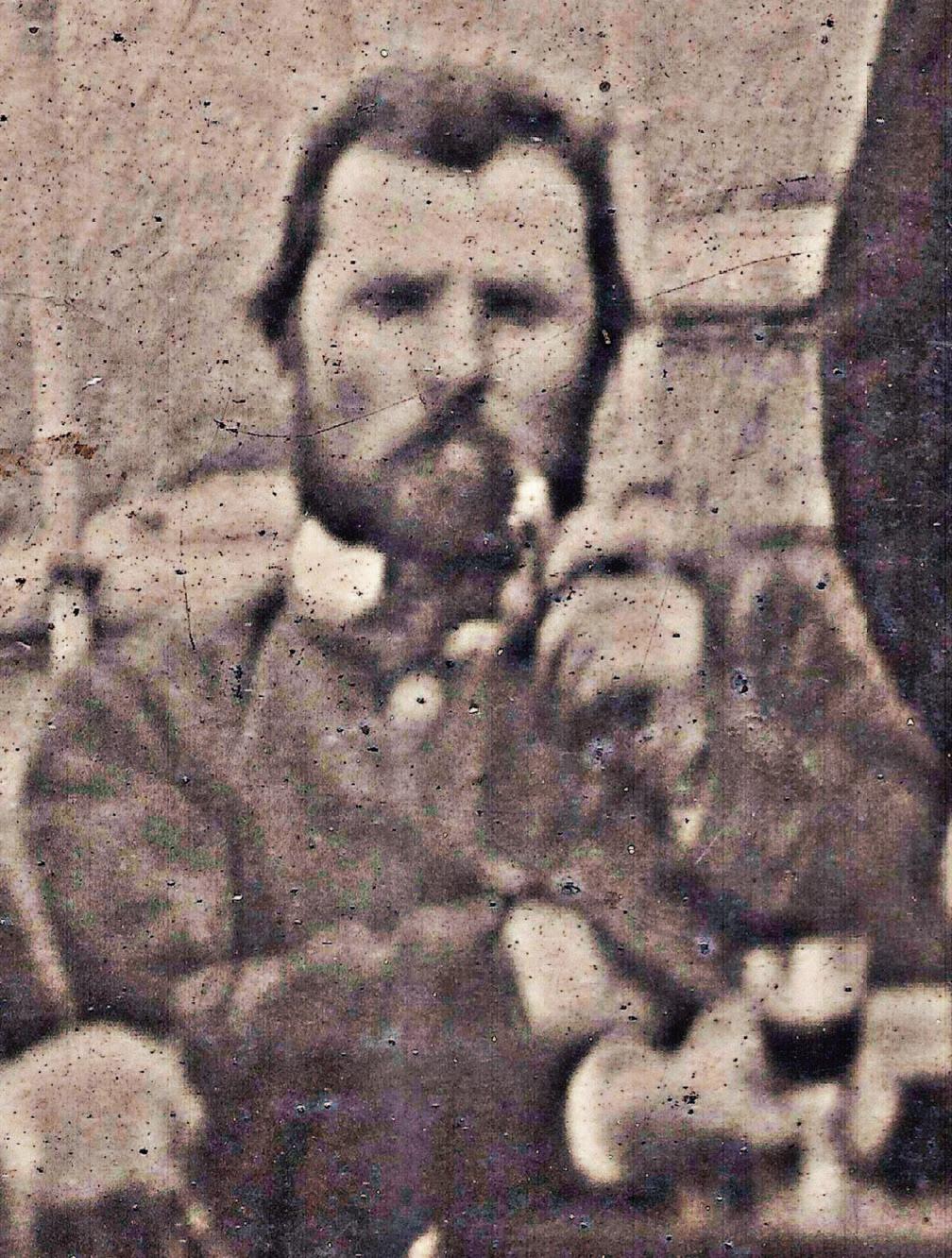
• Provisional Conclusion of the Investigation
Photographer of 96-98 rue Blanche
Vincent van Gogh Surrounded by His Friends, Late November-Early December 1887
Direct print on blackened card, 90x118 mm, Gautier-Martin stamp
Private collection, New York
This photograph captures a pivotal moment, marking both the exchange between Van Gogh and Gauguin and the disagreement with Émile Bernard.
In 2024, the potential discovery of an unpublished photographic portrait continues to raise fascinating questions, particularly about authentication methods. At a time when technological advances and occasionally dubious scientific evidence increase skepticism, caution is essential.
The pleasure of this investigation lies in the exploration of various leads, where every detail matters. Each clue collected becomes a piece of the puzzle, opening up new perspectives. The inquiry combines historical rigor, stylistic analysis, and archival research, offering an intellectually stimulating adventure where uncertainty coexists with the excitement of discovery.
By making this work public, we hope to spark a constructive dialogue, allowing each element to be strengthened or refuted by well-founded arguments. It is in this spirit that the Van Gogh Museum in Amsterdam chose to reassess its stance on the presumed photographic portrait of Théo van Gogh, demonstrating openness toward new discoveries and evolving research.
In the early days of photography, every image—whether a portrait or a landscape—required meticulous preparation. The technical and financial constraints were such that only an urgent reason or a special occasion could justify a photograph. This is why the analysis of the motivations behind the creation of an image plays a crucial role in historical investigations.
When examining the photographic history of the Van Gogh brothers, whether real, imagined, or supposed portraits, one realizes that these occasions were rare. For instance, the portraits of Théo in Brussels and Vincent in The Hague, taken when they were professionally hired by their uncle “Cent,” are official images intended for a specific purpose. These calibrated portraits resemble modern employee photographs.
Some researchers have since examined class photographs taken at art academies, hoping to spot famous artists like Van Gogh. Every year, a photographer visited major art schools, such as the École des Beaux-Arts or the Académie Julian, to immortalize the students.
However, despite this tradition, no convincing image of Vincent has been found in these archives.
Other scholars have turned to the personal archives of Vincent’s relatives to find clues.

For example, Émile Bernard’s son, even though his father had sold all the Van Gogh works in his possession, hoped to find a photo of Vincent’s back. Similarly, in the Villeroy & Boch archives, a profile that might have been Van Gogh’s was ultimately identified as that of his friend Boch in Arles.
More enthusiastic or less rigorous researchers have continued their investigations through tenuous resemblances, going so far as to identify a portrait taken in Quebec as supposed evidence of Van Gogh’s passage in a small Canadian town. The search for the lost photographs of the Van Gogh brothers continues…
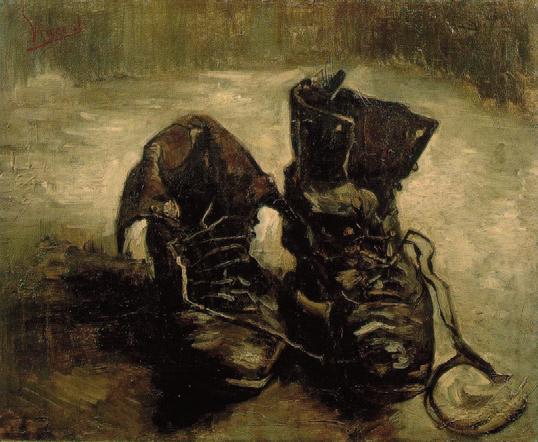
e English version of Issue 3 of Nicephore magazine is printed in just 300 numbered copies by Pixart near Venice on October 22, 2024.
Numbered copy ...
Recently, a remarkable exhibition at the Musée d’Orsay, dedicated to the last three months of Vincent van Gogh’s life in Auvers-sur-Oise, has rekindled public interest in the artist’s work and life.
While this group portrait offers a somewhat blurred image of Vincent van Gogh during his time in Paris, it holds significant importance. It documents a crucial period in the artist’s life when he was surrounded by close friends in the capital.
This photograph was taken on a particularly eventful day, marking both the exchange with Gauguin and the dispute with Bernard.
That altercation was followed by Van Gogh’s first letter to Bernard, which initiated an important correspondence. Paul Gauguin’s first letter to Van Gogh also references this day.
Historians will have ample opportunity to shed light on how this Parisian episode may have influenced Van Gogh’s departure for Arles, a prelude to the decisive period of his career.
An exhibition will accompany this publication, which will be available in English, Italian, and French, allowing the public to form their own opinions.
All comments are welcome, and contributions from institutions and specialists will be received with the utmost respect and attention.
